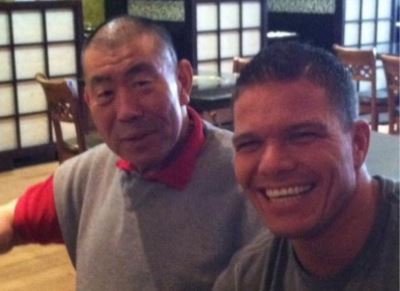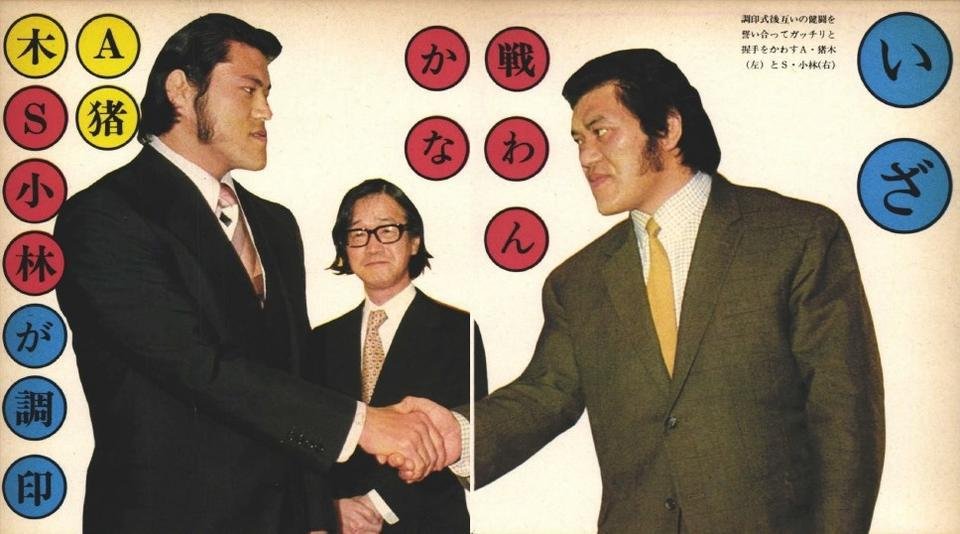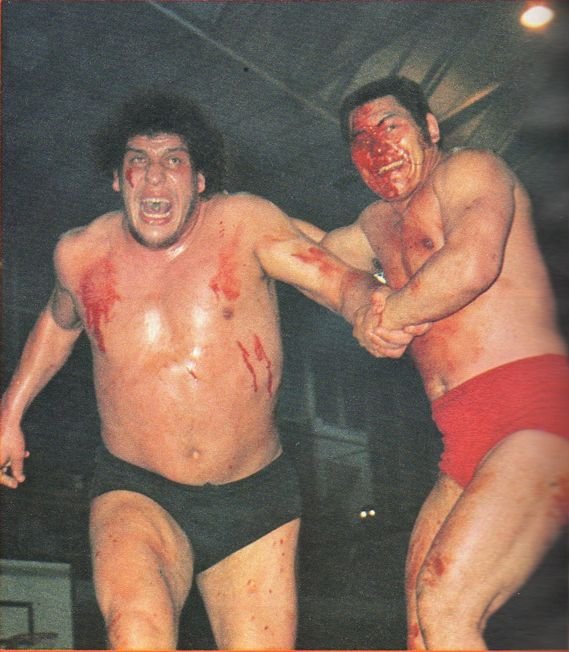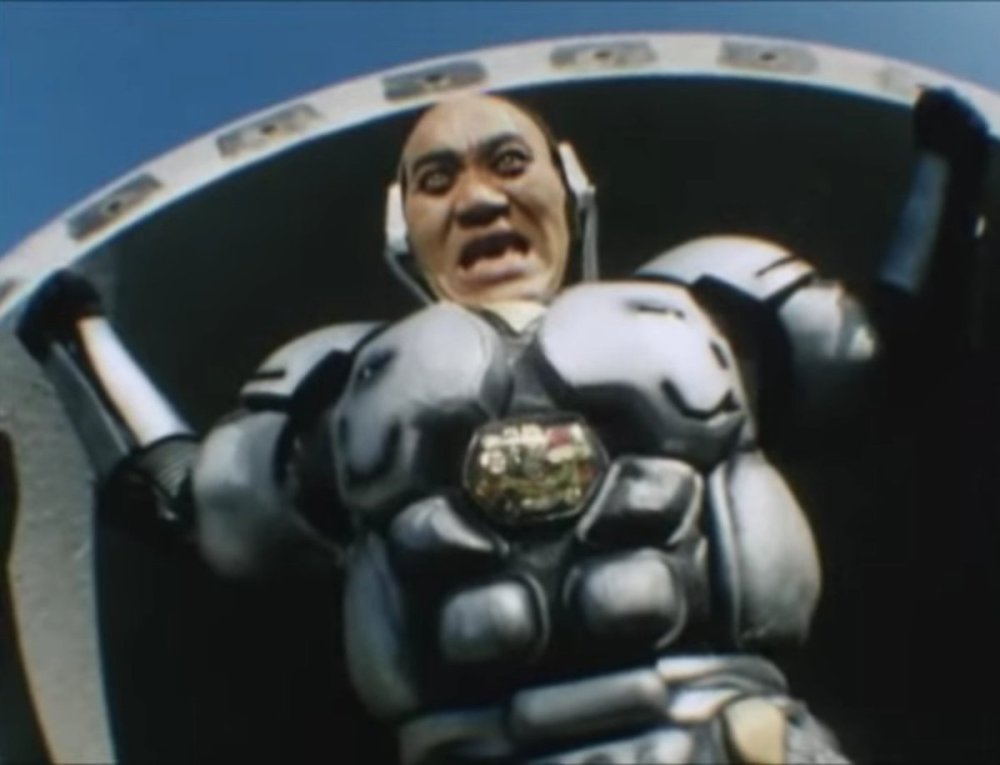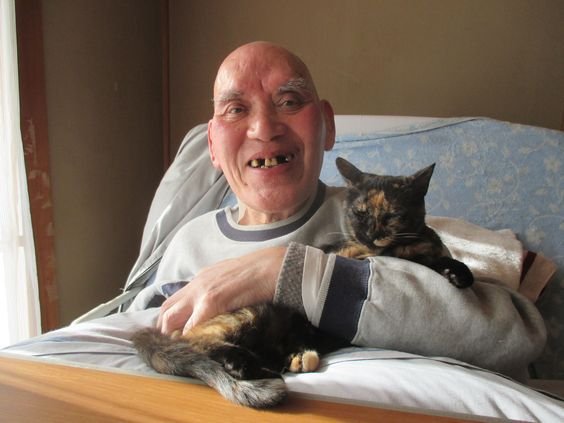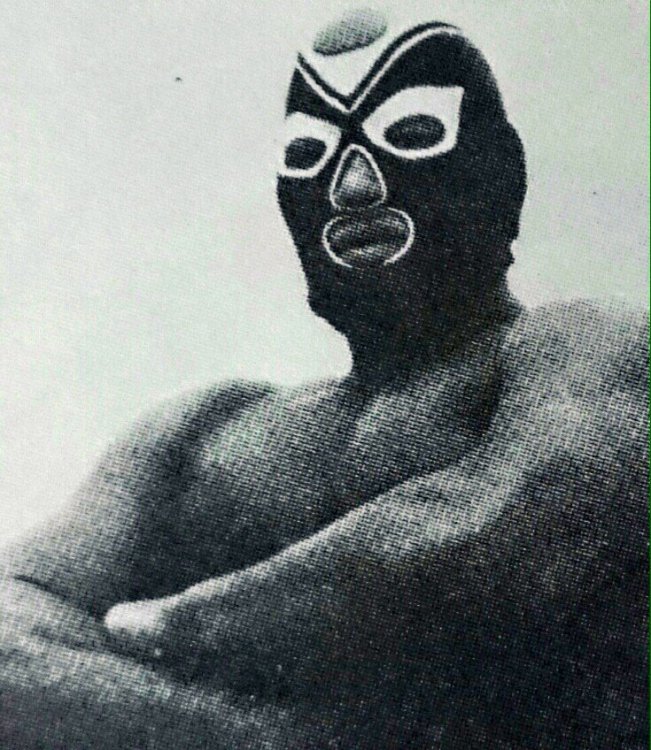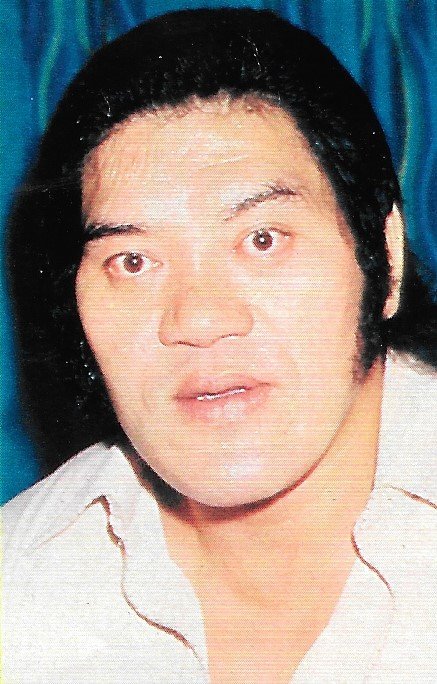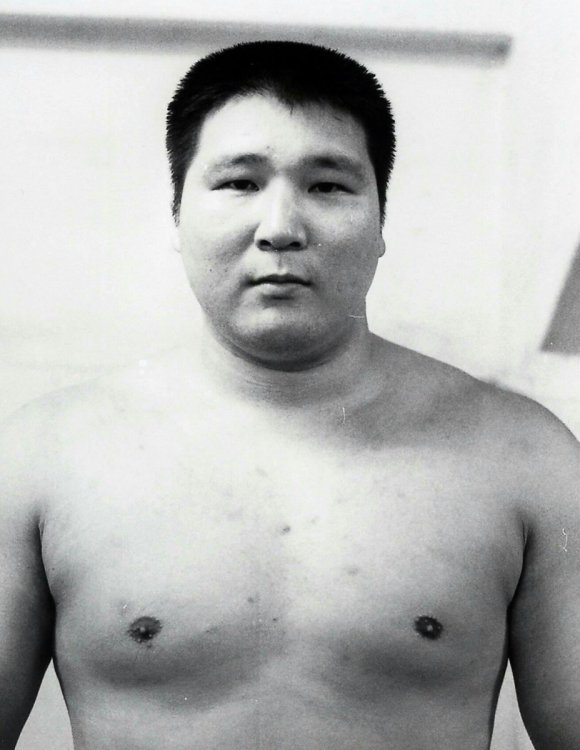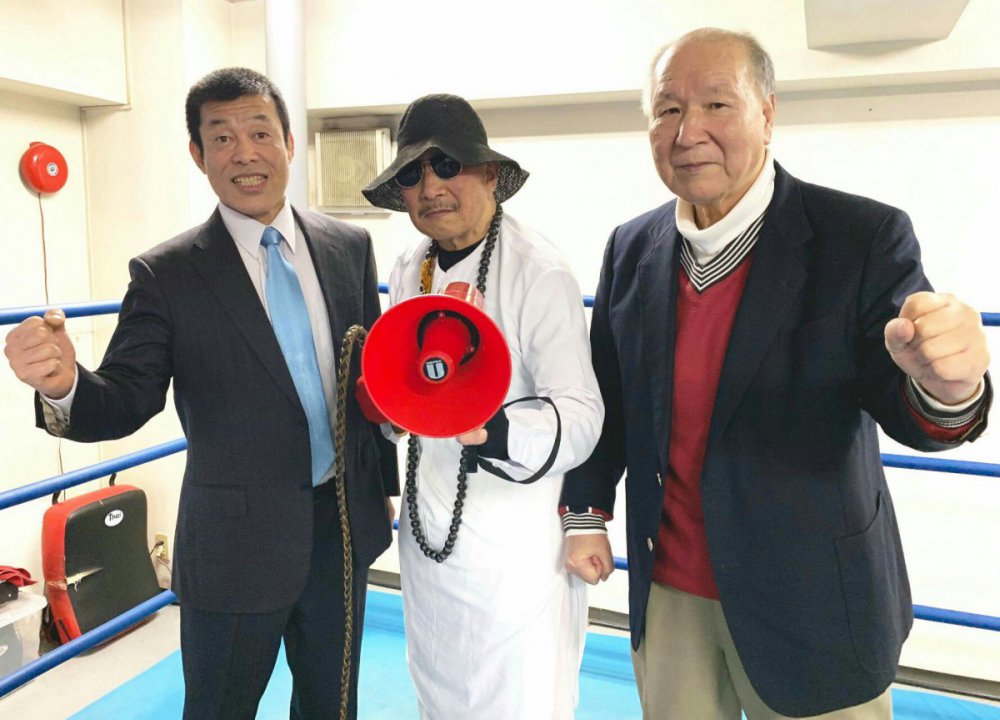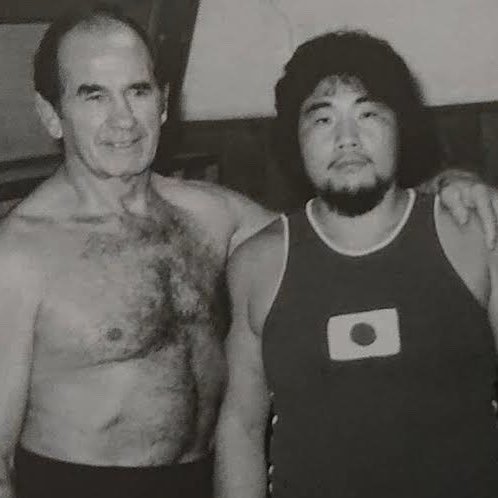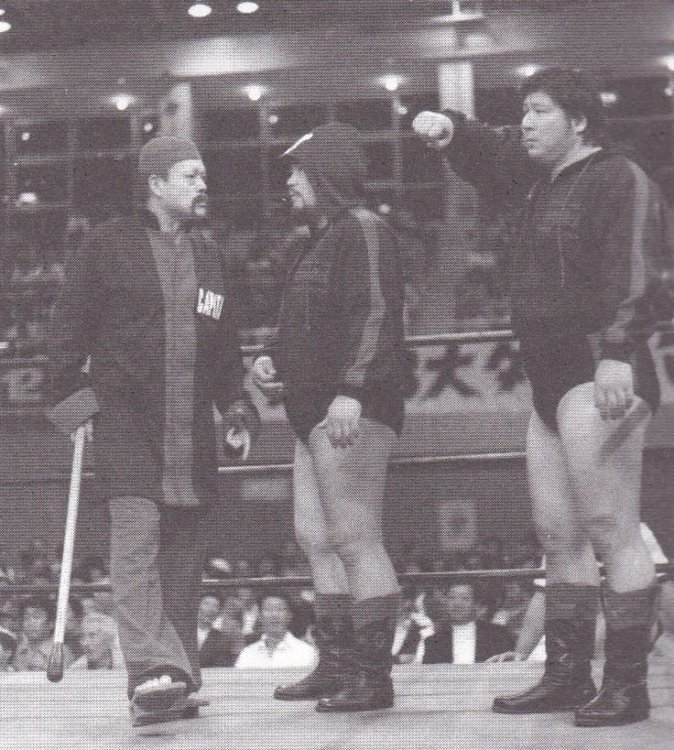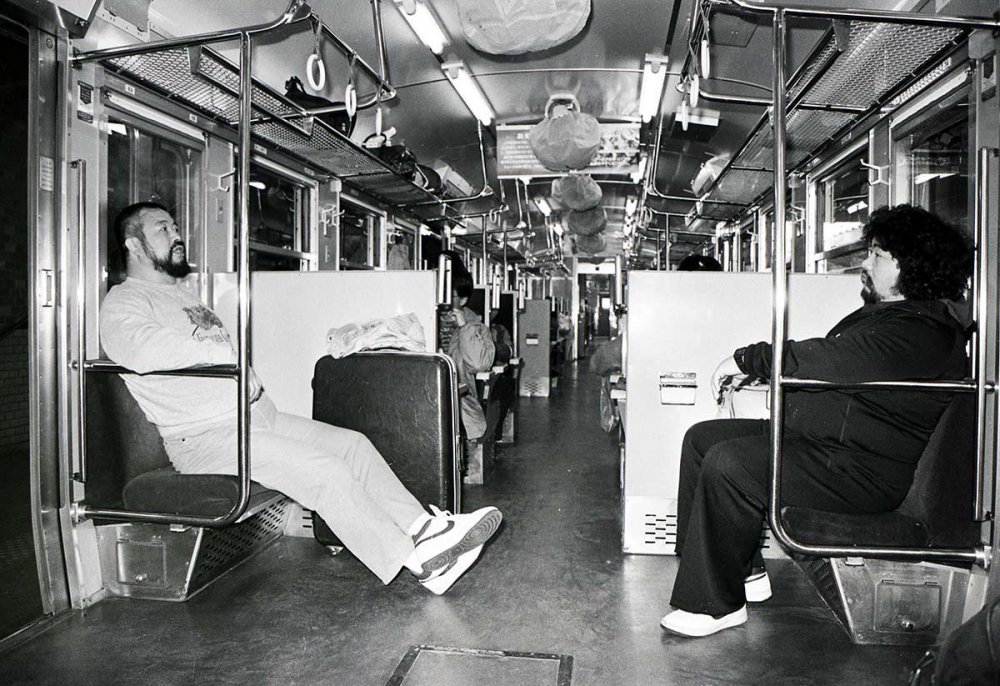-
Posts
422 -
Joined
-
Last visited
Content Type
Profiles
Forums
Blogs
Everything posted by KinchStalker
-
PART FOUR: ENDURE AND BURN (1989-2010) Rusher Kimura’s final title shot came in February 1989. By this point, Giant Baba had begun to hold secret creative meetings with Weekly Pro Wrestling editor-in-chief Tarzan Yamamoto and All Japan reporter Hidetoshi Ichinose. Central to Yamamoto’s strategy to revitalize AJPW was a focus on its shows in Korakuen Hall, and several matches were booked early in the year to stimulate the “myth” that he believed the company needed to develop. One of these matches, which occurred on an untelevised show on February 25, was Baba & Kimura’s shot at the Olympians’ AJPW World Tag Team titles. The “Brother Combi” survived for twenty minutes until Kimura took a Tsuruta pinfall. Rusher in the Brother Combi's famous 1989 RWTL match against Genichiro Tenryu & Stan Hansen. Kimura only had half a dozen televised matches that year, all of which took place in its second half. Two of these were six-man tags with glimpses of the comedic tradition that was soon to develop in AJPW’s midcard. For instance, see the match on the July 16 Bruiser Brody memorial show, in which Baba & Kimura teamed up with John Tenta against Tsuruta, Masanobu Fuchi & the Great Kabuki. In the match’s most memorable spot, Tenta teased a tope against Kabuki before Rusher blocked him from going through (and possibly breaking the ring in the process). His most famous televised match of the year came during the 1989 Real World Tag League, when he & Baba faced Genichiro Tenryu & Stan Hansen in a doomed Sapporo standoff on November 29. It is one of my favorite matches of all time, and a career highlight for Kimura. As Hidetoshi Ichinose covered in his 2019 book, this match helped All Japan build a strong foothold in the northern city, as it was their last show at the Nakajima Sports Center for six years to draw under five thousand. That was the last RWTL that the Brother Combi would enter together. While Baba continued to participate in the tournament through 1996, Kimura only worked the next two iterations alongside Mighty Inoue. In spring 1990, Rusher began a feud with Tenryu—even using poison mist for the first time in his career in a tag match—that was aborted by Tenryu’s departure for SWS. (Kimura struck at Megane Super in a promo as retaliation, urging the audience to never buy glasses from them.) Two years later, when Akira Taue was injured in the Champion Carnival tour, Kimura was slotted in his place for the most ambitious match of early-90s All Japan: the first “survival tag” at the 1992 Fan Appreciation Day show. A tag-team analogue to NJPW's 5vs5 gauntlet matches, it was conceived by booker Masanobu Fuchi as an attempt to top the already-legendary 1991 Fan Appreciation Day six-man. But these were outliers in Kimura’s work from this point forward. Baba and Kimura formed the core of the Family Gundan faction, whose six-man matches against their “villainous” counterpart Akuyaku Shokai, which were nicknamed the Fami-Aku Kessen (“family-bad showdown”), became a staple of the All Japan product. This formula allowed Baba and Kimura to continue to work in a comedic and low-impact style in provincial markets where they were still primary draws. The early departure of the Great Kabuki (and an unsuccessful attempt to bring Goro Tsurumi on board, before he went for SWS like Kabuki) left the role of their third partner to often fall on Mitsuo Momota, who had long been known as AJPW’s “6:30 Man” for his ubiquity as a barrier for young wrestlers on opening matches. Much of the motion in Fami-Aku matches was between Momota and Haruka Eigen, Akuyaku Shokai’s most consistent member. Their dynamic was likely influenced by Eigen’s undercard matches against Don Arakawa in early-80s NJPW. But it was Rusher who would often facilitate one of Eigen’s staple spots, in which Kimura would bend Eigen back while he stood on the apron and chop him in the chest, causing Eigen to spit hard into the crowd. (While I have not researched enough to confirm this myself, Kimura may have inherited this spot from Akuyaku member Motoshi Okuma. He is seen performing the spot in a September 1989 singles match against Eigen, which was broadcast in 2022.) Kimura may have been one of the least mobile performers in these matches, but his character was a crucial component, and his postmatch promo was a highlight of the AJPW house show. Kimura gets a laugh from the comedy duo Utchan Nanchan, appearing as guest commentators. Kimura’s promos were not popular with their targets, but Baba, Okuma, Eigen, and Fuchi all had to grin and bear them because of their popularity with audiences. Fuchi was the target of one of Kimura's greatest bits. Night after night, Rusher roasted All Japan's eternal bachelor. He offered Fuchi's hand to an elderly spectator. He said he would offer the hand of a family member, before quickly retracting that out of the dreadful proposition of becoming Fuchi's brother-in-law. On one occasion, he recited haiku for each of his opponents, ending with the punchline "Fuchi, get a wife soon" (“Fuchi senshu/omae wa hayaku/yome morae”). Fuchi's mother once called Kimura's house, telling Hiroshi to tell his father "not to say bad things about her son". He did not stop. Kimura in an advertisement for Teppan noodles. AJPW trainees Satoru Asako and Masao Inoue blow into the furnace. Kimura's promos revitalized him as a presence in popular culture. Rusher appeared on talent show Yuji Miyake's Isu Band Heaven as a celebrity judge in 1989. On Ken Shimura's sketch comedy show Shimura Ken no Daijōbu Da, ensemble member Nobuyoshi Kuwano performed a Kimura impression that would interrupt sketches to cut promos. While he cut his promos off the cuff, and Mitsuharu Misawa’s later suggestions of topical material were ignored, Kimura took his house show promos seriously. It has been corroborated by Jun Akiyama and Kyohei Wada that Rusher researched local landmarks, famous persons, staff at the venue, and more. In a 2020 column for Tokyo Sports, Wada recalled that, after his face turn, Rusher began to ask him about local specialties before each match: “In Akita, it would be kiritanpo, in Hakata, mentaiko (cod roe). In Nagoya, he would say, ‘Fuchi, today we will have a bowl of chicken wings and finish with miso nikomi udon.’ In Sapporo, ‘Fuchi, you were unusually spirited today, but you ate Jingisukan ["Genghis Khan"; grilled mutton] before the match, you son of a bitch.’” Even the low-impact Fami-Aki matches took a toll on the broken man. Kimura received a special ankle cast from Baba, which he was forced to wear under a ring shoe. (Hiroshi remembers being concerned about its tightness.) The walk to the ring was the worst part of his job, and Rusher hated stage sets with steps. Despite this, Kimura would join NOAH in 2000 as its eldest charter talent. On June 24, 2001, he wrestled a 60th birthday match with Momota against Eigen & Tsuyoshi Kikuchi. Even with the death of Baba and the absence of AJPW remnant Fuchi, NOAH featured spiritual successors to the Fami-Aki matches of the previous decade. A new bit from this period came in the ring, where Kimura would attempt to finish a match with an exploder suplex but was always cut off. His final match came on March 1, 2003, a tag with Momota against Eigen & Kishin Kawabata. Kimura was sidelined after this for poor health. He went to Keio University Hospital for rehabilitation, but by this point, his back and legs were so damaged that even sitting down was too much. The surgery during his All Japan years had not gone well, and Rusher’s spinal stenosis had only worsened since. That July, Kimura suffered a stroke while at a sauna. However, Rusher did not disclose this to NOAH. Hiroshi states that his father wanted to die in the ring, and that Rusher had told Misawa and NOAH director Kenichi Oyagi that “he could walk if his back stopped hurting”. According to Hiroshi, Kimura did not know that it would be impossible for him to wrestle again after the stroke, and Misawa had taken him at his word. NOAH threw money towards a rehabilitation that never would have been successful, as Misawa searched for doctors to help Kimura recover. NOAH rented an apartment in Tottori for Kimura to work with a sports therapist. In a revealing anecdote, Hiroshi recalls a major argument with a NOAH employee who, unaware of the severity of Rusher’s condition, had prepared a bed for able-bodied people that his father never could have slept in. To Hiroshi, it is clear that they wanted Kimura to return for Departure, their first Tokyo Dome show in 2004. Oyagi went so far as to say that he didn’t care if he had to come in a wheelchair. But Kimura did not want to. He ultimately recorded a promo for a video package to be played during the show, but even this had been something he felt “made to do”. As hard as it was for him, though, Hiroshi remembers something Oyagi had said when Kimura stopped wrestling: “Mr. Kimura, you’re a lucky man. If this had happened in All Japan, you would have been fired.” Misawa appointed Kimura as an honorary chairman as a way to give him a pension. This lasted for the rest of Kimura’s life, although his pay was cut in half around 2007 due to NOAH’s financial difficulties. He continued to watch NOAH, and Hiroshi recalls that he had much to criticize, but praised little save for Kenta Kobashi. Still, Kimura never lost his love for wrestling. His last public appearance was at Misawa’s private funeral, which Hiroshi had insisted he come to. None of NOAH’s talent had been able to visit Rusher due to Oyagi keeping his location private, but all of them, as well as other attendees, were glad to see Kimura again. He would admit afterwards that it had been a good thing that he had come. Eleven months later, on May 24, 2010, Masao Kimura died of pneumonia and diabetic complications. Notes The title of this last part is a quote from Kimura’s postmatch promo to Baba on June 1, 1991, which saw Baba’s return to the ring after the 1990 RWTL injury. For the rest of his career, this quote was featured in Rusher's profile in the annual directory issues of Weekly Pro Wrestling.
- 3 replies
-
- jwa
- tokyo pro (1966-67)
- (and 6 more)
-
UPDATES, AUGUST 2022 I began my first Deluxe Profile for Rusher Kimura. I have released three of the four parts I plan to write for him. Part Four will be worked on in September, although I intend to shift my focus back to transcribing resources for personal research rather than writing these profiles, at least for the time being. New Profiles Rusher Kimura (Wrestler, JWA/Tokyo Pro/IWE/NJPW/AJPW/NOAH)
-
PART THREE: THE BIRTH OF THE BARKING WARRIOR (1981-1988) On September 23, 1981, New Japan Pro-Wrestling ran the Denen Coliseum in Tokyo. Overflowing with an announced attendance of 13,500, the show is most famous in the West for the semi-main event, a clash of the titans between Andre the Giant & Stan Hansen. It was after that match, though, that the next chapter of Rusher Kimura’s story began. Before Antonio Inoki’s match against Kim Duk, Kimura and Animal Hamaguchi came to the ring. A match between Inoki and Kimura was set for October 8 in Kuramae, six years after Kimura had challenged Inoki. When announcer Masaki Hosaka asked Kimura for a comment, Rusher’s first word was a polite “good evening” (konbanwa). Animal Hamaguchi would salvage the segment, cutting a terse, aggressive promo that saw him provoke IWE traitor Ryuma Go at ringside. But the taciturn ace’s gaffe drew laughter from the crowd, and even became something of a meme in its day, turning into a Beat Takeshi joke. Hamaguchi would later say that it was the first time that Rusher had spoken to the fans from his heart. Kimura would not lean into cutting promos for several more years, but this would be the point on which his whole career pivoted. (This promo is featured in the intro for Inoki and Kimura's first match on NJPW World.) Kokusai Gundan trains. After Kimura, Hamaguchi, and Teranishi stormed the NJPW dojo on October 2 to stoke the hype, Rusher got his match. He was not only accompanied by the aforementioned two, but by Strong Kobayashi. Kimura claimed that he had developed a “liver-breaking buffalo strike” as a counter for the enzuigiri, but he never got the chance to use it. The match ended in a DQ victory for the invader, as Inoki refused to recognize a rope break on his armbar. This gave the Kokusai alumni a 2-1 victory over New Japan on the show, as despite Teranishi’s loss to Tatsumi Fujinami, Hamaguchi defeated Go in his match. The corresponding episode of NJPW program World Pro-Wrestling drew a 20.5% rating. On November 5, Kimura wrestled Inoki again, this time in a heated lumberjack match. Inoki got the arm again, and Hamaguchi threw in the towel. After this, the Kokusai Gundan faction began regular work in New Japan. Kimura’s salary, which was “a different order of magnitude” from his Kokusai days, was no longer dependent on how many dates he worked. Make no mistake, though, he earned his pay. Over the next year, Kokusai Gundan became the most hated heels in Japan, through angles such as assaulting commentator Ichiro Furutachi and abducting and beating Inoki in the waiting room. (Hiroshi recalled that there were a lot of review meetings, and that since his father never picked up the phone, he himself would talk with Hisashi Shinma or Seiji Sakaguchi about how the latest Kimura-Inoki match went and what to do next.) This had consequences in his personal life. Kimura’s house was egged and repeatedly subject to games of ding, dong, ditch, while Hiroshi remembers that, when they took their dog on walks, passerby would feed him “strange things”. Kimura would later say that the property damage itself had not bothered him as much as its effect on their dog, for whom the stress induced severe alopecia. Kimura takes an Inoki enzuigiri, c. 1983 Kimura and Hamaguchi entered the year-end MSG Tag League together, placing sixth with eighteen points. In spring 1982, Kimura went on a short American excursion for his first dates outside Asia since the 1972 European excursion. In Los Angeles, he and Go enjoyed a brief reign with the NWA Americas Tag Team titles. Upon his return, the second phase of the Inoki-Kimura feud saw a hair vs hair match on September 21. During an outside brawl segment, Hamaguchi cut Inoki’s hair when Kobayashi handed him a pair of scissors. While Inoki won, Teranishi ran into the ring and got Kimura out of the arena before he could receive his punishment. Despite Hisashi Shinma ordering Don Arakawa to cut his hair instead to try to make it up to the fans (which Kotetsu Yamamoto interrupted), Kero Tanaka’s announcement that Kokusai Gundan had disappeared from the locker room led some fans to storm into the room and throw chairs against the door, shattering the glass before being convinced of their absence (and calmed by a speech from Seiji Sakaguchi). The ensuing one million yen’s worth of property damage led the Osaka Prefectural Gymnasium to ask New Japan to ban Kimura. The next main event in the venue saw Inoki & Fujinami wrestle Kimura & Hamaguchi the following month, and riot police were deployed. After the New Japan team won, Teranishi came in with scissors in hand, but Inoki snatched them and cut Teranishi’s own hair to the fans’ delight. This led to what would be a pair of three-on-one handicap matches, both of which Inoki lost. However, initial announcements that Kimura would team up with the now-renamed Strong Kongo in the 1982 MSG Tag League would not come to pass due to Kobayashi’s hurt back. Hiroshi recalls that his father never spoke ill of Baba no matter how drunk he got, but that one could not say the same about Inoki. When Inoki and Shinma’s efforts to fundraise for Anton Hi-Cel deducted from the wrestlers’ salaries, Kimura exclaimed, “here we go again”. Nevertheless, Kimura’s stepson considers his New Japan tenure the peak of his career. Kokusai Gundan collapsed in 1983. Hamaguchi left the group due to a trivial error during a six-man tag in April; he held Inoki in place for a Rusher lariat, but Inoki dodged and Hamaguchi took the move, after which he “lunged” at his partner. Hamaguchi would eventually join Riki Choshu’s Ishingun. Teranishi, meanwhile, would align himself with Kuniaki Kobayashi that summer in an attempt to dethrone Tiger Mask. This left Kimura to wrestle alongside foreign heels such as Abdullah the Butcher and Bad News Allen, as well as do the job to Inoki in a pair of singles matches on the Bloody Fight Series, the first NJPW tour after the infamous coup had begun. Kimura's second excursion of the 80s followed thereafter, as he worked a few dates in Stampede Wrestling. An illustration of Kimura singing a jinku, drawn for an article in Deluxe Pro Wrestling magazine (January 1980). Kimura worked the first New Japan tour of 1984 but was the first native talent to disappear to join the UWF. The interview with Hiroshi Kimura which I have used as a source, which was printed in a 2018 issue of G Spirits, mentions a rumor that Rusher’s transfer to the UWF was by Inoki’s choice. Hiroshi admits he doesn’t know, but that “there were signs he was going to move to the UWF no matter what,” between the ending of the Inoki program and NJPW’s talent surplus. Alongside fellow IWE alumnus Ryuma Go, Kimura worked the UWF’s first shows in April. After this, they went to work for Stampede that spring. During a match against Bad News Allen, Kimura’s throat was crushed by a lariat. Hiroshi’s recollection that his father had had a singing voice “like Frank Nagai” might seem inflated by sentiment, but Rusher’s skill at karaoke had been contemporaneously reported on. It had even been tradition in the IWE for Kimura to start the first show of each year by singing a jinku (traditional sumo folk song). As Haruka Eigen and Joe Higuchi confirmed to Hiroshi after the autopsy, his larynx never fully healed. But the croak of a voice that resulted would be a crucial component of the entertainer that Rusher Kimura became. Kimura and Go continued to work for the UWF through early September, with Rusher going undefeated. They both would leave in the autumn. Go had used his connections to book foreign talent, but the men he brought were incompatible with the martial-arts direction that the promotion shifted towards after Satoru Sayama's signing. He would quit, and Kimura would follow him. Isao Yoshiwara, who was hired as an advisor to New Japan in the middle of the year, attempted to court his old employee for a return. But then, Giant Baba himself invited Kimura to dinner. It was the fifth transfer of Rusher's career. It was the first that he made of his own volition. Kimura was announced as Giant Baba's "mystery partner" in the 1984 Real World Tag League. With just two points, they were already sure to be Baba's worst-performing team in the annual tournament when they faced Jumbo Tsuruta and Genichiro Tenryu on December 8. But during that match, Kimura turned on Baba when Go came up to the apron. Striking his partner with a lariat, Kimura’s team broke up then and there, with Go and Goro Tsurumi at ringside. Kokusai Ketsumeigun poses with a sculpture of Giant Baba at the Sapporo Snow Festival, and makes their feelings known. The true plan for Kimura took shape. Kokusai Ketsumeigun featured most of All Japan's ex-IWE talent, from Tsurumi (who would wave a Japanese flag in their entrances, a sight reminiscent of Fabulous Freebird Michael Hayes' contemporaneous use of the Confederate flag) to Apollo Sugawara and Masahiko Takasugi. When Ashura Hara returned to the company as a heel that year, he would work alongside the faction without ever fully joining it. Even Tiger Jeet Singh worked with them as something of an honorary member. Rusher’s highest-profile match from this period was on June 21, 1985, when he challenged for Baba’s PWF Heavyweight title in the main event of the Special Wars in Budokan show. This match, which happened eleven days after Yoshiwara’s death from cancer, was the last successful defense of Baba’s last championship reign, as he dropped the belt to Stan Hansen the following month. Kimura entered the 1985 RWTL with Hara, where the team scored five points in a three-way tie for last place. Overall, though, the second incarnation of Kimura's ex-IWE heel stable was far less impactful than the first. You may know that December 8, 1984 was also the date that the trigger was pulled on Japan Pro Wrestling's working arrangement with All Japan, as Riki Choshu, former Kokusai Gundan member Animal Hamaguchi, and a baker's dozen more stormed the ring at the end of the show. Kokusai Ketsumeigun could not compete with the allure of proper AJPW vs. (ex-)NJPW matchups. In fact, Japan Pro would severely damage the faction. In late 1985, the Calgary Hurricanes unsuccessfully attempted to leave NJPW and join Japan Pro. Choshu had not wanted them. He had envisioned Japan Pro as an independent organization that would work with other promotions on a tour-to-tour basis, so he saw potential for future cooperation with his former employer and did not want to further damage their relationship. Then, Baba & Inoki signed an agreement at Rikidozan's grave that winter to not swipe talent from each other. Nevertheless, the trio of Super Strong Machine, Hiro Saito, and Shunji Takano joined Japan Pro at the end of the fiscal year. This was a mortal wound, as Go, Sugawara, and Takasugi, alongside referee Mr. Hayashi, all fell victim to budget cuts. Hiroshi remembers that his father was devastated. Even with the reliable support of Tsurumi, Kimura struggled to make television afterward, while Hara started working more with the Hurricanes. Another singles match against Baba in the Budokan happened in June 1986, but tellingly, it was not the main event. Kimura and Tsurumi ride the train to their next match, due to the overcapacity of the foreign tour bus. (c. March 1988) Gradually, Kimura found his voice in All Japan, and I mean that literally. Kimura’s television appearances began to make time for his postmatch turns on the microphone. The earliest example I could find of the Rusher “microphone performance” in the proper sense (that is, which drew laughter from the audience) was from a February 1987 show in Korakuen Hall. I was able to match a couple of captioned early Rusher promos from a compilation in a 1991 television segment to transcripts on his Japanese Wikipedia page. In one (at 0:51), Kimura blamed his loss to Baba on his failure to eat fifteen pieces of yakiniku, before vowing to eat twenty and “beat the son of a bitch”. Hiroshi admits that the Rusher Kimura of old was gone by this time, but the character that emerged during this time was much closer to who his father actually was, at least when he’d had a little to drink. His son expresses pride that he was not just a “salaryman wrestler”. On August 29, 1988, Kimura and Baba wrestled one last singles match. After his loss, he took the microphone and asked that Baba let him call him his older brother. In his promos, Kimura would call Baba aniki from that day forward. Referee Kyohei Wada recalled that “the Budokan went boom”, totally embracing Rusher’s face turn. That year, Kimura and Baba joined forces for the Real World Tag League. Far from the poor performance and late-term breakup of their previous showing, the team notched a decent 13 points. Weekly Pro Wrestling coverage of Kimura and Baba’s final singles match. [Issue #276; 9/14/1988]
- 3 replies
-
- jwa
- tokyo pro (1966-67)
- (and 6 more)
-
PART TWO: THE TRAGIC ACE (1974-1981) The first tour of 1974 wasn’t especially notable for Rusher. The one piece of interest was a mask vs hair match which he won against masked heel the Jackknife; this turned out to be Oliva Asselin, one of the wrestlers who worked the 1951 Japan tour that had helped establish pro wrestling in the country. Of course, this tour was of great significance to the promotion. On the last day, Strong Kobayashi turned in his notice and relinquished his titles. He had had enough of internal factors within the company which hinged on Kusatsu, who by this point had become Kokusai’s booker. As an analysis in Showa Puroresu notes, Kusatsu had booked himself, Kobayashi, and Kimura in a roughly equal amount of main and semi-main events; due to the company’s incentive structure, this had made all three receive essentially the same amount of bonus pay in the latter half of 1973. This was on top of Kusatsu’s penchant for “sports club style” bullying, which testimonials from the likes of Goro Tsurumi have claimed extended to Kobayashi. Although I have not confirmed whether this would have happened regardless of the ace’s departure, it was also around this time that TBS canceled their deal. After Kobayashi's departure, Kimura was appointed a "wrestler management director". Kokusai then held their first tour in seven years without network support. According to Showa Puroresu, Kokusai had planned to groom Tetsunosuke Daigo as Rusher’s successor in the wire mesh deathmatch. This plan was thrown out the window when, just before he was scheduled to return from Canada, Daigo lost his right leg in an auto accident. This tour would hinge on the kanami stipulation, with ten out of its sixteen main events being held in the cage. It also received support from All Japan Pro Wrestling, as Giant Baba led a crop of talent (Jumbo Tsuruta was overseas at the time) to support the IWE. This saw Kimura team with his future tag partner for the first time. TBS executive Tadao Mori gave Kokusai a lifeline by connecting them to the Tokyo 12 Channel network. The head of its sports department, Tsuyoshi Shiraishi, was hesitant to pick up the IWE, and would only do so on the condition that they started a women's division for continuity with T12C’s own experience in joshi broadcasts. The pressure was on Rusher in a pair of one-off television broadcasts, where they had to draw ratings better than the 3% range their last TBS episodes had done to receive the go-ahead from T12C. On May 26, Kimura and Kusatsu squared off in a #1 contendership match for the IWA World Heavyweight title, which would be decided in a June 3 match against Billy Robinson. Isao Yoshiwara had suggested in an interview with Monthly Pro Wrestling that this could be “even more exciting” than the previous year’s Kobayashi-Kimura match. As Showa Puroresu remarks, though, if such a match had been held in the 1950s, it would have started a riot. Official records stated that three thousand attended the Toyota city show, but 8mm footage of the match survives and indicates that this was greatly exaggerated. As the tour’s foreigners watched at ringside, the tag champions wrestled tit-for-tat until Kusatsu hit a vertical suplex. As he went for the cover, Sailor White—who had emerged as a deathmatch adversary against Rusher the previous tour, impressing Baba enough to get booked for the second Champion Carnival, and would wrestle Kimura on June 5 in puroresu’s first chain match—interfered and kicked him in the back. He got away with two more bits of interference against Kusatsu until Robinson had enough and tossed White out of the ring. After that, Rusher got Kusatsu in a Boston crab, to which his partner “easily gave up”. Kimura had been Robinson’s first opponent in Japan. One year later, he had received his first world title shot against the great Brit. Earlier in this tour, a double countout had been the best result Rusher had ever earned against Robinson. Now, he would challenge him in Korakuen Hall on live television. The match was refereed by Hawaii promoter Ed Lewis and was the customary two-out-of-three-falls. Rusher won the first fall with his crab, but the second fall saw him struggle to finish Robinson off, and Billy hit his signature one-handed backbreaker and a butterfly suplex to even the score. “Lunging at Kimura in the corner” as soon as the bell rang, Robinson attacked his lower back until he finished him off with another butterfly. Kimura had lost what would be his final singles match against Robinson; in a year-end interview with Monthly Gong, Yoshiwara expressed disappointment in who he thought would be Kokusai’s “ace in the hole”, remarking that Rusher’s “passive personality had come out in the match”. However, the 6.4 drawn by the match saved the company, even if broadcast footage has not survived. T12C continued to test the waters with one-off broadcasts until Kokusai began regular programming that autumn. By the time that they had, Rusher was no longer pegged as the company ace. The network had thrown their support behind the flashier Mighty Inoue, and both Yoshiwara and Shiraishi had ultimately agreed to push him. When the IWA world title came back around the waist of Superstar Billy Graham, it took Inoue all three of his title shots to bring the belt home, but he pulled it off. The final IWE tour of 1974 would turn out to be a grand finale for their four-year partnership with the AWA, as the company would opt in early 1975 to save money and use Tetsunosuke Daigo to book talent for them instead. While Inoue wrestled a double world title match against Verne Gagne, Kimura & Kusatsu got two shots at AWA tag champions Nick Bockwinkel & Ray Stevens, one of which was a double title match. In both cases, they went to DQ finishes. The Inoue experiment ended on the following tour with his title loss to Mad Dog Vachon. This set up a switcheroo, where Kimura became the ace while Inoue became tag champion alongside Kusatsu. Throughout the tour, Vachon and Kimura squared off in three wire-mesh deathmatches at Vachon’s request. In between the second and third, Vachon won the IWA world title from Inoue by luring him out into a double countout after having won the first fall. He accepted the proposal to make his last match against Rusher a title defense. The match that would cement Kimura as the third and last of Kokusai’s major aces happened in a packed house. Sapporo’s Nakajima Sports Center drew an announced crowd of 7,500. The Mad Dog bloodied the challenger with a bottle opener, but the demon of the cage returned in kind. The finish was a flurry of Rusher offense, with three piledrivers and a Rusher suplex setting up a crab, and a submission, in 7:25. Kimura makes Vachon submit to begin his first IWA title reign. Kimura would stand tall as Kokusai’s ace for the rest of its life. He won the world title five times, sure, but all of his losses were quick transitional reigns to get top opponents over before a switchback at the end of the tour. However, Rusher's temperament was not natural for the face of a wrestling promotion. An article in Tokyo Sports recounts a night when Yoshiwara took Kimura out for drinks, in an attempt to coach him to be more outgoing. The two downed four bottles of sake, but they would only exchange a few words of thanks. In another apocryphal instance, Dory Funk Jr. had assumed Kimura was mute during their work together in Kansas and was reportedly shocked to hear him speak when the two crossed paths again in the 1975 Open League. Despite his quiet nature, Showa Puroresu notes that Kimura’s first title win brought on a drastic increase in attendance for a few months, although it acknowledges that this could have been due to other factors. Kimura & Kusatsu, the KK duo, vacated the IWA World Tag Team titles after eleven successful defenses. This record would be matched once more by Inoue & Animal Hamaguchi's first tag title reign. While Mighty Inoue would admit much later that he had been relieved to no longer shoulder the burden of being the company’s top champion, at the time he remained in the title picture. Over the next three years, Inoue received a series of title shots against Kimura. While All Japan’s revived All Asia Tag Team titles would begin to make title matches between natives a less rare sight in the late seventies, Kimura’s defenses against Inoue were still remarkable, and it is a great shame that none of these matches survive in anything more than fragmentary form. For his first tour as ace, Kimura defended his title against the Japan-debuting Killer Tor Kamata, with whom he had tagged during his American excursion half a decade before. Meanwhile, on June 6, Rusher held a press conference where he challenged Antonio Inoki. Inoki had called for a unified commission to determine Japan’s true champion for years, which had led Giant Baba to arrange a brief NWA title switch with Jack Brisco behind the Alliance’s back to save face after consistently dodging Inoki’s challenges. Kimura appealed to Inoki’s efforts to get this match in stating this challenge. Furthermore, he made it clear that, “unlike the ingrate Strong Kobayashi”, Kimura would challenge him as a representative of Kokusai. Five days later, Inoki’s own conference saw him dodge questions on Kimura as he stated his challenge to Muhammad Ali. However, the IWE office received a letter from Inoki which thoroughly dressed Kimura down. Inoki chided him for his presumptuousness, telling his former Tokyo Pro coworker to “know thyself”. He would only accept Kimura’s challenge if he defeated Baba, and if that were to happen, New Japan would host the match. On June 25, Kimura presented his own written reply. Stating that he interpreted Inoki’s response as an evasion of his challenge, Rusher declared that “sportsmen do not fight with their lips and tongues”, and that he would leave the verbal battles to Inoki and Ali. A furious Inoki made a statement printed in the August issue of Monthly Gong. He ridiculed the implication that the IWE sought a joint show with New Japan, as NJPW could fill up the Kuramae Kokugikan, while Kokusai could only sell out Korakuen Hall. He stated frankly that he believed that Kimura was not only inferior to himself, but even to Kotetsu Yamamoto and Kantaro Hoshino. If Kimura had really wanted to challenge him, and not just drum up publicity by calling him out, then Kokusai would accept the challenge on a New Japan show if it meant that Kimura could beat Inoki. The second half of 1975 saw Kimura wrestle his first matches against Gypsy Joe, who would become the IWE’s definitive gaikokujin in the latter half of its life. Alongside Kusatsu and Inoue, Kimura was one of three Kokusai entrants in the AJPW-hosted Open League tournament. Rusher ended the convoluted tournament with six points, defeating Ken Mantell, Baron von Raschke, and Don Leo Jonathan, but losing to Giant Baba and Dory Funk Jr. and going to double countouts with Jumbo Tsuruta, Abdullah the Butcher, and Dick Murdoch. The program for the 3/28/76 AJPW vs IWE show, featuring a photograph of Kimura & Tsuruta's 1975 Open League match. On March 28, 1976, in an AJPW vs IWE show at the Kuramae Kokugikan, Kimura challenged Tsuruta in the second of Tsuruta’s ten-match Trial Series. Refereed by former JWA president Junzo Yoshinosato, who had taken a commentary job with the IWE, the match won Kimura his first and only Tokyo Sports match of the year award. In the leadup to the match, Kimura attended a sambo training camp and received instruction from Victor Koga. Kimura wouldn’t utilize sambo much in his wrestling, but he busted out an armbar against Jumbo, and incorporated it into his training regimen. The match would end in a draw after Tsuruta’s bridging German suplex in the third fall was counted as a double pin. It was a finish which would be used again for one of Jumbo’s early-80s classics against Ric Flair, but more pertinent to this story, it was a finish that revealed how far Yoshiwara was willing to bend to do business. The next month, Kimura’s first world title reign ended after eleven successful defenses, against the Undertaker: Hans Schrober, that is. Kimura vacated the title of his own volition as, after he won the first fall, the double countout in the second fall had given him a tainted victory. Of course, Rusher won a rematch in the cage. The Undertaker would be greatly overshadowed by Rusher’s next challenger. After leaving AJPW in October 1973, Umanosuke Ueda had chosen to wait out his three-year contract with Nippon TV while he lived and worked in the States. On New Year’s Day 1976, Ueda issued challenges to Baba and Inoki, but both were disinterested. At Yoshinosato’s suggestion, Ueda talked with Yoshiwara, and he would return to Japan for the Big Challenge Series tour. On June 7, Kimura lost his world title to Ueda, who took advantage of a ref bump to down Rusher with a foreign object for the pinfall. This title change cemented the Speckled Wolf as the first native heel to truly get over in Japan. As would soon became apparent, though, Ueda was less interested in doing business with Kokusai than with using their top championship as a point of leverage to get a match with Inoki. When he restated his challenge on the day of the Inoki's fight against Muhammad Ali, NJPW sales head Hisashi Shinma was interested, and a match against Strong Kobayashi was scheduled for August. On Kokusai’s next tour, Ueda lost the belt without doing a job. During a wire mesh deathmatch against Kimura, which was untelevised, he knocked out referee Osamu Abe, and a no-contest finish ensued as Inoue and the Super Assassin both climbed the cage. A left shoulder injury, which Mighty Inoue insists was fabricated, kept Ueda from having to give Rusher his heat back, and Rusher won the vacant belt at the end of the tour against the Super Assassin. This third reign would be Kimura’s longest, as three years passed before the belt escaped his clutches again. Kimura’s last title match against Tor Kamata took place in June 1977. In spring 1977, the IWA World Series was revived for a sixth and final iteration. Kimura would win it against Mad Dog Vachon, but the tournament was also interesting for his matches against Kusatsu and Big John Quinn. On that same tour, he participated in a tournament for the vacant IWA tag titles, but he and Katsuzo Oiyama lost in the first round to tournament winners Quinn & Kurt Von Hess. The following tour saw Kimura defend for the final time against Tor Kamata, whose challenge was supposedly made by way of a cassette tape sent to the IWE office. This tour, which also saw Kimura win a tournament held across twelve dates in Hokkaido, would be Kamata’s last for Kokusai before he began work for AJPW the following year. The most interesting thing to happen this year was a KK duo reunion, as Kimura & Kusatsu entered AJPW’s first Real World Tag League. Their eight points tied them for fourth place with Kintaro Oki & Kim Duk and matches against that team as well as Baba & Tsuruta were broadcast on NTV. The infamous countout finish of Kimura & Baba’s February 1978 match. In February 1978, the IWE, AJPW, and Kintaro Oki’s Korean promotion Kim Il competed against each other in a short joint tour. Starting at Kuramae on February 18, the tour’s first main event was Kimura and Giant Baba’s first singles match since the 1975 Open League. Refereed by Yoshinosato, the match saw Kimura lose in infamous fashion. While trapped in a figure-four, Kimura attempted to roll them out of the ring, but only managed to roll himself out far enough to get counted out as he hung from the apron. It is plausible that Yoshinosato himself had suggested this finish, as it replicated that of one of the JWA's last major matches; this was how Kintaro Oki (and Ueda) had lost the NWA International Tag Team titles to Fritz von Erich (and Killer Karl Krupp). Three days later in Osaka, Kimura wrestled Jumbo Tsuruta and got himself disqualified. Finally, the KK duo reunited once more in Gifu to challenge Oki & Kim Duk for the NWA International Tag Team titles, against whom they went to a draw. In 2018, IWE television producer Masakazu Tanaka held a talk at wrestling store Toudoukan and made revealing comments on the matter of the company’s interpromotional matches. Unlike AJPW and NJPW, IWE’s contracts in the Tokyo 12 Channel era did not have network exclusivity clauses, which gave its talent freedom to appear on other promotions. According to Tanaka, Yoshiwara was not concerned about how his talent were booked, as he believed that “the content was more important than the result”. These interpromotional matches became an important part of Kokusai’s cash flow, due to NTV (and then TV Asahi’s) superior broadcast fees. This desperate attitude only deepened Kokusai’s perception as puroresu’s minor league. The IWE burned their bridge with All Japan in spectacular fashion near the end of the year, when they counterprogrammed New Japan’s Pre-Japanese League tournament with the Japan League. Despite the fact that this tournament, which Kimura won, featured AJPW talent, the tour’s climactic show at Kuramae featured NJPW’s Kuniaki and Strong Kobayashi in undercard matches. Behind the scenes, Yoshiwara had been angling for a partnership with New Japan, and had even offered Hisashi Shinma his position as iWE president. They would reach a deal with NJPW, but it was even less in their favor than their dealings with All Japan. Shinma was not able to help Kokusai as much as he intended due to opposition from the likes of NJPW sales head Naoki Otsuka. The highest-profile matches that Rusher got out of it were a pair against Strong Kobayashi, which he won. The first of these was at the Tokyo Sports show of August 26, 1979, which he won by countout. It was revealed decades later that Yoshiwara had been hesitant to go through with this first match, and it was not a good showing. The second occurred on New Japan turf in December 1980 and was an IWA title defense. Neither match was properly televised, although the Tokyo Sports match, which was given limited (now lost) coverage in a news program, circulates as part of an eighty-minute audience recording. Kimura poses with his liquor collection, c. early 1979. Hiroshi Kimura moved back to France in 1979, where he would send money back to Kimura and his mother. Meanwhile, Yoshiwara mortgaged his house to help his wrestlers, including Rusher, make ends meet. Tokyo 12 Channel opened their pocketbooks to try to stimulate the company. They hired the likes of Lou Thesz and Kintaro Oki, the latter of whom was essentially pushed as a parallel ace to Rusher for much of 1980. They also made it possible for Kokusai to book the AWA’s Verne Gagne and Nick Bockwinkel. It was against Verne that Kimura lost and then regained his IWA world title for the final time in November 1979. (Kimura’s third reign had ended a few months earlier to put over Alexis Smirnoff before regaining the title.) The previous month, he and Bockwinkel had wrestled an AWA/IWA double world title match. However, Yoshiwara’s unwillingness to provide T12C a budgetary breakdown and continually dismal television ratings led the network to cancel these supplemental seasonal budgets, which put the kibosh on a planned Baron von Raschke program. Ultimately, it would help cause the network to cancel International Pro Wrestling Hour itself. Contemporaneous interviews indicate that Kimura felt responsible for Kokusai’s decline in attendance and television ratings. Showa Puroresu writes frankly that his lower body was “noticeably deteriorating”, and that he sometimes “wobbled” when performing a chop. The title of this part of the profile, The Tragic Ace, is inspired by Showa Puroresu writer Dr. Mick’s coinage of Higeki no Tōshō (tragic fighter), which he felt was a more appropriate nickname for Kimura’s ace run than his old kanami no oni moniker. In the IWE’s last year, as Kusatsu decided to concentrate fully on sales work after an ankle injury, Yoshiwara became the company’s booker. Kimura would consult with him on the matter, and according to a 2019 book by Koji Miyamoto, Rusher himself booked the undercard matches on provincial shows. In spring 1981, Tokyo 12 Channel canceled International Pro Wrestling Hour, reducing Kokusai’s television presence to a handful of single broadcasts across the ensuing months. Negotiations with AJW broadcaster Fuji Television may have saved the company, but the network canceled talks due to wrestling’s “bad image” after the first shots in AJPW and NJPW’s “pullout war”, in which the two companies swiped foreign talent from each other. Kokusai had been further and further marginalized for years in the cold war between Baba and Inoki, so it was fitting that a conflict between them was what ultimately killed the IWE. Also that spring, the company as a whole and Kimura specifically were devastated by the death of Snake Amami. For Rusher, who had recently mourned the passing of his mother and one of his Akita Inu dogs, the loss was so great that he spent the night at Amami’s wake to sleep with his departed friend. When the IWE roster returned home from their final show, they stopped at what had been his home to light incense. Kimura would decline offers to have another valet for the rest of his career. When the company finally went under in summer, Kimura apologized to his stepson for having been unable to provide for him. According to Hiroshi, Kimura considered retirement to start a business with the help of a patron in Shizuoka, but as Animal Hamaguchi and Isamu Teranishi planned to transfer to New Japan, Rusher decided to follow and help his friends. The IWE's final show took place on the grounds of an elementary school in August 1981.
- 3 replies
-
- jwa
- tokyo pro (1966-67)
- (and 6 more)
-
Part One of my Rusher Kimura profile is now live. Part Two, which will cover the rest of Kimura's IWE tenure, is probably about 65% done.
-
Rusher Kimura (ラッシャー木村) [KinchStalker Deluxe Profile #1] Real name: Masao Kimura (木村政雄) Professional names: Masao Kimura, Masami Kimura, Rusher Kimura, Great Kimura, Mr. Sun, Mr. Toyo, Professor Kimura Life: 6/30/1941-5/24/2010 Born: Nakagawa, Hokkaido, Japan Career: 1965-2003 Height/Weight: 185cm/125kg (6’1”/275 lbs.) Signature moves: bulldogging headlock, lariat, headbutt, butterfly suplex Promotions: Japan Wrestling Association, Tokyo Pro Wrestling, International Wrestling Enterprise, New Japan Pro Wrestling, UWF, All Japan Pro Wrestling, Pro Wrestling NOAH Titles: “European Tag Team” [IWE] (2x, w/Great Kusatsu), TWWA World Tag Team [IWE] (1x, w/Thunder Sugiyama), IWA World Tag Team [IWE] (2x; 1 w/Thunder Sugiyama, 1 w/Great Kusatsu), IWA World Heavyweight [IWE] (5x), NWA Americas Tag Team [NWA Hollywood] (1x, w/Ryuma Go) Tournament victories: IWA World Series [IWE] (1973, 1977), Japan League [IWE] (1978) As the demon of the cage, Rusher Kimura became the heart of the IWE and eventually its ace. As the demon of the microphone, he became one of puroresu’s most famous promo-cutters and comedic performers. PART ONE: RUSHER RISING (1941-1973) “During his junior high school days, Kimura was a great hitter, batting fourth in the lineup. Even as a wrestler, he continued to go to Korakuen Garden, and he was a regular spectator at local baseball games (on the banks of the Arakawa River in 1962).” The youngest of four children, Masao Kimura played baseball at Saku Junior High when Rikidozan started puroresu’s first boom, and he admired the star wrestler. He would go on to Hokkaido Tenshio High School but dropped out to enter sumo. As he told the story, his older brother loved the sport, and the two went to an open practice session by the Miyagino stable, newly revived under retired yokozuna turned coach Yoshibayama. Yoshibayama told Masao that he had a good body, and after he was treated to some chanko, he “couldn’t refuse”. Kimura debuted for Miyagino in the March 1958 tournament. Under various shikona (he had settled on Kinomura by late 1962), Kimura competed for six years and reached the top twenty in the makushita division. Over Yoshibayama’s protests, Kimura retired after the September 1964 tournament. His goal had been to condition himself for pro wrestling, and as he saw it, if he made it to juryo he would never get out of sumo. Kimura sits with fellow Hokkaido native Shinya Koshika and stirs a pot of chanko during his time with the JWA. Kimura joined the JWA that October. Assigned as Toyonobori's valet, he debuted at a Riki Sports Palace show the following April with a match against Motoyuki Kitazawa. In his early career he performed under the ring name Masami Kimura (木村政美), almost certainly a Toyonobori invention. He wrestled for the JWA for ten months until he was swept up in his senior’s plans to form Tokyo Pro Wrestling. Kimura was gathered alongside Kitazawa, Tadaharu Tanaka, and Masanori Saito in February to begin training camp, and his expulsion from the JWA was announced the following month. Kimura spars with Antonio Inoki during their Tokyo Pro tenures. Issue #38 (2016) of the Showa Puroresu fanzine claims that Kimura’s “huge physique and natural ability” made him a wrestler to watch during Tokyo Pro’s brief life. As was revealed decades later, he had also scouted sumo talent for the company. However, despite swiping Antonio Inoki in the "Plunder on the Pacific Ocean" and starting strong with a well-attended show at the Kuramae Kokugikan, the organization shambled through its first tour. This was due to JWA aggression, failure to secure television network support, and of course, the rampant embezzlement of the man who had started the company. It all came to a head in the Itabashi Incident, when an outdoor show was canceled, and the spectators set the ring aflame in protest. After the tour ended in December, Kimura joined Inoki when he created a new Tokyo Pro separate from Toyonobori and Tanaka, and he was among the Tokyo Pro wrestlers who participated in the International Wrestling Enterprise’s first tour in January 1967. As Tokyo Pro completely fell apart, Inoki took his two valets Kitazawa and Haruka Eigen back with him to the JWA. Kimura began living in an apartment with Saito and Tokyo Pro recruit Katsuhisa Shibata and the three awaited a call from the JWA, while declining an offer from the IWE. While Shibata would get to join in early 1968, Kimura and Saito eventually accepted that they had burned their bridge with the company, and the two planned to begin wrestling as a tag team in San Francisco. When Kokusai came with another offer, Saito declined again, but Kimura accepted it. (As a result, Mr. Moto would book Saito to wrestle as Kinji Shibuya’s tag partner.) Kimura debuted in January 1968, during the IWE’s brief takeover by network Tokyo Broadcasting System and rebranding as TBS Pro Wrestling. Kimura’s most famous match from this year came in April, when he was Billy Robinson’s opponent for his Japanese debut, and he took Robinson’s butterfly suplex to lose the match. He suffered an early setback the following month when Billy Joyce injured his shoulder in a singles match. Kimura had originally been selected as the IWE’s first wrestler to go on excursion to England, but his injury led Shozo Kobayashi to be sent in his stead that autumn. He also missed out on the Hong Kong “market research” tour that summer, though he returned as an undercard referee in August. Kimura would get back in the groove for the last two tours of the year, and at the start of 1969, he received the ring name Rusher; this was the result of a fan contest, which had seen other candidates such as Strong, Yamato, Typhoon, and King. Kimura and Kusatsu celebrate with the European Tag Team titles on February 8, 1969. In the Big Winter Series’ tour program, TBS producer Tadadai Mori stated that Kimura and the now-renamed Strong Kobayashi would join Great Kusatsu, Thunder Sugiyama, and Toyonobori that year in the “establishment of five aces”. Sure enough, that year saw Kimura built up with tag title reigns alongside two of the three aces the company had established in 1968. With Kusatsu, Kimura won the European Tag Team titles from Andre Bollet & Robert Gastel in February. Then, in April, he and Sugiyama defeated Stan Stasiak & Tank Morgan to win the TWWA World Tag Team titles that Sugiyama and Toyonobori had just vacated. This was significant for being puroresu’s first hair match, and it led Kimura to receive his first IWA World Heavyweight title shot against Billy Robinson on May 5. (This match is currently missing from Cagematch records, but it happened.) As the TWWA tag titles were vacated in August to make room for the IWA World Tag Team titles, Kimura may have been originally intended to win them alongside Kobayashi in France. It would be logical that he would get the opportunity, and Yoshiwara and Mori had even suggested in the Osaka sports tabloid Weekly Fight Magazine that Kimura would be sent to Europe. Alas, Toyonobori was sent in his stead, and it would be two years before Kimura felt that belt around his waist. He had to make do with his first excursion. Kimura first worked in the NWA Central States territory under his own name, growing a mustache and donning a mawashi to work as a Japanese heel while being coached by Pat O’Connor. In his St. Louis appearances, he was Kinji Kimura; in Georgia Championship Wrestling, he was Professor Kimura; and in the AWA and its Nebraska-based affiliate All Star Wrestling, he was The Great Kimura. During his excursion, he would team up with future rival Killer Tor Kamata, and also donned a mask to team with Chati Yokouchi as the Masked Invaders. Kimura was successful enough in Central States to receive three NWA World Heavyweight title matches against Dory Funk Jr., and as Dave Meltzer would write, “many stated [that] he owed a lot to Bob Geigel” for the press coverage which these matches got in Japan. Kimura’s return match was a victory against a faux Blue Demon played by Les Wolff. He won the match using a distinctive submission technique, the “rotating foot” figure-four leglock. According to the Showa Puroresu zine, he only used it three times and it was supposedly not well-received. However, an uncited passage on the Japanese Wikipedia page for the figure-four leglock, which calls Kimura’s variation the “back foot” figure-four, states that this technique has since been used by the likes of Kendo Kashin and Yutaka Yoshie. It suggests a type of wrestler far from that which Rusher was about to become. It was on this first tour back home that he found his niche in the company. By this point, Kokusai’s television ratings stagnated around the 15% mark, and this tour had been damaged by JWA sabotage. Back in May, the company had held the You Are The Promoter poll to scout interest in wrestlers which had not yet worked in Japan. At the top of the list was Spiros Arion, and the IWE had booked him to challenge IWA World Heavyweight champion Sugiyama, but Arion had been incentivized to cancel this booking and claimed a shellfish allergy. (Blue Demon had placed fourth in the poll, hence Les Wolff's booking.) With Toyonobori retired and Kobayashi away on his second excursion, Kimura needed to establish himself as a top draw to help his company. In what one source states was his own request, Kokusai pulled a stunt that would come to define their legacy. On this tour, Rusher entered a bloody feud with Dr. Death; under the red hood, this was Moose Morowski, who became one of 70s AJPW’s most reliable midcard foreigners. On August 25, after Sugiyama’s successful IWA world title defense against Rene (billed as Jack de) Lasartesse, Dr. Death assaulted Sugiyama and Isao Yoshiwara until Kimura stormed the ring in plainclothes to defend them. On October 8, 1970, the two were booked to hash it out in puroresu’s first kanāmi (wire mesh) deathmatch: that is, a cage match. The IWE’s first attempt was amateur hour, as they had forgotten to add a door and the wrestlers were forced to hold the walls in place themselves. Nevertheless, Rusher defeated Dr. Death by knockout in seventeen minutes, and the match was broadcast in color six days later. The match was controversial among the press, as Professional Wrestling & Boxing magazine refused to publish photographs, and the sports papers dismissed it as “a dogfight”. The public response, a flood of complaints, was more damaging. It would be the only cage match to see television broadcast during the company’s TBS years, and their ratings also began to drop below fifteen percent. This would not discourage them from continuing to use the gimmick. Over the next eleven years, Kimura’s success in the stipulation earned himself the nickname kanāmi no oni (“wire mesh demon”). Alongside Kusatsu, Kimura also won a match for the vacant European tag titles. For the 1970 Big Winter Series, a second wire mesh deathmatch was booked for the last show of the year, using the TBS ban as a promotional tactic. It worked, and in the only time in its history, the IWE sold out Tokyo’s 5,000-seat Taito Ward Gymnasium on December 12. Rusher’s second opponent in the stipulation was the returning Ox Baker, who now sported his signature facial hair. Unfortunately, their December 9 match would have a significant effect on Kimura’s career. When future Blackjack Bob Windham tossed a chair into the cage, Baker took all the liberties, as contemporary coverage claimed that he had struck Kimura’s right leg some twenty times. Kimura won the match with a sleeper hold but was unable to walk. He would be hospitalized immediately and diagnosed with three complex fractures along his right tibia. The prognosis stated that Rusher would need six weeks of treatment and would have to wait ten weeks before he could exercise again. Alas, circumstances outside his control would compromise that, and as soon as after Christmas, Kimura would sneak out of the hospital for drinks with Animal Hamaguchi. The IWE managed the first tour of the year without him, but the smaller AWA Big Fight Series suffered sabotage when the JWA bumped their Kuramae Kokugikan show up one day to go head-to-head with Kokusai’s Tokyo Metropolitan Gymnasium event. This would be the first box office war in puroresu since the first Battle of the Sumida River in 1968. (What’s more, the JWA show saw Baba & Inoki defend their tag titles against Spiros Arion & Mil Mascaras: the top two of the IWE’s own You Are the Promoter fan poll.) Yoshiwara needed as much native talent as possible, and even flew to West Germany to bring Mighty Inoue back from his excursion. Even he did not dare ask Kimura to try to speed up his recovery, but Rusher felt deeply obligated to Yoshiwara for having given his career a second wind after Tokyo Pro’s demise. As the story goes, he resolved to work the Tokyo show even if it killed him, and Yoshiwara wasn’t in a position to not acquiesce. Kimura was booked to wrestle the ‘?’, a masked Angelo Poffo, in the wire mesh. The circumstances robbed the match of the buildup heat the other two had had, and photographs of Rusher wrestling in a knee-high cast tell it all. He won, of course, but he could not use much of his signature repertoire and was again unable to walk afterwards. His fellow wrestlers had to open the cage to carry him out on a tatami mat. As the show drew a paltry three thousand, it hadn’t been worth it. Kimura resolved to work the 3rd IWA World Series tour afterwards, but two of his bones became dislocated. After this, he developed a posture which leaned to his left side to reduce strain on his right knee, an imbalance that would bring years of back pain and help develop spinal stenosis. Outside of his wire mesh proclivities, Kimura fought for the IWA World Tag Team titles in the second half of 1971. With Great Kusatsu abroad on his second excursion, Rusher teamed up with previous co-champion Sugiyama. The two lost a match for the vacant belts against Red Bastien & Bill Howard on September 7, 1971, but they won them in a rematch at the end of the tour to begin an eight-month reign. In 1972, Kokusai’s dependence on the wire mesh deathmatch for ticket sales became clear. Rusher went over Kenny Jay in the cage on the first show of the year, which led even Monthly Gong, which had been the one part of the wrestling media to cover the stipulation evenhandedly, to remark in a photo caption that they wished that the IWE would exercise restraint in the future. They wouldn’t. That May, Kimura & Sugiyama vacated their titles after a final successful defense against Ivan Buyten and Monster Roussimoff (that is, Franz von Buyten and Andre the Giant), as Sugiyama transitioned into a part-timer to focus on his business pursuits, which would lead him to transfer to All Japan Pro Wrestling. On September 9, Rusher defeated Buddy Austin in the cage for his sendoff show before a second excursion. Left: Kimura sits with Kiyomigawa in France. Right: Kimura with Hiroshi, the stepson whom he met during this excursion. Kimura returned to Japan in time for the 1973 Dynamite Series. It was at this time that he added a butterfly suplex, which broadcasters would dub the Rusher suplex, to his repertoire. This tour saw him defeat Ric Flair in the latter’s Japanese debut. Backstage, Isamu Sakae became his valet. Kimura became very close to the future Snake Amami, who Hiroshi later called the best person he ever met in the business. Rusher returned to a company which had become so dependent on the gimmick he had brought to them that it had directly damaged them. The unavailability of some venues had forced Kokusai to book wire mesh deathmatches on taping dates, which had led TBS to permanently slash the program to thirty minutes. With Sugiyama permanently transferred to AJPW, Kimura teamed up with Kusatsu on his return tour to challenge Mad Dog Vachon & Ivan Koloff for the IWA tag titles. Their first attempt on April 30 was unsuccessful, but they prevailed in a May 14 rematch. The duo would hold the belts for nearly two years. Meanwhile, Kimura made history that summer. On June 21, the IWE announced that he would receive an IWA World Heavyweight title shot on July 9. After Kobayashi retained against Dick Murdoch on June 29, this meant that Kokusai would hold puroresu’s first top title match between native wrestlers in eighteen years. Supposedly, this was Kokusai’s response to Antonio Inoki’s calls for a unified Japanese commission to decide the nation’s true champion. The Rusher Suplex won the first fall, but Kobayashi would prevail to continue what would be a 25-defense reign. Unfortunately, the Osaka show drew an announced 4,500, a dismal number compared to that which New Japan had drawn the previous month with the first Inoki vs. Tiger Jeet Singh match. In autumn, Kimura entered the 5th IWA World Series tournament. (The previous year, the IWE had announced that future iterations of the tournament would be held in the fall instead of spring so as not to have to compete with the JWA’s World League.) He was put in the A block, with fellow natives Kobayashi, Isamu Teranishi, and Tadaharu Tanaka, and gaikokujin Lars Anderson, Moose Cholak, Bob Bruggers, and Flicky Alberts. The ace Kobayashi was the favorite to win the block and the tournament, but after Kobayashi defended his world title against Verne Gagne twice, his massive upset loss to Teranishi made Kimura the native with enough points to advance to the four-man semifinal round. At what in kayfabe was his opponent’s request, the cage was set up for Kimura and Anderson’s block match on September 27. Lars disassembled the ropes and busted Rusher open with the metal fittings, but Kimura choked Anderson with the ropes before hitting his signature suplex for the knockout victory. Kimura and Bruggers advanced to the semifinals, where Rusher prevailed in the cage. On October 10, Kimura defeated Blackjack Mulligan in a bloody brawl to win the tournament. In late 1973, Kimura’s 29-win streak in the wire mesh deathmatch was broken when he and Ole Anderson, avenging his kayfabe brother, went to a double knockout finish. Rusher got his heat back against Ole with a win in the cage one week later. Kimura stretches out Blackjack Mulligan in the 1973 IWA World Series final.
- 3 replies
-
- jwa
- tokyo pro (1966-67)
- (and 6 more)
-
3000 words written for the Rusher Kimura profile, and I'm not even in 1974 yet. I want this biography to serve as a preview of the scope I plan to write at if and when I write bios for the biggest names in puroresu history.
-
My subsequent research suggests that "Jumbo" had been in mind for his ring name long before the poll. Coverage of Tsuruta from as far back as the January 1973 issue of Monthly Pro Wrestling uses "Jumbo", and there was a ten-part serial in the same magazine, starting that March, called "Fly, Jumbo!". (I am slowly translating this serial as a resource for a book that I plan to write.) I now suspect that Jumbo had been the brainchild of AJPW commentator and Tokyo Sports reporter Takashi Yamada - the nicknames used for foreign wrestlers in puroresu were Tokyo Sports inventions for marketing - and that the fan poll was intended more to give a veneer of fan engagement and/or see if the public chose a different name. I also have an insert poster from the August 1977 issue of Monthly Pro which uses the verbiage Tomomi "Jumbo" Tsuruta, which I think suggests its origins as a Yamada nickname. Tsuruta is called "Jumbo" in the January 1973 issue of Monthly Pro.
-
UPDATES, JULY 2022 I spent this month writing profiles for the International Wrestling Enterprise. I made progress on a Rusher Kimura profile that I intend to be the most detailed that I have yet written (as a warmup for the heavy hitters), but it might not be done until fall, as I am waiting to receive and transcribe a resource that I want to cite in it. New Profiles Animal Hamaguchi (Wrestler/Trainer, IWE/NJPW/Japan Pro) Goro Tsurumi (Wrestler/Promoter, IWE/AJPW/SWS/NOW/Kokusai Pro Wrestling Promotion) Great Kusatsu (Wrestler/Executive/Booker (show), JWA/IWE) Isamu Teranishi (Wrestler, Tokyo Pro/IWE/NJPW/Japan Pro/AJPW) Katsuzo Oiyama (Wrestler, IWE) Mighty Inoue (Wrestler/Referee/Broadcaster, IWE/AJPW/NOAH) Ryuma Go (Wrestler/Promoter/Trainer, IWE/NJPW/UWF/AJPW/Pioneer Senshi/Oriental Pro/Samurai Pro Wrestling) Strong Kobayashi (Wrestler, IWE/NJPW) Tetsunosuke Daigo (Wrestler/Booker (talent)/Trainer, Tokyo Pro/IWE) Thunder Sugiyama (Wrestler, JWA/IWE/AJPW)
-
Isamu Teranishi (寺西勇) Real name: Hitoshi Teranishi (寺西等) Professional names: Isamu Teranishi Life: 1/30/1946- Born: Irumizu, Toyama, Japan Career: 1966-1997 Height/Weight: 175cm/100kg (5'9"/220 lbs.) Signature moves: bridging German suplex Promotions: Tokyo Pro Wrestling (Toyonobori), International Wrestling Enterprise, New Japan Pro-Wrestling, Japan Pro Wrestling, All Japan Pro Wrestling Titles: IWA World Mid-Heavyweight [IWE] (2x), All Asia Tag Team [AJPW] (2x, 1x w/Animal Hamaguchi, 1x w/Norio Honaga) The IWE's “Japanese mat magician”, the agile, technical Isamu Teranishi was one of pre-Fujinami puroresu's most influential junior heavyweights. Hitoshi Teranishi entered the Tatsunami sumo stable and debuted in May 1963. He spent three years with them before retiring in 1966. He was one of six ex-sumo wrestlers to join Toyonobori’s Tokyo Pro Wrestling in time for its first training camp, alongside: fellow Tatsunami alumni Takeji Suruzaki and Haruka Eigen; former Nishonoseki wrestler Tsuyoshi Sendai; and former Asahiyama wrestlers Katsuhisa Shibata and Hiroshi Nakagawa. Even considering the profession, Teranishi’s early path was assuredly filled with hardship. His trainer, Tadaharu Tanaka, had misappropriated the funds allocated for their training camp. These men were broken in on a beach, as there was no money to build a ring, and according to Eigen, they made less money than civil servants and were not even fed rice. While Nakagawa would leave the company after its shambling tour of late 1966, the other five joined Antonio Inoki that December when he created a parallel Tokyo Pro Wrestling company and transferred the whole roster except Toyonobori and Tanaka to it. Teranishi worked on the Tokyo Pro-IWE joint tour of January 1967 and would join the latter after Tokyo Pro’s collapse. Teranishi defied his sumo background through an agile, dropkick-throwing style. He was the first Japanese wrestler to perform a spot which has now become commonplace among junior heavyweights, in which one lands on their feet after a back body drop to turn around and counterattack; Teranishi borrowed it from Tony Charles. While he would receive some training from Billy Robinson, he was never chosen for an overseas excursion, and never worked outside Japan save for in Southeast Asia. Teranishi’s early years are noted for his rivalry with Mighty Inoue, who was highly influenced by him. His earliest surviving match, though, is a six-man tag alongside Rusher Kimura & Thunder Sugiyama in 1972, against a foreign team led by Andre the Giant. Teranishi in the late 1970s. In October 1973, during the 5th IWA World Series tournament, Teranishi scored a massive upset against company ace Strong Kobayashi and kept him from advancing to the finals, which would be won by Kimura. This was one of multiple factors that led Kobayashi to quit the company in early 1974. In 1975, the IWA World Mid-Heavyweight title was revived after four years, and Teranishi defeated Jiro Inazuma (Gerry Morrow) to become puroresu’s last junior heavyweight champion before the start of the junior boom in the late seventies. He would vacate the title a month later, but it was revived again in 1976 and he beat Inazuma for it again. While the Showa Puroresu fanzine states that all of his defenses were taped and broadcast at the time, no footage was found when the Tokyo 12 Channel archives were searched for IWE’s DVD box sets in the 2000s. Teranishi won a Tokyo Sports award for the skill he displayed during his second reign, but after a December 1977 defense against Devil Murasaki, the title was quietly phased out, and replaced with the WWU World Junior Heavyweight title for Ashura Hara’s run as IWE junior ace. After Kokusai’s collapse in 1981, Teranishi joined Kimura and Animal Hamaguchi as one-third of the Kokusai Gundan heel stable. This would make Teranishi one of the most hated heels in the country for a time, but like Hamaguchi he left Kimura to join Riki Choshu’s Ishingun in 1983. This period gave him opportunities to show his skill as a junior-style wrestler, competing as an Ishingun junior alongside Kuniaki Kobayashi. Teranishi would even be the final opponent of Tiger Mask’s original run, challenging for his NWA International Junior Heavyweight title on August 4, 1983. In late 1984, he left the company in a splinter faction led by Choshu which would become Japan Pro Wrestling, and as a JPW member participated in the two-year feud against All Japan Pro-Wrestling. In the first phase of the JPW-AJPW period, Teranishi eked out a spot for himself in the All Asia Tag Team title scene, first winning the belts alongside Hamaguchi in July and winning them again that October when Hamaguchi became sick, wrestling with Norio Honaga. After JPW’s collapse, Teranishi was among those who decided to fold into All Japan. He would remain with them until a 1992 cervical injury led him to retire. After this, he remained involved for a period as full-time staff, overseeing pamphlet sales at shows, but Teranishi made a handful of returns from 1994 through 1997. These were with Takashi Ishikawa’s Tokyo Pro Wrestling (making Teranishi the only wrestler to wrestle for “both” Tokyo Pros), Great Kojika’s Big Japan Pro Wrestling, and finally, New Japan, for whom he worked in 1995 on shows under the Heisei Ishingun branding. His last match would be at an independent show marking Masahiko Takasugi’s 20th anniversary. Outside of an appearance at New Japan’s 2002 30th Anniversary show, Teranishi has stayed out of the business since then. Miscellaneous Teranishi would be nicknamed the Japanese Édouard Carpentier in his IWE years, although Teranishi admits that Carpentier did not make a particularly strong impression on him when he appeared for the company in the early seventies. His white trunks were suggested by Tadaharu Tanaka to make him look taller.
-
- tokyo pro (1966-67)
- iwe
-
(and 3 more)
Tagged with:
-
Animal Hamaguchi (アニマル浜口) Profession: Wrestler, Trainer Real name: Heigo Hamaguchi (濱口平吾) Professional names: Heigo Hamaguchi, Mr. Hamaguchi, Hyogo Hamaguchi, Higo Hamaguchi, Animal Hamaguchi Life: 8/31/1947- Born: Hamada, Shimane, Japan Career: 1969-1995 Height/Weight: 170cm/103kg (5’7”/227 lbs.) Signature moves: running neckbreaker, diving back elbow drop, airplane spin, diving foot stomp Promotions: International Wrestling Enterprise, New Japan Pro-Wrestling, Japan Pro Wrestling [1984-87], WAR Titles: NWA International Tag Team [Stampede] (1x, w/Mr. Hito), WWC North American Tag Team [WWC] (1x, w/Gordon Nelson), IWA World Tag Team [IWE] (4x; 2x w/Great Kusatsu, 2x w/Mighty Inoue), All Asia Tag Team [AJPW] (2x; 1x w/Mighty Inoue, 1x w/Isamu Teranishi), World Six-Man Tag Team [WAR] (1x, w/Genichiro Tenryu & Koki Kitahara) Animal Hamaguchi defied his size to become one of the IWE’s most respected alumni, prominent for his work as a tag wrestler and later a trainer. One of nine children, Heigo Hamaguchi and his family entered great hardship when his once-rich father’s business failed. Heigo has recalled that, since he could not pack a lunch to school, he would spend his lunch break drinking as much water as he could to endure his hunger. In fifth grade, he moved to Osaka with his mother and younger sister, but after moving from place to place in the big city he returned to Hamada in his second year of junior high. While living with an elder brother, Heigo continued to attend school in Hamada, but it was difficult for him to make it on time due to his early-morning job as a milkman. He cites the compassion and encouragement he received from his homeroom teacher, who he would later learn had quietly come to see him wrestle, as an important moment in his life. Hamaguchi would graduate from junior high, but high school was not affordable. In 1963, he ran away from home to begin a “journey of self-discovery”, performing odd jobs in construction sites across various cities while living in bunkhouses. He claims that this ended on December 8, 1963 - by coincidence, the same day Rikidozan was stabbed - when he reflected on his life and decided to return to Osaka. He found work at a steel mill, earned a heavy machinery license, and worked diligently to support his family. While on holiday, Heigo saw the 1958 Steve Reeves film Hercules and was inspired to take up bodybuilding. He began to work out at the Naniwa Bodybuilding Gym. The Naniwa Gym would become a source of recruitment for the International Wrestling Enterprise in 1967, with Sueo Inoue and Onizo Murasaki joining the company. Hamaguchi stuck with bodybuilding until a 1969 runner-up performance at the Mr. Hyogo contest, after which he was scouted. He joined in August and debuted the following month, losing by forfeit to Atsushi Hongo. Hamaguchi would succeed Hongo as Great Kusatsu’s valet. It has been noted that he might be the only living IWE alumnus who speaks fondly of Kokusai’s most divisive figure. Hamaguchi took after Isamu Teranishi and former gym buddy Mighty Inoue in his early career, imitating their technical styles. In early 1970, he adopted the ring name Mr. Hamaguchi, and then switched to Hyogo Hamaguchi that October. Finally, he would wrestle as Animal Hamaguchi, after he was given the nickname Animal by Olympic gold medalist freestyle wrestler Osamu Watanabe. During the IWA World Series in March 1971, Hamaguchi approached Karl Gotch and asked to be trained; this mostly amounted to being a warm body for him to perform holds on, but he claims the experience made him stronger. Hamaguchi is the rare Japanese wrestler who is considered a Gotch disciple despite neither being an early NJPW dojo product nor a JWA wrestler during Karl’s one-year coaching contract. Left: Hamaguchi suplexes Kurt von Hess on March 26, 1977. Hamaguchi got his first excursion in 1972, when he worked for Dick the Bruiser’s WWA in Indianapolis. As Higo Hamaguchi, he played the stock Japanese heel as partner to one of the gimmick’s great journeymen, Mitsu Arakawa, grappling in knee-length tights and wooden geta against the territory’s top stars. Hamaguchi returned home in mid-1973, where he spent three years in the second tier of the pecking order. This meant that he got to wrestle the top stars who came to the territory, but he failed to break through and win any titles. A second excursion in 1976 saw Hamaguchi work in Calgary and Puerto Rico, winning tag gold in both. He returned home for the 5th IWA World Series, where he changed his outfit to a one-shoulder singlet. The IWA World Series tournament was paralleled by a tournament for the vacant IWA World Tag Team titles, and Hamaguchi established himself as a major force through it. He and Teranishi reached the finals before they lost to Big John Quinn & Kurt von Hess on March 25. The next day, Hamaguchi teamed up with his senior Kusatsu to win the belts. Outside of a temporary loss to the Wild Samoans, the duo held the belts for nearly two years. Kusatsu’s final reigns with the championship whose lineage he dominates was the one that established Hamaguchi as one of the autumnal IWE’s top wrestlers. This was further cemented late that year, when he teamed up with Inoue to win AJPW’s All Asia Tag Team titles from Great Kojika & Motoshi Okuma for three months, before Gokudō won them back. In early 1979, after Kusatsu & Hamaguchi lost the IWA tag titles to the Yamaha Brothers, Animal & MIghty reunited to bring the belts home. While defending the titles eight times over the next year, Hamaguchi also appeared at the August 26, 1979 Tokyo Sports show, where he teamed with future tag partner Riki Choshu to wrestle Gokudō to a DQ victory. Hamaguchi was struck with bad luck on March 31, 1980. In a tag title defense against the NJPW team of Haruka Eigen & Kengo Kimura, Animal slipped on the beer-wetted floor while taking a Kimura plancha and hit the back of his head on the concrete, causing him to faint and spraining his right angle. They would win the match by foul play, but Hamaguchi was sidelined and the team was forced to vacate the titles two weeks later. Three months later, they worked a program with Eigen and Strong Kobayashi to lose a match for the vacant belts and then regain them, suggesting that the March match’s finish had not been the planned one. In spring 1981, Hamaguchi was struck with a liver condition and the belts were vacated again, with Ashura Hara taking his place in the company’s last two tours. A liver condition may sound like a coverup for backstage shenanigans (see: AJPW referee Jerry Murdock’s “stomach ulcer” cover story for getting fired in 1976) but by all accounts, this was a legitimate condition. When Kokusai's "fifteen years of hardship" finally came to an end, Hamaguchi joined Rusher Kimura and Isamu Teranishi in a move to New Japan on Isao Yoshihara's orders. It was Hamaguchi that accompanied Kimura when he took the ring on September 23, 1981 to challenge Inoki for October 8. In fact, it was Hamaguchi who covered for him. The long-taciturn Kimura’s first word when asked for comment was a polite “konbanwa” (good evening), which punctured the tense mood and drew laughter from the crowd. Hamaguchi was aggressive in his comments, provoking IWE traitor Ryuma Go at ringside, and salvaged the segment. After the Inoki/Kimura match ended in Inoki’s disqualification, Kokusai Gundan would form. From breaking into shows in plain clothes to challenge New Japan again and assaulting play-by-play commentator Ichiro Furutachi, to even abducting and assaulting Inoki in the waiting room, the faction drew massive heat and became the most hated heels in the country. During an Inoki-Kimura match on September 21, 1982, Hamaguchi crossed a line, taking a pair of scissors from Strong Kobayashi at ringside and cutting Inoki’s hair during a brawl on the outside. The team is also remembered for a pair of three-on-one handicap matches against Antonio Inoki. Hamaguchi would later say that he blossomed as a wrestler during his New Japan tenure, and that Kokusai Gundan was the peak of his career. However, he would break from the faction in 1983 to join Riki Choshu’s Ishingun faction. Hamaguchi was not Choshu’s only tag partner during Ishingun’s New Japan run, but the two were a great pair, with an energy and penchant for spike piledrivers which pegged them as a 1980s update of the Yamaha Brothers. Right: Hamaguchi wrestles Jumbo Tsuruta on March 13, 1986. In summer 1984, New Japan terminated its alliance with New Japan Pro Wrestling Entertainment, a company run by former NJPW sales manager Naoki Otsuka, after Otsuka contracted a Denen Coliseum show to AJPW. In response, Otsuka threatened to pull out New Japan wrestlers. Hamaguchi was one of thirteen wrestlers to join what would become Japan Pro Wrestling, and after an angle near the year’s end, Japan Pro entered All Japan’s rings for what would become a two-year “interpromotional” feud. Often working as Choshu’s tag partner on b-shows, Hamaguchi made numerous television appearances during this era. In July 1985, he and Teranishi won the All Asia Tag Team titles. On March 13, 1986, in a best-of-five series between the two factions at Budokan, Hamaguchi faced Jumbo Tsuruta in possibly the most famous singles match of his career. As Japan Pro crumbled in 1987, Hamaguchi decided to retire. He had once promised that he would retire if his transfer from New Japan to All Japan caused any problems, and his friendship with Choshu did not override the debt he felt to Baba for having kept him on the payroll while he missed dates due to illness. In the ceremony, he said: "I found my soul in this square ring. Thank you, pro wrestling. Goodbye, pro wrestling." This wasn’t the end for Animal Hamaguchi, though. In Tokyo’s Asakusa district, he opened the Animal Hamaguchi Wrestling Dojo after his retirement. In the following decades, many would train at his gym to build up the conditioning for professional wrestling before they sought employment; notable Hamaguchi Dojo alumni include Shinjiro Otani, Takao Omori, Satoshi Kojima, Tetsuya Naito, Shingo Takagi, and many, many more. Hamaguchi would also return to the ring, first for New Japan in 1990 and 1991 as a part-timer, and then with WAR in 1994 and 1995. The most notable match from his New Japan return was his participation in the main event of its show on the 30th anniversary of Antonio Inoki's debut, where he teamed with Big Van Vader against Inoki & Tiger Jeet Singh. In his WAR run, meanwhile, he held its six-man tag team titles alongside Genichiro Tenryu & Koki Kitahara for three months. Hamaguchi with one of the 21st century's most successful Hamaguchi Dojo alumni, Shingo Takagi. Miscellaneous No profile of Animal Hamaguchi can go without acknowledging his daughter, Kyoko Hamaguchi (seen at right with Choshu as a child). Kyoko originally pursued amateur wrestling with the ambition of following in her father’s footsteps, but joshi’s decline ultimately discouraged her from going professional. Instead, she became one of the most successful women in Japanese amateur wrestling. While her record-three Olympic appearances “only” brought her two bronze medals, Kyoko won five gold medals at the FILA Wrestling World Championships. Animal’s loud cheering of his daughter at the Olympics made him a celebrity in his own right. When Hamaguchi’s family came to see him wrestle a cage match against Intern #2 (Tom Andrews) in Hamada on March 30, 1975, his older brother got a punch in. Hamaguchi was the opponent against whom Riki Choshu debuted his Rikilariat, as he lost to the move on New Year's Day 1982. During his wrestling career, Hamaguchi’s only other notable media appearance appears to have been a bit part in episode #17 of Toei’s legendary 1978 Spider-Man series. He picked up the pace afterward, with a couple small appearances in television dramas and a small role in Naruto the Movie: Guardians of the Crescent Moon Kingdom. He has also appeared in several commercials over the years. (See also: a cameo in the music video for Hitomi Shimatami’s 2007 single “Neva Eva”.)
-
I am working on a Rusher Kimura profile, but there is a catch. There is a particular Japanese resource that I wish to acquire for research (an issue of G Spirits which features an interview with his son), and if I order it, I may push back the profile until I have the magazine shipped here and the feature translated. If I decide to do this, I will probably continue to work on what I can for his biography, but a Rusher profile will be pushed back in favor of the IWE's other alumni. I consider Rusher Kimura one of around fifteen to twenty people who are deserving of a "major", possibly 8,000+-word profile that will require a longer turnaround time.
First of all, in "major profiles" I will write extended summaries to accommodate those who want consise biographies. Second, some I have already given profiles (Toyonobori and Strong Kobayashi) are arguably deserving of major profiles, and I have interest in eventually expanding their biographies.
For reference, here are what I consider to be the "major profiles" off the top of my head. As I have stated in my profiles index, I am focusing on the stars of Showa-period puroresu for the foreseeable future, so do not expect anyone who reached their prime period of popularity after 1988. I will likely make an exception for Atsushi Onita, as I plan to write profiles for his peers Masanobu Fuchi and Haru Sonoda, but I will not be writing about anyone Pillars/Musketeers onward for a long time.
- Rikidozan
- Toyonobori
- Michiaki Yoshimura
- Kintaro Oki/Kim Il
- Giant Baba
- Antonio Inoki
- Rusher Kimura
- Seiji Sakaguchi
- Hisashi Shinma [NJPW's central strategist]
- Tatsumi Fujinami
- Jumbo Tsuruta
- Riki Choshu
- Genichiro Tenryu
- Satoru Sayama
- Akira Maeda
- (possibly) Umanosuke Ueda
- (possibly) Masa Saito
- (possibly) Atsushi Onita
-
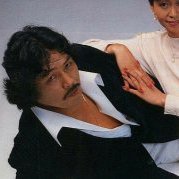
Update: the issue has been ordered and is expected in mid to late August. If I get a surprise early delivery, I'll work on getting that feature scanned and transcribed early, but I may be busy with other things for my birthday week. In the meantime, here are some other IWE names I plan to profile in the coming weeks.
(#1-3 high priority)
- Animal Hamaguchi
- Ashura Hara
- Isamu Teranishi
- Isao Yoshihara
- Mach Hayato
-
Mighty Inoue (マイティ井上) Profession: Wrestler, Referee, Commentator (Color) Real name: Sueo Inoue (井上末雄) Professional names: Sueo Inoue, Enzo Inoue, Inoue Tonpachi, Mighty Inoue, Mitsu Inoue, Chatti Mikki Inoue Life: 4/12/1949-11/27/2024 Born: Fukushima, Osaka, Japan Career: 1967-2010 Height/Weight: 175cm/110kg (5’8”;242 lbs.) [AJPW era=105kg/231 lbs.] Signature moves: “Sunset Flip”/somersault drop (rolling senton) [see misc. note #2], German suplex, flying shoulder block, gutbuster, Aussie suplex [see misc. note #1] Promotions: International Wrestling Enterprise, All Japan Pro Wrestling, Pro Wrestling NOAH [as referee] Titles: IWA World Heavyweight [IWE] (1x), IWA World Tag Team [IWE] (6x; 3x w/Great Kusatsu, 2x w/Animal Hamaguchi, 1x w/Ashura Hara), All Asia Tag Team [AJPW] (4x; 1x w/Animal Hamaguchi, 1x w/Ashura Hara, 2x w/Takashi Ishikawa),NWA International Junior Heavyweight [AJPW] (1x), AJPW World Junior Heavyweight [AJPW] (1x) Tournament victories: Real World Junior Tag League [AJPW] (1x, w/Gran Hamada) Perhaps the best wrestler the IWE ever produced, Mighty Inoue was puroresu’s ultimate underdog. After a five-month world title reign, Inoue found success as a tag wrestler and, eventually, a junior heavyweight with AJPW. Inoue trains with Isamu Teranishi, circa late 1969. Sueo Inoue was a student at Osaka Gakuin University High School who practiced judo and worked out at the Naniwa Bodybuilding Gym. He dropped out of high school to join the International Wrestling Enterprise, although after he became a wrestler the school invited him to the graduation ceremony and gave him a diploma for his success. He was trained by Matty Suzuki alongside Shozo Kobayashi and Yasuyuki Fujii; for Inoue, this was later supplemented by instruction from IWE foreign ace Billy Robinson. He debuted on July 21, 1967, at the first show of the Pioneer Summer Series tour. Inoue received the stage name Enzo Inoue from Toyonobori, to whom he served as valet, the following April. While it would take Inoue longer to reach the higher echelons of the company, circumstantial evidence speaks to the growth he made in his early years. In October 1969, he received the ring name which stuck: Mighty. He had risen enough in the pecking order by then to start putting over foreign talent in the midcard, and according to the Showa Puroresu fanzine, by 1970 Inoue was sharing pamphlet pages with Tadaharu Tanaka, which put him ahead of seniors like Takeshi Ōiso, Tetsunosuke Daigo, and early rival Isamu Teranishi. In early 1970, Inoue met André Roussimoff—that is, André the Giant—and the two struck a friendship that Inoue claims transcended language. In August 1970, Inoue was chosen over Teranishi to accompany Strong Kobayashi on a European excursion under France-based IWE booker Umeyuki Kiyomigawa. While Kobayashi went to the AWA that winter, Inoue remained in Europe except as a last-minute addition to the IWE’s AWA Big Fight Series tour in early 1971. André helped his Japanese friend early in his excursion. Inoue was originally supposed to work in France under Étienne Siry, but as someone who had started his career under Siry before shacking up with Roger Delaporte, André urged him to work for the latter. Kiyomigawa was “a little bit upset”, but acquiesced, and Inoue found that he had made the right decision when he learned about the poor pay that his coworkers had received from Siry. Besides his appearances for Delaporte, Inoue also worked in West Germany and Austria for Edmund Schober, and the United Kingdom for Joint Promotions. He wrestled as Chatti Mikki Inoue in Catch Schober, which a 2017 column by future tag partner Animal Hamaguchi suggests came from “Mickey Inoue”, an André nickname for Mighty. (The Chatti would have come from Chati Yokouchi.) As for Joint Promotions, he was billed as Mitsu Inoue in a pair of Royal Albert Hall show, the first of which saw him get chewed out backstage for pulling hair during his match. (Mighty later noted that, for a “nation of gentlemen”, England had left a bad first impression on him; he was particularly disgusted that wrestlers engaged in sexual activities in the waiting room of “a royal facility”.) While working in Catch Schober, Inoue used Naomi Chiaki’s “Yottsu no Onegai” as entrance music; this will come up later. Inoue says that if he’d stayed abroad one more year, he thinks he would have reached fluency in French. Nevertheless, Inoue learned multiple languages during his time abroad, which served him well many years later as a clerk for foreign talent in Pro Wrestling NOAH. The last phase of his foreign excursion began in June 1972, when André invited him to work in Montreal. Inoue did not have fond memories of the months he spent there due to his poor treatment at the hands of tag partner Mitsu Arukawa, but never begrudged André for that. Inoue during his time in Montreal. The polka-dotted neckerchief shows a sense of style that culminated in Mighty’s flamboyant trunk designs of the late seventies. After a brief stop in Hawaii, Inoue returned home in October 1972. He was generally booked as a high second-tier wrestler upon his return, and notable matches from his first six months back in the IWE include: a shot alongside Strong Kobayashi at Dick the Bruiser and Crusher Lisowski’s WWA World Tag Team titles in November; Inoue’s first match under the company’s trademark wire mesh deathmatch stipulation in February, a win over Jose Quintero; and a victory over French legend Édouard Carpentier in April. Inoue adopted his signature rolling senton from the latter. This move was acknowledged as Inoue’s patented technique for some time, as no other Japanese wrestler until Tiger Mask added it to their repertoire. The earliest match of Inoue’s which completely survives dates from September 1973, an IWA World Series block match against fellow Naniwa gym client turned IWE wrestler Animal Hamaguchi. The two wrestled as a team as early as 1973, but it would be several years before they revealed themselves as perhaps Kokusai’s best tag team. The peak accomplishment of Inoue’s career came in 1974. After Strong Kobayashi’s departure and the end of the TBS broadcast deal, Rusher Kimura was chosen to challenge Billy Robinson for the IWA World Heavyweight title in June. However, it would not be Rusher Kimura to challenge for the promotion’s top belt when it came back around Billy Graham’s waist. It is apparent that IWE’s new network, Tokyo 12 Channel, threw their support behind Inoue as a flashier performer. Both Yoshiwara and network sports department manager Tsuyoshi Shiraishi agreed on his push, with the latter pointing out to Monthly Gong (September 1974) that “a small Japanese man [fighting] a big foreigner” had been “the bud of the Japanese wrestling boom”. Inoue was elevated in the summer and autumn with singles victories over Horst Hoffmann and Baron von Raschke, and in the Super Wide Series he got three shots to defeat Graham. During this tour, Inoue also inspired puroresu’s first use of dedicated entrance music. When he told television director Motokazu Tanaka about his use of “Yottsu no Onegai” in Catch Schober, Tanaka was inspired to use the 101 Strings Orchestra cover of “Jesus Christ Superstar” for Graham. While AJPW broadcast director Susumu Umegaki is the one who popularized entrance music in puroresu, experimenting with it in 1975 and 1976 for Jumbo Tsuruta before striking gold with Mil Mascaras in early 1977, Kokusai was the pioneer, and Inoue is indirectly to thank for that. The greatest moment of Inoue's career. Anyway, Inoue needed all three of his title shots. He fought valiantly in his first attempt in Oita on October 1, but a ref bump at the eleventh hour prevented him from winning the third fall with a backdrop, and Graham capitalized on Inoue’s attempts to shake referee Takao Maemizo back to consciousness, striking him from behind and hitting a knee drop from the top rope to get the pinfall. Four days later in Nagoya, Inoue put things together in the first fall. Despite Graham pulling him by his legs to smash his groin against the steel pole, Inoue dodged another top-rope knee drop and focused his assault to gain the submission. In the second fall, however, Graham got his own submission with a Canadian backbreaker. The third fall saw Inoue go for the backdrop again, but he lost control and the two spilled to the outside for a double countout. In Koshigaya on October 7, Mighty got his last chance, for which he donned a pair of pink trunks that he claimed would be his good luck charm. He got revenge on Graham for the Nagoya groin attack, retaliating in kind and then slamming his left leg against the pole. Like in Nagoya, he won the first fall with a knee submission, but Graham got the Canadian backbreaker again to even the score. Down to the wire, Inoue got in another Canadian backbreaker, but he struggled out of it, landed on his feet, and brought down the Superstar with a backslide. His title reign lasted six months. His first defense was the most significant, an IWA/AWA double title match against Verne Gagne in November 1974 which went to a draw. The following February, Inoue retained against Danny Lynch. Finally, though, in April he lost the strap to Mad Dog Vachon and set up Rusher Kimura’s crowning moment. Inoue later admitted that he had been grateful to be free of the burden of being the ace, but he was still involved in the title picture for a couple years. He got title shots against his coworker in June 1975, September 1977, and May 1978; although this had precedent in the Strong Kobayashi-Rusher Kimura IWA title match of 1973, none of Kokusai’s other major players received title shots against Rusher. Meanwhile, Inoue entered the tag title picture shortly after losing the world title, essentially shifting spots with Kimura. He and Great Kusatsu enjoyed three substantive reigns with the IWA World Tag Team titles spanning between June 1975 and January 1977. In late 1975, Inoue also represented the IWE in AJPW’s 1975 Open League, alongside Kimura & Kusatsu. In the second half of the decade, he distinguished himself with the most elaborate trunks of 70s puroresu, donning florid and psychedelic designs. Inoue and Animal Hamaguchi give Umanosuke Ueda a taste of his own medicine on November 14, 1979. The "Naniwa Brothers" were the definitive tag team of late-period IWE. Inoue & Kusatsu vacated their titles for a March 1977 tournament held alongside the 6th IWA World Series and split up to enter with other wrestlers. This built up Animal Hamaguchi through his reaching the finals alongside Teranishi, and then winning the belts from Big John Quinn & Kurt von Hess alongside Kusatsu. (Inoue had a second excursion in Stampede afterward, returning in July.) While it still wasn’t time for Animal & Mighty to become the IWE’s top team, the “Naniwa Brothers” staked a claim as one of Japan’s major tag teams in their own right. In November 1977, the two teamed up again in a string of IWE challenges for Great Kojika & Motoshi Okuma’s All Asia Tag Team titles and won them. They successfully defended the belts four times over the next three months: twice against the Gokudō Combi, once against Samson Kutsuwada & Akihisa Takachiho, and once against Korean wrestlers Oh Tae Kyun & Yang Seung-Hi. In the meantime, Inoue also entered the first Real World Tag League alongside Takachiho, tying for last place with Genichiro Tenryu & Rocky Hata. After they dropped the belts back to Kojika & Okuma, Inoue wouldn't wear gold again for another year. In November 1978’s Japan League tournament, he placed in his block’s top four to enter the quarterfinal before losing to semifinalist Jumbo Tsuruta. It was yet another example of how much Kokusai was willing to compromise the reputation of its top stars in order to secure the interpromotional matches that they needed to book for their cash flow. In February 1979, the Naniwa Brothers teamed up to take the IWA tag titles back from the Yamaha Brothers. Inoue’s grudge against Kotetsu Yamamoto over how these matches were booked would be a factor in his refusal to join New Japan Pro Wrestling two years later; nevertheless, the pair of matches were a strong start to the Naniwa Brothers era. In the longest title reign of Inoue’s IWE period, he and Hamaguchi defended their belts against the best gaikokujin teams that they could book, as well as Japanese “freelancers” Umanosuke Ueda, Masa Saito, and Yasu Fujii. In their final successful defense, they won by disqualification against NJPW invaders Kengo Kimura & Haruka Eigen, but this was due to an Animal injury which forced them to vacate the belts. Sixteen months after they first won their titles from New Japan, they lost a match for the now-vacant championship when Eigen came back alongside Strong Kobayashi. The Naniwa Brothers overcame them in a rematch and held the titles for eight months thereafter before Hamaguchi’s health forced them to vacate them. Inoue teamed up with the returning Ashura Hara to win them for the sixth time, and this new team held onto the belts until the company went under. Inoue’s 1,315 days as champion rank third in the IWA tag title’s history, behind Hamaguchi’s 1,343 and Kusatsu’s dominant 2,678. On September 14, 1981, Inoue attends an AJPW press conference to announce his participation with the company. Left to right: Baba, Inoue, Tenshin Yonemura, Nobuyoshi Sugawara, Hiromichi Fuyuki. It was after the IWE folded that Inoue disobeyed Isao Yoshiwara for the first time in his life. In the company’s last days, Yoshiwara had apparently consulted Baba for a merger with AJPW, but as Baba had just lost managerial authority in his company due to a network takeover, he could not make this happen. Yoshiwara dissolved the promotion and told his wrestlers that he would have them go to New Japan. Like Ashura Hara, who was genuinely bitter about how New Japan had booked him to submit to Tatsumi Fujinami the previous year, Inoue refused to join New Japan over personal misgivings; Kotetsu Yamamoto once booking him to submit in one fall in a match against the Yamaha Brothers, despite Inoue having defeated Superstar Billy Graham a few years before, was the big one. Inoue contacted Baba through the intermediary of Kosuke Takeuchi and asked him to take himself and a few others. Inoue brought Hiromichi Fuyuki and Nobuyoshi Sugawara, who had been two of the IWE’s three last significant trainees. Tenshin Yonemura became affiliated with AJPW alongside them, working their shows when they stopped in his hometown. Inoue’s first match in All Japan was a shot at Mil Mascaras’ pet IWA World Heavyweight title on October 9. (This was a different IWA from the governing body of the IWE’s titles: specifically, the Eddie Einhorn-Pedro Martinez failed national US promotion of 1975-78.) While Inoue lost to Mascaras in less than ten minutes, and he was the rare Japanese person who openly corroborated Mascaras’ reputation (“he only tried to show his good points [...] Mexicans didn’t like him either; they called him cabeza grande”), it would be far from the highlight of Inoue’s AJPW career. Inoue celebrates his NWA International Junior Heavyweight title victory alongside new AWA World Heavyweight champion Jumbo Tsuruta. Now, he could only ever go so far. While it is my opinion that Mighty Inoue was the IWE’s best worker, he was 5’8”, and especially with a promoter like Giant Baba that was a modest ceiling. As a singles wrestler in the heavyweight division, the furthest he ever got was a dismal tenth place ranking in the 1982 Champion Carnival. When All Japan began seriously investing in a junior heavyweight division, Inoue was ordered to slim down to fit in the division because of his height, and he obeyed, going from the 110kg of his IWE heyday to 105. After Atsushi Onita’s major knee injury, Inoue was ultimately chosen to bring the NWA International Junior Heavyweight title back from Chavo Guerrero Sr. to Japan, and his 468-day reign from February 1984 to June 1985 was the longest in the belt’s seven-year original run of activity. During this reign, he successfully fought off Onita twice; the second time served as Onita’s first retirement match. He and Gran Hamada also teamed up to win a small tournament, the Real World Junior Tag League. He dropped the junior title to the Dynamite Kid, but four years later, Inoue’s final title reign was a transitional AJPW World Junior Heavyweight title reign between Joe Malenko and Masanobu Fuchi. It wasn’t as a junior heavyweight that he was most successful in All Japan, though. Inoue and Hara win the All Asia Tag Team titles. From 1983 through 1988, Inoue was a significant player in the All Asia Tag Team title picture. The All Asia titles had served a unique role ever since AJPW had revived them in 1976, as for a long time they were the company’s only championship to be contested and even change hands between native teams. When Inoue joined the company, Gokudō’s final reign had ended to Akio Sato & Takashi Ishikawa. He and Hara reunited to take a shot at the champions in November 1981, and it ended in a draw, but when the titles were vacated in early 1983, the final IWA Tag Team champions went over Gokudō by disqualification to win gold together again. Inoue would vacate them to concentrate on his junior title, but in the mid-80s, he and Ishikawa joined forces to hold the titles twice for a combined 587 days. Inoue & Ishikawa were the wall that Footloose broke down in 1988. Inoue wound down his in-ring career in the 1990s. He shone early on as an ensemble performer in the company’s six-man main-events, wrestling alongside Jumbo Tsuruta and what eventually became known as Tsurutagun. Inoue was not considered one of Tsurutagun’s four members, but he made his presence felt in the early stage of the faction’s rivalry with Chosedaigun, before Yoshinari Ogawa essentially took his spot. After this, Inoue found a role in AJPW’s comedic six-man tradition as a member of the “villainous” Akuyaku Shokai faction. However, he was reportedly struck with an internal disease in mid-1997 and was ultimately forced to retire in 1998. As the company culture became tenser in the latter half of the decade, Inoue was on the chopping block, and was nearly cut by Motoko Baba until he took his coworkers’ advice to announce during his retirement ceremony that he would transition into refereeing. Inoue speaks at his second retirement with his wife, Ryoko, at his side. Apparently, the job did not come naturally to him, and his early work was considered awkward and intrusive. He stuck with it for over a decade, though, as he joined the walkout to become Pro Wrestling NOAH’s designated undercard referee. Donning a red shirt as a trademark, Inoue's “verbal pro-wrestling” style of refereeing and occasional participation in spots made him a bit player in NOAH’s continuity of the AJPW comedy tradition. (For instance, see Mitsuo Momota’s 2006 match against SUWA, after which both Inoue and Momota’s recently retired rival Haruka Eigen join forces to put the young punk in his place for a postmatch assault.) NOAH saw Inoue expand his role into a foreign clerk and even a color commentator. He left the company when his contract lapsed on New Years Eve 2009, as one among many who likely found himself disillusioned with what the company became after Mitsuharu Misawa’s death. That same day, he wrestled his first match in twelve years, a ten-man elimination tag for a BJW/DDT/Kaientai Dojo joint show. He later received a proper sendoff with a retirement show at Korakuen Hall on May 22, 2010. Outside of a one-night return for the 2019 Giant Baba Memorial Show, he stuck to that. Inoue died of ventricular fibrillation in 2024. Inoue returns to refereeing for the February 19, 2019 Giant Baba Memorial Show. This commemorative photo was shared by Shuhei Nishinaga afterwards. Left to right: Daisuke Kanbayashi (WRESTLE-1), Nishinaga (who holds a photo of Joe Higuchi), Akihiko Fukuda, Inoue, Kyohei Wada, and Red Shoes Unno. FOOTNOTES Inoue’s “Aussie suplex”, named after its inventor Al Costello, is performed with the same mechanic as a bridging tiger suplex, but is considered a distinct move in Japanese discourse. Essentially, the Aussie suplex is a pin, not a throw. The move has been subsequently used by Naomichi Marufuji. According to Showa Puroresu, the quirk of calling Inoue’s rolling senton a sunset flip originated from a supposed Carpentier request. Inoue reportedly once injured one of Austin Idol’s ribs with his gutbuster. Inoue’s love of karaoke seems to have been a major part of writing about him as a person in puroresu magazines. He states that he got a spot on TBS variety show Let’s Meet At 3 O’Clock when television producers heard him sing in a bar. This got Inoue the opportunity to record a single, “Furui Botoru” (“Sieve Bottle”), for minor Osaka label Lamon Records. To my knowledge, the only modern rerelease of this recording is through a 2011 compilation CD of Lamon recordings, which is lamentably out of my budget on Discogs. Less elusive, though, is the 7” of enka music he recorded for Victor Records in 1984, “Ema no Omokage/Nogizaka Night”. Both songs are easily found on YouTube, and the A-side probably features the most competent vocal performance I have heard from a male Japanese wrestler of his generation. (I have a three-page article about singing wrestlers from the January 1980 issue of Deluxe Pro Wrestling magazine that I would like to translate for fun someday.)
-
No impending board update is keeping me from posting profiles, but I thought I might start using this status feature to keep my profile's lurkers posted. I am currently hard at work on a Mighty Inoue profile.
-
Thunder Sugiyama (サンダー杉山) Real name: Tsuneharu Sugiyama (杉山恒治) Professional names: Tsuneharu Sugiyama, Tokyo Joe, Thunder Sugiyama Life: 7/23/1940-11/22/2002 Born: Itoigawa, Niigata, Japan Career: 1966-1980 Height/Weight: 178cm/125kg (5’10”/275 lbs.) Signature moves: Raizen drop (hip drop), German suplex hold, savate kick Promotions: Japan Wrestling Association, International Wrestling Enterprise, All Japan Pro Wrestling Titles: TWWA World Tag Team (2x; 1x w/Toyonobori, 1x w/Rusher Kimura); IWA World Tag Team [IWE] (3x; 2x w/Great Kusatsu, 1x w/Rusher Kimura); European Tag Team [IWE] (1x, with Great Kusatsu), IWA World Heavyweight [IWE] (1x) While now the less famous of puroresu’s first two Olympian recruits, Thunder Sugiyama was once a major player as the IWE’s first native ace. Tsuneharu Sugiyama was born in Itoigawa, Niigata, as the illegitimate child of a businessman. While he was taken in by Masatake’s family, who either moved to Nagoya in his youth or already lived there, Tsuneharu was hardly favored by his new mother and half-brother, and he was not spoiled by his father. He would later claim in his autobiography that he had wanted to become stronger because he could not defeat his half-brother Masakatsu, a karateka fifteen years his senior, in sparring. Tsuneharu would enter judo, where he became a high school champion; according to one source, he became the youngest fourth-dan judoka in the world. He wanted to attend Meiji University, but his advisor forced him to go to Doshisha instead. Sugiyama continued to practice judo, but his size and strength made none willing to be his training partner. In the winter of freshman year, Tsuneharu caught pneumonia during solo field training, and Masakatsu drove to the training camp to pick up his son and his belongings. Sugiyama dropped out of not just the club, but the university. When his body recovered, he was accepted by the Chukyo University club as a coach and special student. He had planned to transfer to Meiji when he completed the year but had inadvertently offended the Meiji judo club when he told them he would enroll at Meiji and went to Doshisha instead. These were the circumstances that led Tsuneharu to amateur wrestling, as the judo club’s assistant director offered to recommend Sugiyama to the university’s agriculture department if he joined Meiji’s wrestling team. Sugiyama with the 1964 Olympic wrestling team (standing, far left). In front of him kneels Masanori Saito. Just ten days after he joined, Sugiyama entered the qualifiers for the 1960 Olympics, and won, but was disqualified due to his lack of experience in the sport. Nevertheless, he cited the flattery of seeing his feat reported in the papers as a motivator to stick with wrestling. He won two gold and two silver medals at collegiate championships during his tenure, with all but one gold in the Greco-Roman division. He would join Japan’s Tokyo Olympic team as its Greco-Roman heavyweight, where he lost to gold and bronze medalists István Kozma (Hungary) and Wilfred Dietrich (Germany) to drop out after the third round. Afterwards, Sugiyama became the secretary of Ichiro Hatta, the president of the Japan Amateur Wrestling Association, and the white-haired man in a suit that you see in that Olympic team photo. It would be at Hatta’s suggestion that, in summer 1965, Sugiyama joined the JWA alongside former rugby star Masakate Kusatsu. Alongside fellow Olympian wrestler Masanori Saito, who had joined the promotion a few months before them, they would be known as the JWA’s “three crows”. Sugiyama debuted on March 4, 1966, going to a draw with Kazuo Honma. Like Kusatsu, he continued to wrestle for them until September, with Sugiyama’s last match being a loss to Hideyuki Nagasawa on September 23. On October 6, Sugiyama and Kusatsu accompanied former JWA sales manager Isao Yoshiwara to the offices of the Tokyo Sports newspaper, where the two wrestlers announced their resignations and departures for America. While Kusatsu would embark on a training expedition under the stewardship of Hiro Matsuda, Sugiyama announced that he would receive training from Dale Lewis. On October 24, both men were present at the press conference announcing the formation of the International Wrestling Enterprise. (Masakatsu got a seat on the board of directors.) Sugiyama spent a year in America as Tokyo Joe, under which he wrestled in the Detroit and Amarillo territories. Sugiyama’s work at home had a “rough” streak which would be credited to this time as a heel. Later in his life, Sugiyama cited amateur wrestler turned Benihana restauranteur Rocky Aoki as a major inspiration on him during this time. It is clear that Sugiyama never saw pro wrestling as a permanent occupation and considered it a steppingstone to increase his profile for a future career in business. Plans to bring him and Kusatsu back in autumn 1967 fell through, as the IWE could not raise the funds to book their third tour, but when they signed a deal with Tokyo Broadcasting System, both men returned. The company’s first tour of 1968, under the temporary rebrand of TBS Pro Wrestling, saw Sugiyama receive a shot at Lou Thesz’s TWWA Heavyweight title after Kusatsu’s disastrous title match. Perhaps due to his legitimate background, Sugiyama was the only Japanese wrestler who Thesz took a pinfall from across his three title matches on this tour, and one of those was against Toyonobori! On their truncated following tour, he and Toyonobori defeated the Fabulous Kangaroos on February 14 to win the TWWA World Tag Team titles. The pair would hold the titles for fourteen months, and when they did lose them, it was of their own volition after they retained by disqualification against Stan Stasiak & Tank Morgan. Eight days after this, Sugiyama and Rusher Kimura defeated Stasiak & Morgan for the vacant belts in puroresu’s first hair match. The TWWA tag titles were vacated and phased out when Kimura left for America that summer. In the autumn's IWE World Tag Team Challenge Series, Sugiyama and Kusatsu won the European Tag Team titles on November 1 from the El Mansouri brothers. Sugiyama’s next gold was won in early 1970. After Toyonobori’s retirement vacated the IWA World Tag Team titles, Sugiyama & Kusatsu battled Andre Roussimoff & Micha Nador for them. They lost the first match, but won a rematch when Sugiyama pinned Andre in the decisive fall. (The duo would defend the European titles twice in the summer before the belts were forgotten.) Sugiyama brings the IWA World Heavyweight title home. Sugiyama got married before the 2nd IWA World Series tour, on which he would cement himself as the promotion’s first native ace. Billy Robinson, who had won the IWA World Heavyweight title in the first tournament for it in 1968, competed in the Series in his first appearances since spring 1969. I cannot tell you how Sugiyama lost this tournament, because no preliminary matches were technically promoted as such! The IWE claimed that it was a round-robin tournament between five natives and five gaikokujin, and Sugiyama indeed wrestled all five gaikokujin, but he wrestled them multiple times. (Note that this is not a Cagematch error in not marking the preliminary matches as World Series matches, as the Showa Puroresu fanzine corroborates that no such matches were promoted.) One presumes that the tournament was a half-hearted measure to promote native “finalist” Strong Kobayashi, who had been given a singles push but was scheduled to leave on an excursion in a few months. The World Series “final” saw Robinson defend his title against Kobayashi, one of three defenses he would mount in as many nights. When Robinson retained against him, and then against Kusatsu on May 18, it must have seemed that the IWE’s world title would not be brought home; Robinson had even remarked to Pro Wrestling & Boxing magazine that he might end his association with the IWE soon, due to an AWA offer. But on May 19 in Sendai, Sugiyama got his first shot at the title. Robinson may have come out on top against Kobayashi and Kusatsu, as well as Toyonobori and Kimura in previous years, but this was his first defense against the Olympian wrestler. Sugiyama won the first fall with a succession of raizen drops, but Robinson maneuvered his way to a pinfall in the second. The match got rough in the clutch and spilled over to the outside. As the countout loomed, Sugiyama returned to the ring in time, and struck Robinson on the apron with his elbow. Robinson’s foot got stuck on the ropes, suspending him in midair as he was counted out. Sugiyama would hold the world title for the rest of the year, mounting six successful defenses against gaikokujin like Eduoard Carpentier, Larry Hennig, and an ersatz Blue Demon (Buddy Wolff). He and Kusatsu would lose the tag titles in November, a measure to put over Hennig and Bob Windham, but they won them back to end the year. Sugiyama would hold the world title until March 4, 1971, when he lost to Bill Miller in the third defense of the year. Miller’s reign proved to be a transitional one to Kobayashi, and Sugiyama never challenged for the title again. He continued to hold the tag titles until June, when they were vacated as Kusatsu prepared for his second excursion. Sugiyama revived his TWWA title-winning duo with Rusher Kimura to challenge for the vacant championship. That September, they lost their first challenge against Red Bastien and Bill Howard on the 9th but won the rematch on the 23rd. Disregard Cagematch’s erroneous data, which pastes the 11/19/70 title switch onto the 1971 date as well; this reign lasted eight months. After the 4th IWA World Series tour, which saw a final successful defense against Franz von Buyten and Andre the Giant, the belts were vacated. After this, Sugiyama reduced his bookings and switched from an exclusive wrestler to a contractor, only working eight of the Big Summer Series’ 17 dates and two dates on the Dynamite Series. As early as late 1970, Sugiyama had been broadening his focus with variety show appearances and businesses. By this point, he had joined Nagoya trading company Suzuken, for which he was managing a restaurant and heading a tourism department. However, Giant Baba saw Sugiyama’s reduced presence as a waste, and he paid Isao Yoshiwara to acquire him in an amicable transfer to the nascent All Japan Pro Wrestling. Sugiyama would work fulltime for All Japan. Outside of a December 1972 shot at the Destroyer’s pet United States Heavyweight title, he received no championship matches and was booked as a second-tier talent, and if there were any plans for him to team with Baba on a long-term basis they were changed. He did take to AJPW golden child and fellow Greco-Roman Olympian Jumbo Tsuruta, though, and Akio Sato later recalled that he frequently took Tsuruta out to dinner. Sugiyama wound down his appearances beginning in 1975 and particularly into early 1976, as he concentrated on work as a television personality. This brought him into sharp conflict with Baba, as in a backstage argument the two had on a February show, Sugiyama wanted more money while Baba said that the younger talent were complaining about his frequent variety show appearances. Sugiyama declined to renew his contract when it ended that April. Sugiyama wrestles Kim Il (Kintaro Oki) in Seoul on September 8, 1976. This began the final phase of Sugiyama’s career. In the 1970s, a new class of Japanese wrestler emerged: the freelancer. Most of these were created by political circumstances and calcified by domestic roots, as talent such as Umanosuke Ueda, Mr. Hito, Yasu Fujii, and Mr. Seki (the future Mr. Pogo) decided to base themselves overseas while working in their homeland on a tour-by-tour basis. Sugiyama would be the rare freelancer that remained based in Japan. From summer 1976 through early 1978, he returned to the IWE as a parttimer. Notably, Sugiyama challenged for the IWA tag titles alongside Umanosuke Ueda in July 1976, on the tour that made Ueda’s name as a traitor heel. When a tournament for the vacated belts was held the following March, Sugiyama entered alongside Ryuma Go, but Go took the fall in the second round to finalists Big John Quinn & Kurt von Hess. Sugiyama also came to South Korea in September 1976, where he received the last singles title shot of his career against Kim Il/Kintaro Oki. The last notable matches in Sugiyama’s career came in winter 1978, when he joined Hiro Matsuda’s freelancer faction Okami Gundan and entered New Japan Pro Wrestling’s Pre-Japanese League tournament. A 2018 book by former NJPW referee Mr. Takahashi claims that, by this point, Sugiyama took freelance bookings with the expectation that he was to be protected, but Kotetsu Yamamoto reneged on this by booking a loss to Tatsumi Fuijinami in his first match of the tour and tournament. The NJPW Pre-Japan Championship Series was the last proper tour that Sugiyama would work. He wrestled on three shows—two NJPW, one IWE—in 1979 and 1980, all of which were held in his hometown of Nagoya. After his wrestling and television careers came to a close. Sugiyama proved a successful businessman in Nagoya. His Thunder Sugiyama Co. spread into multiple businesses, including love hotels, a restaurant supply chain, vending machines, and a corporate janitorial business, and would eventually claim 3.5 billion yen in annual sales. He had suffered from diabetes since his wrestling days, though, and it eventually worsened, alongside liver disease and stomach cancer. Frequently hospitalized in his last days, Sugiyama’s legs and right wrist were amputated. He remained passionate in his business to the end, as he ran things by email from his hospital bed. He died on November 22, 2002. Sugiyama circa late 2001. Miscellaneous According to Showa Puroresu (issue #20), Sugiyama traveled to South Korea during his JWA tenure to hold an amateur wrestling seminar. Sugiyama’s “Crossroads” was an early entry in the mens’ puroresu single.
-
Ryuma Go (剛竜馬) Profession: Wrestler, Promoter, Trainer Real name: Hiroshi Yagi (八木宏) Professional names: Hiroshi Yagi, Ryuma Go, Mr. Go, Ninja Go, Super Ninja Life: 3/23/1956-10/18/2009 Born: Shinjuku, Tokyo, Japan Career: 1972-2009 Height/Weight: 185cm/108kg (6’1”/238 lbs.) Signature moves: Armbar, various suplexes (German, "side"/gutwrench, back), lariat (later career) Promotions: International Wrestling Enterprise, New Japan Pro-Wrestling, UWF, All Japan Pro Wrestling, Pioneer Senshi, Oriental Pro Wrestling, Atsugi Pro Wrestling, Samurai Pro Wrestling Titles: NWA Americas Tag Team [NWA Hollywood] (2x: 1x w/Black Gordman, 1x w/Rusher Kimura); WWF Junior Heavyweight [NJPW] (1x); NWA Beat the Champ Television [NWA Hollywood] (1x); CIWA Tag Team [Championship Wrestling USA (Portland, OR)] (2x, w/Jesse Barr) A fair number of wrestlers in puroresu were more successful than Ryuma Go, but few were as liminal. From the early rival of Tatsumi Fujinami to the baka of the indies, Go became one of pro wrestling's great cult figures. The son of a chef, Hiroshi Yagi and his younger sisters were abandoned by their mother in his teens. He had wrestled and played baseball as a child, and he left for Tokyo before completing junior high, intent on joining the JWA to support his family. (Eventually, he would pay his sisters' way through college.) Yagi trained with the promotion for several months, reportedly meeting future rival Tatsumi Fujinami in the process, but failed to debut. One source claimed that this was because JWA officials wanted him to complete junior high, but after his death, future Pioneer Senshi partner Masahiko Takasugi would claim in a G Spirits interview that Yagi told him he had been forced by a senior wrestler to consume alcohol, which had caused internal damage. Yagi joined the International Wrestling Enterprise in a 1971 recruitment call, debuting the following September. Alongside Devil Murasaki and Goro Tsurumi, Yagi helped fill early AJPW cards in a gesture of goodwill between the two organizations. In 1973, Yagi and Tsurumi left to begin a training expedition under the custody of IWE booker Umeyuki Kiyomigawa. While he would sometimes be barred from working shows until he turned 18 in 1974, Yagi remained abroad for three years. By the end of March 1974, by which point Kiyomigawa had turned his back on the IWE in his role in Strong Kobayashi’s match with Antonio Inoki, Yagi was in Calgary…in time for fellow Kokusai wrestler Tetsunosuke Daigo to suffer his career-ending injury. Go stands at ringside during the 6th IWA World Series final between Rusher Kimura and Mad Dog Vachon. Yagi's return was hyped up through a fan contest for a ring name. According to IWE reporter and color commentator Takashi Kikuchi, the top names that came through were Concorde Yagi, a reference to the French airliner, and Hiro Yagi, a reference to Hiro Matsuda. He would get neither, instead receiving the much better Ryuma Go. Well, he actually received the name Go Ryuma—that is, recognizing Japanese naming order—but “Go” caught on so much that the naming order was often informally reversed. While I had suspected the contest was more intended for fan engagement, and that the name was decided independently of the submissions (like how Monthly Pro Wrestling coverage was nicknaming Tomomi Tsuruta “Jumbo” as early as their December 1972 issue, almost a year before the autumn 1973 fan contest), the name was credited at the time to a submission by one Mitsuyoshi Goto of Mie prefecture. Regardless, when NJPW repeated this tactic with a returning Mitsuo Yoshida, Yoshida had begged the company to give him a name "like Ryuma Go". (It would take him some time to warm up to Riki Choshu.) Yagi was rechristened on July 4, 1976. As cool as his new name may have been, though, he did not receive any substantial push from Kokusai. His return match, a twenty-minute draw against IWE’s premier ‘exchange student’ Jiro Inazuma [aka Martinique-Canadian wrestler Gerry Morrow], was considered a success. He also received a taste of the promotion's trusty gimmick, the wire mesh deathmatch, in a loss to Gypsy Joe that autumn. However, contrary to claims in Dave Meltzer’s 2009 obituary that Go had been pushed as a top prospect, Japanese sources assert that his performances were lackluster in this era, as his matches were monotonous, and he was prone to botches which drew little but laughter from crowds. He was not a priority of IWE booker Great Kusatsu, and he never received a shot at Isamu Teranishi's light heavyweight title. In March 1977, Go would be the native jobber in Kokusai's fifth and final IWA World Series tournament. On that same tour, he reached the semifinals of a tournament for the vacant IWA World Tag Team titles. Working alongside Thunder Sugiyama, the early-70s IWE ace who had left AJPW over money the previous year, Go fell to Big John Quinn & Kurt von Hess in the semifinal. As the IWE began to court former rugby player Susumu Hara, and especially as the company’s financial situation worsened in early 1978, Go began secret talks with NJPW sales executive and “radical instigator” Hisashi Shinma. Tatsumi Fujinami's return to Japan in March 1978 began the Dragon Boom. It rejuvenated puroresu, bringing an influx of younger fans to NJPW shows. A match pitting Fujinami against Go had the potential to recreate the Inoki-Kobayashi match of four years past. Go began secret talks with Shinma in 1978, and aroused his coworkers’ suspicions with his refusal to embark on a Maritime excursion. Mighty Inoue has claimed that he sniffed out Go’s intentions. On May 11, 1978, AJPW ran the Osaka Prefectural Gymnasium. In a response to the Dragon Boom that somewhat missed the point, they booked NWA World Junior Heavyweight champion Nelson Royal to defend his strap against Al Madril. Go made a shocking appearance at the show to declare his resignation from Kokusai to the press and stated his wish to wrestle as a freelancer. At this point, what “freelance” usually meant in puroresu was a wrestler who was probably based overseas, and only worked for a single Japanese promotion at a time due to the political landscape. (Examples from the period include Masa Saito, Umanosuke Ueda, Mr. Hito, and Yasu Fujii.) Go left for the States on a JAL flight on May 18, joining Hiro Matsuda in Tampa, Florida on Shinma’s orders. On June 9, Go appeared alongside Matsuda in the Olympic Auditorium to see Tatsumi Fujinami defend his WWWF Junior Heavyweight title against Mando Guerrero. In an effort to avoid legal troubles from Kokusai, Shinma asked NWA Hollywood promoter Mike LeBell to sign Go to a contract, which would allow him to take NJPW bookings as a “representative” of LeBell’s territory. While this did not really work, as the IWE saw through it and unsuccessfully petitioned the Tokyo District Court to get involved, Go spent much of the rest of 1978 working for LeBell, at one point winning tag titles with territory stalwart Black Gordman. During this time, he also got Mach Hayato in touch with Goro Tsurumi. Go first wrestled Fujinami on July 27, 1978. The previous year, Kosuke Takeuchi had used his connections to fan clubs to sweeten the crowd for Jumbo Tsuruta and Mil Mascaras' famous match at the Denen Coliseum, arranging cheer squads for each man. Takeuchi would contribute to this match by manufacturing crowd support for the IWE invader. (Notice the sign on the photo on the right which reads "The Maniax"; this refers to a specific club of Gong superfans and part-timers.) The match made Go's name and led to a program which lasted into the following year. Remaining “freelance” for the time being, his next dates with New Japan that November saw him associated with fellow "lone wolves" in Hiro Matsuda's Okami Gundan faction, which entered the Pre-Japanese League tournament. A second Fujinami title shot came in December. On October 2, 1979, six thousand fans packed the Osaka Prefectural Gymnasium to see Fujinami defend his title against Go for the third time in the main event. Go became the one to end an almost two-year reign, even if he dropped it back two days later. (According to Killer Khan's autobiography, Masa Saito was the one who had lobbied for this title switch.) While Jumbo Tsuruta's rivalry with Kim Duk arguably preceded it, the Fujinami/Go series deserves credit as an early example of native vs native programs in puroresu. Five months after the Fujinami switcheroo, Go returned to the IWE as an invader, getting disqualified in a singles match against Ashura Hara on their Match 31, 1980 show. (This was a challenge for Hara’s WWU World Junior Heavyweight title.) Two days later, Go lost a final junior title match against Fujinami in Osaka, after which he officially joined New Japan. Despite his opportunities, Go was sidelined in a saturated talent pool. Kengo Kimura was pushed that year as a major junior talent, winning the NWA International Junior Heavyweight title and taking Fujinami to a double knockout in a title vs title epic, while Go barely crawled past the MSG Series tournament’s preliminary block before playing the jobber in the tourney itself. Beginning that October, Go was hospitalized due to "tetanus-like symptoms" in his leg. This lasted for about six months, according to NJPW sales manager Naoki Otsuka. In 1981, Go landed a role in a TV Asahi police drama Keishi Chō Satsujinka. In all but the last of its thirteen episodes, Go acted as murder detective Takeshi Kubo alongside such Toei heavyweights as Bunta Sugawara and Koji Tsuruta. Outside the ropes, Go apparently worked as a coach in the NJPW dojo; an uncited passage in his Japanese Wikipedia page claims he had some involvement instructing Nobuhiko Takada and Kazuo Yamazaki. When his former IWE coworkers Rusher Kimura and Animal Hamaguchi invaded New Japan, Go was mentioned in Hamaguchi’s end of their promo segment, but his history was not capitalized on by joining the Kokusai Gundan stable. However, Go accompanied Kimura on an excursion in May 1982. As the Rising Suns, “Mr. Go” and “Mr. Toyo”, they ended the last of Black Gordman & El Goliath’s 22 NWA Americas tag title reigns, in a brief run transitional to Hector & Mando Guerrero. In January 1984, Go was the first New Japan wrestler to disappear and join the UWF. As Hisashi Shinma claimed in a 2009 G Spirits interview, he had invited Rusher Kimura due to their shared past in Tokyo Pro Wrestling, and Rusher then invited Go; when Shinma asked if Go was sure, Go affirmed his decision as he felt indebted to Shinma for giving him his earlier opportunity. After Shinma resigned from the UWF that summer, he claimed in a Hawaii press conference that Go, Kimura, Gran Hamada, and Akira Maeda would all leave in turn to join AJPW. In a gesture intended to dissociate the UWF from Shinma, UWF officials convinced Go, Kimura, and Maeda to declare unity with the company in a press conference. Alongside Kimura and Mach Hayato, Go helped the company on their second tour by using his connections to book talent after Shinma’s departure cost them a possible WWF partnership. He is credited with booking Canadian wrestlers Leo Burke, Frenchy Martel, and The UFO. Maeda would become a lynchpin of the promotion but Go and Kimura would both leave the promotion before the year’s end. While Japanese Wikipedia cites something called “The Nostalgic Story of Rusher Kimura” to claim that Go had done it out of a sense of loyalty towards Shinma, G Spirits magazine offered a less idealistic and more realistic story in 2018. Go had booked foreigners for the promotion, but the talent he brought were incompatible with the shoot-style direction that the UWF prepared to go in with Satoru Sayama. Kimura and Go joined All Japan Pro Wrestling for the 1984 Real World Tag League tour. Go did not enter the ring until the last four dates of the tour; after Kimura and Giant Baba’s tournament team broke up in a December 8 angle, Go wrestled alongside Rusher (and in one singles match against Yoshihiro Momota) as the nucleus of what would become Kokusai Ketsumeigun. The second incarnation of the ex-IWE heel stable also featured Goro Tsurumi, Masahiko Takasugi, and Apollo Sugawara, and a returning Ashura Hara also wrestled alongside them. While they did get television time, and Kimura was starting to show the promo skills that would serve him so well in the many years to come, Ketsumeigun were decidedly minor players in the mid-80s AJPW shuffle. Go would ultimately be cut at the end of the fiscal year to make room for the Calgary Hurricanes, alongside Takasugi, Sugawara, and referee Mr. Hayashi. Go’s Japanese Wikipedia page claims that he had “offended” Baba and the company’s referees in his attempts to call attention to himself in the ring. After his dismissal, Go briefly found work outside the wrestling sphere. Retired NJPW wrestler and future RINGS referee Motoyuki Kitazawa hired him for his construction firm. As April 1986 ended, though, Go found wrestling work again. He was booked for the AWA by Masa Saito, where he would wrestle as Ninja Go. During his time in the territory, Go worked as the partner of Super Ninja (that is, Calgary Hurricane Shunji Takano), and that duo as well as a Go-Bill Irwin team received shots at Scott Hall & Curt Hennig’s AWA World Tag Team titles. Go’s first work back in Japan was a brief return to All Japan. In the Summer Action Series tour, Go and Takasugi were hired on a freelance basis; my guess is that they were brought aboard to fill space left by the last of the Japan Pro Wrestling talent to jump ship back to New Japan (Kuniaki Kobayashi, Hiro Saito). Go would not impress enough to get a contract. According to the aforementioned G Spirits Vol. 46, his cardio was no issue, but he was considered stiff and clumsy. He would manage an okonomiyaki restaurant owned by a patron. In late 1988, when now-JWP sales manager Hisashi Shinma made plans to restructure the organization into the mixed-gender Martial Arts Union (Kakutōgi Rengō) promotion, Go was poised to join alongside JWP salesclerk Atsushi Onita, as well as Gran Hamada. However, this was not how he would step back into the ring. A patron of Masahiko Takasugi had asked if he wanted to start a small wrestling promotion, and Takasugi approached Go and Sugawara to join him. Takasugi and Sugawara’s original name for the promotion, Shin Kokusai Puroresu, was shot down by Go due to his own shame over how he had left the IWE. On November 15, 1988, they held a press conference at Animal Hamaguchi’s gym and announced their new enterprise, which had been given a name by Takashi Kikuchi: Pioneer Senshi. While Go had not initiated the plan to start the promotion, and his partners were concerned that he may take control of the organization, he was made its ace due to his greater name value. He used his friendship with his old rival, Tatsumi Fujinami, to receive a ring on loan from New Japan and help secure Korakuen Hall for their first show. Go also secured and opened the Pioneer Gym Popai gym in Urayasu, where he would train aspiring wrestlers such as Yukihiro Kanamura and Hiroshi Itakura. Go and Atsushi Onita enter a backstage scuffle at the first Pioneer Senshi event. By the time Pioneer held its kickoff show on April 30, 1989, none of the trainees were deemed ready to wrestle, although they did hold open training sessions and arm-wrestling tournaments to “make up for it”. The show only had two matches: Takasugi vs. Sugawara, and Go vs. Onita. Go dislocated his shoulder when he took a bump off the apron; he had instructed his seconds to move the floor mats several inches back in case Takasugi performed a tope but had forgotten to tell them to move it back. While the show was profitable, Sugawara would leave when Mitsuo Endo hooked him up with Koji Kitao; he was replaced by former Japan Pro wrestler Fumihito Niikura, who faced Go in Pioneer's second show on October 26, less than a month after FMW’s first show. On April 5, 1990, Go wrestled Masashi Aoyagi. The match was thrown out after an Aoyagi kick broke Go’s nose (Go also claimed his eyeball popped out and he had to push it back in), before an enraged Animal Hamaguchi dragged both back to the ring to restart the match; a riot almost broke out. The two would have a rematch three weeks later, and although Pioneer Senshi provided lousy pay, their partnership with NJPW proved fruitful for Aoyagi. In 1990, Go wrestled thirteen dates for NJPW between May and December as the leader of the invading Pioneer Legion faction. Go and Takasugi would win the first of these matches, a tag against Riki Choshu & Kensuke Sasaki, but Go’s ring rust earned him strong criticism from Fujinami and a cold shoulder from booker Choshu. In October, Go was injured in a traffic accident, but he got a singles match against Fujinami that December: his first since the 3rd MSG Series a decade before. It was in a Weekly Gong interview building up to this match that Go first called himself a puroresu baka. While I do not know if this was deliberate, it cannot help but recall Jumbo Tsuruta's statements in the 1970s that he "didn't want to be a pro-wrestling idiot". Their match hardly lived up to their late-70s feud, and World Pro Wrestling commentator Yoshinari Tsuji made a cutting remark that Go was more of a “pro wrestling hippopotamus” than a pro wrestling idiot. With this match ended New Japan’s relationship with Pioneer. The company almost had itself absorbed into SWS afterward; the plan was that it would have been the parent company of a new stable for Koji Kitao, and owner Hachiro Tanaka had already paid an advance. The SWS wrestlers’ association unanimously opposed the merger, though, and Go was left to languish until June 1992. With the help of Tsunekichi Mochimaru, who had been JWP president until its dissolution that February, Pioneer Senshi was revived and rebranded as Oriental Pro Wrestling. Oriental Pro went reasonably well at first, but financial mismanagement and friction with either younger wrestlers or the company’s PR and sales departments got Go kicked out of the organization that November. Go showed up in Portland, Oregon’s Championship Wrestling USA promotion and won its tag title with Jesse Barr twice. Back in Japan, he wrestled some novelty matches for local organization Yataimura Pro Wrestling, and even started his own local promotion, Atsugi Pro Wrestling. In 1994, Go began to develop his puroresu baka comment into a proper character and rejuvenated his career with promos and promotional appearances. He also made frequent calls to Weekly Pro Wrestling’s editorial department, and at the April 2, 1995 Bridge of Dreams Tokyo Dome show, Go got the loudest cheers of the night in his match against Uchu Majin Silver X (Hiroshi Shimada). The rest of the decade saw Go appear for WAR, Takashi Ishikawa’s Tokyo Pro Wrestling, IWA Japan, FMW, and DDT, as well as various independent shows. He also formed the Samurai Project production company, which ran shows as Samurai Pro Wrestling. Samurai only lasted a year, but I cannot let one of its gimmicks go unmentioned: a tour of free shows in the Kanto region that came with a free lunch. Go in February 2005. Go’s financial condition bottomed out in the early 2000s. He had married in 1987 and had had two children, but his wife had been forced to become the sole provider since none of Go’s wrestling enterprises were profitable, and by this point they had separated. Besides Goro Tsurumi, he got few offers from promoters, and in late 2001, he may have even burned that bridge. Tsurumi arranged a retirement show for Go that December, but the money wasn’t good enough, so Go no-showed at the last minute and the retirement ceremony (with ten-count and all!) was held without him. One way that Go made ends meet in the early 2000s was by performing solo scenes under pseudonym in gay pornographic videos. (A sad 2019 interview with video producer Samson Takahashi claims that Go talked him up from ¥50,000 to ¥70,000, which when accounted for inflation amounts to about a $150 difference in 2022.) This would become front-page news in Tokyo Sports after Go was arrested on suspicion of theft in 2003. While denying the charge, as Go that he only wished to return the wallet he had picked up to the woman who dropped it, he admitted to his other endeavor and showed no shame: “What’s wrong with making money with your own body?” He returned to wrestling in 2004, but back pain would soon cause him to miss matches. As reported by guest Tarzan Yamamoto in a column, Go booked Korakuen Hall on December 28, 2004 for a show in which he promised to see fans "no matter what", but on the day of the show, he could not even sit up, much less perform. So, as customers shouted for refunds, he was brought out on a stretcher to do his famous "Showa!" cry. After a period of inactivity, Go came back from semi-retirement to work for DDT in 2006, and continued to wrestle for the next three years. One month after a final tag match against Tsurumi in September 2009, Go injured his wrist in a bike accident. The wound became infected, and due to years of alcoholism, his immune system was not strong enough to keep it from spreading. Go died of sepsis on October 18. Miscellaneous Both puroresu.com and Cagematch credit Ryuma Go as having worked on NJPW’s October 9, 1975 show at the Kuramae Kokugikan. This is clearly incorrect, between promotional allegiances, the anachronism of his ring name, and the absurdity of calling a wrestler from another promotion across the Pacific to work an undercard tag. His supposed partner was Kang Sung-Yung, so I am presuming that another Korean wrestler was in his place; my guess is either Oh Tae-Kyun or Tian Ren-Hsiu (latter transliteration may not be perfect; I went off of DeepL and I have never seen his name actually transliterated), both of whom worked this tour according to the Showa Puroresu fanzine’s issue on 1975-6 New Japan. (Showa Puroresu would definitely have mentioned it if Ryuma Go had worked on this show.) If I can find a full card in a contemporaneous issue of Monthly Pro Wrestling, which I hope will eventually be added to the Weekly Pro Wrestling website’s subscriber archive, I will submit the correction to both parties.
-
Great Kusatsu (グレート草津) Profession: Wrestler, Executive, Booker Real name: Masatake Kusatsu (草津正武) Professional names: Kiyomasa Kusatsu, Taki Yamaguchi, Big Ku, Great Kusatsu Life: 2/13/1942-6/21/2008 Born: Kumamoto, Kumamoto, Japan Career: 1965-1980 Height/Weight: 192cm/118kg Signature moves: Figure-four leglock, Cobra twist Promotions: Japan Wrestling Association, International Wrestling Enterprise Titles: Western British Heavyweight [IWE] (1x); Southern British Heavyweight [IWE] (1x); European Tag Team [IWE] (2x: 1x w/Rusher Kimura, 1x w/Thunder Sugiyama); IWA World Tag Team [IWE] (9x: 2x w/Thunder Sugiyama, 1x w/Strong Kobayashi, 1x w/Rusher Kimura, 3x w/Mighty Inoue, 2x w/Animal Hamaguchi); AWA Midwest Heavyweight [AWA] (1x); AWA Midwest Tag Team [AWA] (1x, w/Ox Baker) Failed ace turned booker Great Kusatsu may be the most divisive figure in IWE history, but for better or worse, he was one of its most important. Masatake Kusatsu took up rugby at Kumamoto Technical High School, and his skill led him to be pressured to take a job at Yawata Steel and play on their team; his teacher was told that the corporation would not hire students from them in the following years if Kusatsu did not sign with them. He would be one of Yawata’s best players and once played on Japan’s national team until he left in the mid-sixties. On July 30, 1965, Kusatsu joined the JWA. He was one of three top prospects with athletic experience to join around this time, alongside Olympian wrestlers Masanori Saito and Tsuneharu Sugiyama. All three entered professional wrestling through the suggestion of Ichiro Hatta, the president of the Japanese amateur wrestling association and an influential man in Japanese pro wrestling and combat sports. Kusatsu became Giant Baba’s valet. While Toyonobori had left the company by the time he debuted in March 1966, Kusatsu was stuck with the ring name he had given him: Kiyomasa Kusatsu. This was a reference to 16th-century feudal lord Kiyomasa Katō, who had hailed from Kusatsu’s native Kumamoto. Kusatsu’s poor attitude and habit of skipping practice made him unpopular in the locker room. All of the “three crows” would leave the JWA that year: Saito to Toyonobori’s Tokyo Pro Wrestling, and Kusatsu and Sugiyama to the International Wrestling Enterprise (Kokusai Puroresu), formed by former JWA wrestler and sales manager Isao Yoshiwara. After the IWE was formed in October 1966, Kusatsu and Sugiyama left for the United States with Hiro Matsuda, who had joined the organization to serve as its talent booker. While Sugiyama spent his expedition working in the Detroit and Amarillo territories as Tokyo Joe, the plan appears to have been for Kusatsu to wrestle in Matsuda’s home territory of Florida. However, Kusatsu had developed misgivings about pro wrestling, and when he learned about Wahoo McDaniel, who at this point was successfully juggling wrestling and professional football, Kusatsu’s desire to play a sport rooted in rugby was stoked. He traveled to Vancouver without Matsuda’s permission, where he would wrestle to get by while participating in a training camp for the Canadian Football League’s BC Lions. Referee Fred Atkins stops Kusatsu's title match against Lou Thesz when Kusatsu displays signs of a concussion. This match haunted Kusatsu for the rest of his career. In late 1967, Kusatsu met with Tadao Mori, an old college friend of Yoshiwara who had a position in Tokyo Broadcasting System’s sports department. The IWE had signed a contract with the network for ¥2.2 million per episode, and by this point Hiro Matsuda had severed ties with the promotion. (See this thread for the apparent reason.) Mori and Yoshiwara had secured former JWA booker the Great Togo as Matsuda’s replacement, and the network was insistent on creating a new top star instantaneously through the power of television. Kusatsu was the candidate they chose to promote as the temporarily renamed TBS Pro Wrestling’s ace. Kusatsu returned to Japan in December and was named Great Kusatsu after and/or by Togo. At a press conference, Kusatsu read a prepared statement that he was now on equal footing with the man for whom he had worked as a valet not two years earlier. (Baba was reportedly stunned.) TBS booked the Nihon University Auditorium for their live TV debut on January 3, and the JWA took the extra cost to book a last-minute show at the Kuramae Kokugikan, in what would become known as the Battle of the Sumida River. The network thought that they could instantly make Kusatsu a star by having him defeat Lou Thesz (!!!) on their first show, but when a network executive asked that the living legend put him over, Thesz was offended. Whether or not it was Lou’s intention, the match would play out as perhaps puroresu’s most ruthless burial. They were set to wrestle a ⅔-falls match for Lou’s TWWA Heavyweight title, but when Thesz hit his signature Greco-Roman backdrop in the first fall, and Kusatsu displayed the signs of a legitimate concussion, referee Fred awarded Thesz the match by stoppage. While it was originally announced that Kusatsu would wrestle Thesz in three title matches (Showa Puroresu #4), the next two matches were given to the rechristened Thunder Sugiyama and Toyonobori instead. After Togo left the promotion high and dry for refusing to pay his exorbitant booking fees, TBS withdrew from company management and allowed it to revert to its original name to protect their image. Kusatsu never recovered from the Thesz match. The attempt to push him continued as he won regional titles that the company created out of thin air. He won the “Western British Heavyweight” title from Tony Charles in April 1968, and then won a double title match against Bull Davis to also become the “Southern British Champion” that August. In 1969, Kusatsu received two runs with the “European Tag Team” titles, first alongside Rusher Kimura and then alongside Sugiyama. For all these efforts, though, as well as a second excursion in the early 70s that saw Kusatsu gain a win over Verne Gagne, Kusatsu never got over as a singles ace. He would be forced to settle for, at best, a #2 position, while Thunder Sugiyama was built up properly to become the promotion’s first native ace when he defeated Billy Robinson for the IWA World Heavyweight title in 1970. It has been speculated amongst fans that Kusatsu’s eventual promotion to director and booker was an apology from Yoshiwara for the damage that the TBS Pro Wrestling debacle had done to his career. In late 1969, Kusatsu was the victim of puroresu’s first-ever native heel turn. Chati Yokouchi, a US-based Japanese wrestler who would book talent for the IWE in late 1969, refused to help Kusatsu in the main event tag of the 1969 Royal Series tour and got them disqualified. (See fragmentary 8mm footage of the match here, sourced from the personal collection of Kosuke Takeuchi.) There was a grudge match booked on the following tour’s Kuramae Kokugikan show, but it ended with the two making up. Toyonobori’s retirement allowed Kusatsu to finally insert himself into the tag title picture, winning the IWA World Tag Team titles on February 3, 1970 alongside Sugiyama. He would win the tag titles nine times across the next eight years, in reigns that only ever ended to put over the star foreigners of the tour; his 2,678 combined days as champion eclipse all other holders, and only Giant Baba and Jumbo Tsuruta’s 5,017 and 3,662 respective days with the NWA International Tag Team titles exceed Kusatsu across all major puroresu promotions’ tag titles. This is as good a place as any to acknowledge that Kusatsu’s booking has been criticized even by fans of Kokusai. It is now known that the early 1974 departure of golden-era ace Strong Kobayashi was directly tied to his relationship with Kusatsu, who regularly knocked Kobayashi down the card to keep his total salary roughly equal to himself and Rusher Kimura,[1] openly harassed him backstage, and booked Kobayashi to both lose the 5th IWA World Series tournament and his IWA World Heavyweight title to a Japan-debuting Wahoo McDaniel, before McDaniel dropped it back at the end of that tour. Kusatsu’s reputation is generally divisive due to his abusive treatment of coworkers; Mighty Inoue recalled it as "sports club style" bullying, and both he and the late Goro Tsurumi stated that Kusatsu made others drink urine. Showa Puroresu zine writer Dr. Mick has noted that the only living former coworker who seems to have a positive view of him is his former valet, Animal Hamaguchi. Kusatsu and Kimura face off in the 6th IWA World Series on March 25, 1977. In late 1974, Kusatsu was appointed to oversee Kokusai’s sales department.[2] In late 1975, he entered the Open League as one of the IWE’s three representatives; two years later, he and Kimura represented their company in AJPW’s first Real World Tag League. Kusatsu apparently had some involvement in the scouting of fellow ex-rugby player Ashura Hara, but it has been said that Kusatsu was particularly hard on Hara for his failure to meet Kokusai’s impossible expectations. On January 21, 1979, Kusatsu’s final tag title reign came to an end against the Yamaha Brothers. According to then-valet Masahiko Takasugi, Kusatsu was originally scheduled to wrestle Seiji Sakaguchi in a singles match on the Tokyo Sports show, but refused and was replaced by Rocky Hata. His in-ring career ended on July 16, 1980, when he broke his right ankle during a six-man tag in his hometown; one of the ring boards had cracked and his foot fell into it. He continued to serve as a sales executive until the company closed in August 1981, although in its last year it was instead booked by Yoshiwara. To my knowledge, Kusatsu’s only participation in the wrestling business afterward was in October 1990, when he was invited to provide commentary for SWS’s first major show in October. In 1997, he also appeared at an independent show in Osaka which marked the 20th anniversary of Takasugi's career and held a retirement ceremony for Mr. Hito (he is visible in this fan recording). He proved adept at sales work in the professional world, working for a water heater manufacturer and a health foods producer at different points. Kusatsu’s second son Kenji became a kickboxer after competing in full-contact karate. Taking his father’s ring name, he fought for K-1 from 2000 until 2004, after which he took a leave of absence to care for his father, who had developed esophageal cancer. Masatake died of multiple organ failure in 2008, and Kenji would hold a retirement fight several months later. One blog post about Kusatsu claims that his funeral featured a rugby ball, but no acknowledgment of his wrestling career. It fit a man with his reputation: one who final JWA president Junzo Yoshinosato had once said “could have been an Inoki-class wrestler”, but who all agree never showed the temperament for it. FOOTNOTES
-
Tetsunosuke Daigo (大剛鉄之助)/Joe Daigo (ジョー大剛) Profession: Wrestler, Trainer, Booker Real name: Yukihiro Sakeda (栄田幸弘) Professional names: Tsuyoshi Sendai, Tetsunosuke Daigo, Tokyo Joe, Joe Daigo Life: 3/10/1942-11/4/2017 Born: Sendai, Miyagi, Japan Career: 1966-1974 Height/Weight: 174cm/95kg (5’9”/209 lbs.) Signature moves: Diving body press Promotions: Tokyo Pro Wrestling, International Wrestling Enterprise Titles: none Tetsunosuke Daigo’s career was taken from him in an accident, but he remained involved in the business for decades as Calgary-based booker and trainer Joe Daigo. Yukihiro Sakeda entered the Nisshonoseki sumo stable and debuted in May 1959. He remained in the sport for seven years until he quit to join Tokyo Pro Wrestling. Sakeda was one of Tokyo Pro’s ex-sumo recruits, alongside Haruka Eigen, Katsuhisa Shibata, Takeji Suruzaki, and Isamu Teranishi. As TPW’s funds had been severely misappropriated by both founder Toyonobori and Tadaharu Tanaka, they had no dojo or ring to train in, so Sakeda and the others were forced to learn the basics on a beach in Ito. Toyonobori rechristened him Tsuyoshi Sendai, taken from the name of his godfather and hometown. While Eigen and Shibata joined Inoki in his return to the JWA as a package deal, Sakeda was among those left behind and absorbed into the IWE. Debuting for Kokusai in their August 1967 Osaka show, Sakeda took the new ring name Tetsunosuke Daigo. Daigo remained an under-to-midcarder afterwards (or a “front and middle player”), wrestling in a ‘rough’, heelish style. A 2017 G Spirits interview with Goro Tsurumi and Katsuzo Ōiyama saw both claim that Daigo had been a bully in this period, with Oiyama recalling an incident that arose from Daigo’s jealousy that Oiyama would get to wrestle overseas before him. Mighty Inoue was less forthright in a 2016 interview with Showa Puroresu, while admitting that Daigo had “a strong personality” and a drinking problem. One of Daigo’s late-life students, Harry Smith, would likely concur: “Tokyo Joe was crazy, stubborn, a psychic or second sighted, pushy, inspiring, tough as shit, funny, a trash talker, heavy drinker and a warrior with an insane work ethic.” Daigo finally got to go overseas in 1973, when Mad Dog Vachon took note of him and invited him to work for Grand Prix Wrestling in Montreal. Vachon later praised Daigo as “adaptable” and “very smart”, while noting his remarkable conditioning. He was booked as top heel Tokyo Joe. Daigo was scheduled to return in March 1974, with his first match being booked in his hometown of Sendai. Vachon initially rejected this, but Daigo smoothed things over by securing the substitution of Devil Murasaki, who had been working in Indianapolis for Dick the Bruiser. The two hadn’t been close in Kokusai, but they were glad to see each other again. Before Daigo’s return, he worked alongside Murasaki in a three-week program for Stampede to wrestle the Kiwis. The teams traded the Stampede tag titles back and forth, and the Japanese team had them on March 18, when they drove to a show in—depending on the source—either Lethbridge or High River during a severe snowstorm. They passed by Archie Gouldie on the road, who told them the show was canceled, but on their way back to Calgary they slid on some black ice into a ditch. When the tow truck arrived, Daigo was assisting with the cable when a 19-year old driver slid down the road and hit him, severing his right leg into multiple pieces. After a proper amputation, Daigo remained in Calgary to negotiate for damages. The driver responsible died in another automobile accident while negotiations were underway, which made dealing with the insurance company difficult. Daigo later said that the three-year ordeal provided useful experience for his next job. At some point in the year, Daigo began to book talent for the IWE. In 1975, starting with the Dynamite Series tour, the IWE terminated their relationship with the AWA for financial reasons and switched to Daigo as their booker. This route expanded over time with contacts in Tennessee and Puerto Rico. Daigo held considerable animosity towards Mr. Hito for working as a competing booker in his territory beginning in 1979, and the two allegedly never met face-to-face while working as bookers. After the IWE’s demise, while running a gas station in Calgary, Daigo was responsible for booking Gerry Morrow (aka former IWE ‘exchange student’ Jiro Inazuma) for All Japan, as well as bringing fellow IWE alumnus Ichimasa Wakamatsu to Canada to begin work as manager Shogun KY Wakamatsu. Left: Daigo with student Tyson Kidd. In 1984, NJPW began using Joe Daigo’s services due to a financial dispute with Hito. (The British Bulldogs transferred to All Japan in response.) According to a 2017 obituary by Greg Oliver, Daigo would hear about wrestlers with potential from Bruce or Ross Hart and scout them from there. His New Japan bookings gave big breaks to the likes of Owen Hart, Chris Benoit, Sid Vicious, Yokozuna, and the Undertaker. Numerous wrestlers from NJPW’s second and third generations of talent came to the territory for work and further training under Daigo, who would also book them for Otto Wanz’s Germany and Austria-based Catch Wrestling Association. Later, a new generation of Canadian wrestlers trained under Joe: Natalya Neidhart (the only woman he trained), Davey Boy Smith Jr., and Tyson Kidd. Kidd has said that he owes Daigo his life, as the neck conditioning that Joe incorporated into his training had made his 2015 injury after a botched muscle buster merely a career-ending one, instead of one that left him paralyzed or worse. Daigo eventually squashed his beef with his greatest adversary when he was invited to eat at Hito’s okonomiyaki restaurant. While Hito returned to Japan after his retirement, Daigo would remain in Calgary until his death in 2017, from complications during a surgery to treat his colon cancer. Miscellaneous Daigo and Genichiro Tenryu were in the same stable (which had been Rikidozan’s stable before them), with Tenryu joining midway through Daigo’s sumo career.
-
Strong Kobayashi (ストロング小林) Real name: Shozo Kobayashi (小林省三) Professional names: Shozo Kobayashi, Fukamen Taro, Strong Kobayashi, Korean Assassin Life: 12/25/1940-12/31/2021 Born: Hongo, Tokyo, Japan Career: 1967-1981; 1992 (one-off return) Height/Weight: 187cm/125kg (6’2”/275 lbs.) Signature moves: Bearhug, Canadian backbreaker, brainbuster (vertical suplex), atomic drop Promotions: International Wrestling Enterprise, New Japan Pro-Wrestling Titles: IWA World Heavyweight [IWE] (2x), IWA World Tag Team [IWE] (3x: 1 w/Toyonobori, 1 w/Great Kusatsu, 1 w/Haruka Eigen), NWA North American Tag Team [NJPW] (2x, w/Seiji Sakaguchi) Strong Kobayashi was the only ace in IWE history that was completely homegrown, but in one of the biggest scandals of 70s puroresu, he quit the company and challenged Antonio Inoki at the height of his career. Shozo Kobayashi was born on Christmas day, 1940, in Tokyo’s Hongo district. Bombing raids would see his family evacuate to the Oto district, where they remained after the war. According to Shozo, he had been scouted for sumo during junior high, but he refused. After completing high school, he took a job with Japan National Railways. Shozo would be inspired by Rikidozan to take up bodybuilding as a hobby: little did he know, this would lead him to be even more like Rikidozan. Shozo was scouted at a bodybuilding competition in late 1966. In attendance were IWE president Isao Yoshiwara, wrestler Matty Suzuki, and IWE announcer Yazuo Hasegawa. The latter was the one to first notice Shozo, and Yoshiwara and Suzuki scouted him on the spot. Kobayashi’s signing was announced on November 1. Alongside Sueo Inoue and Yasuyuki Fujii, he was trained by Matty. Kobayashi as “Fukamen Taro” in summer 1967. Kobayashi would be called upon to wrestle before he made his proper debut as himself, working the IWE’s summer 1967 tour under a mask as Fukamen Taro. There had been plans to hold a fan vote to decide a ring name, but these were canceled when the TBS network took over and rebranded the company. Kobayashi debuted as himself on the first TBS broadcast on January 3, 1968. Kobayashi refused an invitation to work in the States from the Great Togo, after the booker had left the promotion high and dry for refusing to pay his exorbitant fee. Instead, Kobayashi’s first dates abroad would be in England that autumn, as a replacement for the injured Masao Kimura. Kobayashi would be the second homegrown talent to be elevated in a tag title run with one-time JWA ace Toyonobori, when the two won the IWA World Tag Team titles from Monster Roussimoff (that is, Andre the Giant) & Ivan Strogoff in Paris on May 18, 1969. That October, he won his first singles gold, a “US Heavyweight'' title created for the IWE, from Buddy Colt. Early in the new decade, he challenged Verne Gagne on his own soil for the AWA World Heavyweight title. After a return to Europe in September 1970, Kobayashi toured with the AWA in early 1971 and was booked as a top competitor. He worked well enough that Gagne reportedly wanted him to stay longer than he did, but after a (likely fictitious) match against transitional IWA World Heavyweight champion Bill Miller, Kobayashi returned home as the new ace in May 1971. Kobayashi whips Monster Roussimoff (Andre the Giant) in the 4th IWA World Series final. Over the next two years and four months, Kobayashi mounted 25 consecutive defenses of the title; this put him over the 21-defense record that Giant Baba had attained in one of his NWA International Heavyweight title reigns, but Baba would claim the record again with the 38 consecutive defenses of his first PWF Heavyweight title reign. Kobayashi fought off a broad range of stars from the AWA, Europe, and elsewhere, and his July 1973 defense against Rusher Kimura was the first native vs native top title match since Rikidozan vs. Toshio Yamaguchi in January 1955 (even counting the light and junior heavyweight titles of the late-50s and early-60s JWA, this was the first such matchup in a decade). On top of this, he won the 4th IWA World Series tournament in 1972, defeating Roussimoff in the final, and began a second IWA World Tag title reign alongside IWE booker Great Kusatsu that July. However, as has been alleged by IWE alumnus Goro Tsurumi, Kusatsu made Kobayashi’s job quite difficult. Kobayashi was the best bet the company had, but he struggled to lead the organization to prosperity, particularly as their television deal got worse and worse, and the arms race between Giant Baba & Antonio Inoki began. Kusatsu harassed the ace backstage, allegedly forcing Kobayashi to drink his own urine on one occasion, and knocked him down the card on house shows. (An analysis of IWE financials conducted by the Showa Puroresu fanzine [issue #48] concluded that due to the company’s incentive pay structure, Kobayashi was essentially paid the same as Kusatsu and Kimura by the second half of 1973.) Kobayashi himself would state that “someone” had influenced Yoshiwara to start giving him the cold shoulder. Kusatsu’s spite seeped into major bookings, as Rusher Kimura won the 5th IWA World Series, and Kobayashi’s world title reign ended shortly after to Wahoo McDaniel. He won it back at the end of the tour, but it was a humiliation nevertheless. Around this time, NJPW sales manager and strategist Hisashi Shinma learned from Kosuke Takeuchi that Kobayashi was unsatisfied with the IWE. He would spend about three months making daily secret visits to Kobayashi's home. Two months after winning his belt back, Kobayashi turned in his notice and relinquished his titles on the last date of the first tour of 1974. Twelve days later, he declared free agency and challenged both Giant Baba and Antonio Inoki. Baba’s attempts to stop Kobayashi from working with New Japan, in which he tried to use his connection to Monthly Pro Wrestling editor-in-chief Hisao Fujisawa, were futile. Meanwhile, Yoshiwara stated in a March 8 press conference that Kobayashi had breached his contract and demanded a transfer fee from NJPW. This is where the Tokyo Sports newspaper stepped in. Tokyo Sports had worked closely with the wrestling industry for several years; one cannot sell an evening sports paper on reheated baseball scoops, and the fact that some morning papers had gotten smart to the business and snubbed pro wrestling in their coverage by the time Tokyo Sports had entered the scene gave them a readymade niche. In autumn 1973, they had gone beyond their usual practices by paying Karl Gotch & Lou Thesz’s booking fees for a tag match against Inoki & Seiji Sakaguchi. Now, they would give New Japan another stimulus by footing the 10-million yen bill for Kobayashi’s transfer. Kokusai could not risk alienating such a power player, so they shut up and took the money. Kobayashi was free to wrestle Inoki as a representative of the paper. Before their match, Tokyo Sports permanently raised its price from twenty yen to thirty. (They would raise it to forty yen two years later to coincide with Inoki vs. Ali.) Kobayashi shakes hands with Inoki in a press conference. Standing in the background is the man who made it happen, Tokyo Sports president Hiroshi Inoue. On March 26, 1974, Kobayashi and Inoki wrestled one of the most important matches of 70s puroresu. The “forbidden battle” gave World Pro Wrestling its first 20% TV rating, and in some people’s view, damaged the IWE through its result. After this, Kobayashi wrestled abroad for most of the year. On top of numerous appearances for the WWWF, he worked in the Florida territory from May through July as the Korean Assassin, a masked gimmick which saw him managed by Gary Hart. He worked as a tag partner of Pak Song at this time, and had a chance encounter with Giant Baba when Baba came to the territory to try and collect Hart's bounty on Dusty Rhodes. Baba asked him to join All Japan, which Kobayashi could have still done at this point, but he instead stuck with New Japan due to a feeling of debt towards Tokyo Sports. After a second match with Inoki in December, Kobayashi began work full time for them in the new year. This would be as a freelancer until he officially signed around the Golden Fight Series tour, after a third singles loss to Inoki in the second NJPW World League tournament. In early 1976, Inoki relinquished the NWA North American Tag Team titles to transition into a greater focus on his singles career, which included different-styles fights. This left a spot for Kobayashi to become Seiji Sakaguchi’s new tag partner, and the two won a tournament for the vacant belts on February 5. Sakaguchi & Kobayashi would be NJPW’s top tag team for three years. Their first reign ended 363 days later to the team of Tiger Jeet Singh & Umanosuke Ueda; this match saw an angle wherein the heels broke Kobayashi’s arm in the second fall to lose it by disqualification but won the match and the titles by third-fall forfeit. This angle set up a one-night-only Inoki-Sakaguchi reunion, which was booked to spice up NJPW’s two-night stint at the Kuramae Kokugikan on March 31 and April 1, 1977. However, the reunited Golden Tag Team failed to regain the belts, and Singh & Ueda held onto them for nearly six months until Kobayashi recovered. Kobayashi’s second reign, which lasted until a loss to Hiro Matsuda & Masa Saito in April 1979, would be his last period as a top star before he began winding things down due to back pain. On November 25, 1978, Kobayashi appeared (alongside Kuniaki Kobayashi) in his original promotion for an undercard match, a stunt which saw the IWE lose their partnership with All Japan and switch to an even more asymmetrical one with New Japan. After the loss of the NWA North American tag titles, which allowed Riki Choshu to move up the card as Sakaguchi’s new partner, Kobayashi’s last major matches were interpromotional affairs against his old coworkers. He lost to Rusher Kimura by countout at the Tokyo Sports show of August 26, 1979. In summer 1980, Kobayashi & Haruka Eigen held the IWA World Tag Team titles for two weeks before dropping them back to Animal Hamaguchi & Mighty Inoue. That December, Kimura successfully defended the IWA title against Kobayashi on New Japan turf. Kobayashi as Monster in Choudenshi Bioman. The last match of Kobayashi’s full-time career was on October 16, 1981, when he and Yoshiaki Fujiwara lost to Hulk Hogan & Dick Murdoch. The following year, Kobayashi began acting and took the stage name Strong Kongo (ストロング金剛), after his character Kongobo in the film Iga Ninpacho (Ninja Wars). While he would appear for the Inoki/Kimura hair vs. hair match in September 1982, and garnered heat when he gave Animal Hamaguchi a pair of scissors during the outside brawl, Kobayashi never made the comeback that some expected he would. A plan for him to join Kokusai Ketsumeigun was apparently in place. He is seen grouped with the faction in posters from the time, and Kobayashi was initially announced as Rusher Kimura's partner in the 1982 IWGP Tag League tournament, but this would be canceled due to Kobayashi's back pain. On August 26, 1984, Kobayashi received an official retirement ceremony at a New Japan show in Fussa, Tokyo. Kobayashi continued to work in film and television thereafter, particularly for NJPW network TV Asahi. Popular with children for his villainous roles, he is remembered for his role as a guard in the Honeycomb Maze in Takeshi’s Castle, one of the most influential game shows in modern television history, as well as his turn as Monster in Choudenshi Bioman. On March 1, 1992, Kobayashi returned to the ring to team up with Sakaguchi against old foes Singh & Ueda, in a New Japan 20th anniversary show. He had given away his ring gear to fans and friends over the years, so he wrestled barefoot wearing the single pair of trunks he had left. After the death of his mother in 1995, Kobayashi phased out of the entertainment business to cherish his free time. When he was profiled in the early 2000s, Kobayashi was in good health despite requiring a cane due to his bad back. However, a serious spinal injury made him paraplegic in his last years. While in the care of his relatives, Kobayashi had refused to be interviewed, but his family worked to make him reconsider and “leave a legacy of Strong Kobayashi’s presence in the wrestling world” and were successful. In 2021, Kobayashi was admitted to a nursing home, and died from a lung condition on New Year's Eve. Miscellaneous Dave Meltzer’s obituary claims that Kobayashi’s contract had a long no-compete clause. This conflicts with the Showa Puroresu fanzine, which claims the contract did not specify the length of the terms. While Kokusai receives credit for being the first puroresu promotion to actually sign its wrestlers to contracts, this oversight suggests that they assumed the contract would automatically renew in perpetuity. Four years later, as a legal analyst told Gong magazine, this same issue showed up in Ryuma Go’s contract, which was even less valid since he had signed it when he was 17. I suppose these aren’t mutually exclusive but it makes one wonder if the truth was somewhere in the middle. As Isao Yoshiwara laid on his deathbed in 1985, Kobayashi reconciled with his old boss. During their talk, which lasted three hours, Yoshiwara called him the greatest wrestler he had ever produced.
-
A quick note for those who like to look at my profile page for updates. I just received word that a board upgrade is scheduled for Tuesday, July 12. I am therefore holding off on any major posts (such as wrestler profiles) until at least Wednesday, to avoid any potential losses. Rest assured, though, that I am working on more of them. If I complete any before we're in the clear, I will reply to this status so that you can know what's coming down the pipeline.
- Show previous comments 2 more
-

I have a profile of Great Kusatsu that I think I will also post on Wednesday. It's a little frontloaded for my liking, but I work with what I have, and these are all living documents.
-

-

Thunder Sugiyama profile complete. Expect all of these to be up by tomorrow evening at the latest.
-

Comments that don't warrant a thread - Part 4
KinchStalker replied to TravJ1979's topic in Pro Wrestling
EDIT: IGNORE THIS POST, I MISREMEMBERED THE ANECDOTE. I have a question for those more knowledgeable about Japanese indies than me. I am writing a profile about Strong Kobayashi, and there is one thing about his Western reputation that I want to acknowledge because I think it's been misunderstood. As has been written in Stan Hansen's autobiography, Kobayashi had a reputation among foreign workers for his bodyslam technique, in which he grabbed his opponent's crotch. I suspect that this is simply what he had been taught in the IWE dojo, and that it stuck out for those who worked for NJPW at the time for obvious reasons. I have read an interview elsewhere on the internet where someone stated that Apollo Sugawara passed down the "unique IWE bodyslam" through his work as a trainer. Is this referring to the crotch-grabbing bodyslam, and did it start showing up again in the 90s indies? -
Katsuzo Ōiyama (大位山勝三) Real name: Katsuzo Matsumoto (松本勝三) Professional names: Life: 3/5/1945- Born: Yamasaki (now Shiso), Hyogo, Japan Career: 1971-1981; 1995 (one-off return) Height/Weight: 180cm/115kg (5’11”/254 lbs.) Signature moves: Headbutt Promotions: International Wrestling Enterprise Titles: none Katsuzo Ōiyama was an ex-sumo who wrestled for a decade in the IWE and is most notable for his late-career participation in the Dokuritsu Gurentai heel stable. Katsuzo Matsumoto joined the Mihogaseki sumo stable upon graduating junior high in 1960. Originally taking the shikona of Mihonomatsu, Matsumoto briefly retired for family reasons in 1961 but was allowed to return because his master had not submitted his notice to the Association. Returning in March 1962, and receiving a new shikona of Ōiyama, Katsuzo showed growth in the late decade but ground to a halt upon promotion to makushita. He retired in 1970. Matsumoto was working at a bar in Tokyo’s Kinshicho district when he began visiting the International Wrestling Enterprise’s dojo in Shibuya. Matsumoto used a bench press there in the presumed hopes of being noticed, but he was not allowed into the dojo proper. That is, until trainee Takao Tanaka told him the reason he hadn’t been accepted: he hadn’t come to the gym every day. Matsumoto began to do so, and in June 1971, he passed an exam by sparring with Tanaka. He became an attendant of IWE ace Strong Kobayashi and made his debut in September against Atsushi Hongo. In June 1972, Matsumoto embarked on an excursion to the CWA in Tennessee, where he wrestled alongside Tojo Yamamoto. Upon his return home the following June, Matsumoto became Ric Flair’s first opponent in Japan. It would be on the following tour, the 5th IWA World Series, that he adopted a ring name that incorporated his shikona: Katsuzo Ōiyama. Over the next few years, Ōiyama failed to break through the midcard. By 1979, he had had enough of the company’s booking and retired, finding work with a shabu-shabu restaurant and a fish processing company. He would return to wrestling for about fifteen months in the new decade to join the man who had helped him get into the IWE, now long since known as Goro Tsurumi, in his Dokuritsu Gurentai heel faction. However, Ōiyama retired for good in March 1981 due to the promotion’s terminal financial state. He claims that Tiger Jeet Singh asked him to work in South Africa in 1987, and that he could have been the one to take the flight that killed Haru Sonoda. Eight years after that, though, Ōiyama made a one-night-only return to the ring, wrestling his old friend and partner for Tsurumi’s IWA Kakutō Shijuku promotion. Ōiyama (right) with Shigeo Miyato and Shogun KY Wakamatsu in 2019.
-
Goro Tsurumi (鶴見五郎) Profession: Wrestler, Promoter Real name: Takao Tanaka (田中隆雄) Professional names: Takao Tanaka, Goro Tsurumi, Goro Tanaka, Ho Chi Lau, Shito Tanaka, Uchu Power X Life: 11/23/1948-8/26/2022 Born: Yokohama, Kanagawa, Japan Career: 1971-2013 Height/Weight: 181cm/135kg (5’11”/297 lbs.) Signature moves: Avalanche backdrop, Goro Suplex (teardrop suplex), backhand fist Promotions: International Wrestling Enterprise, All Japan Pro Wrestling [freelance], SWS, Kokusai Pro Wrestling Promotion Titles: IWA World Heavyweight [IWA Kokusai] (3x); IWA World Tag Team [IWA Kokusai] (6x; 1x w/Yoshiaki Yatsu, 2x w/Masahiko Takasugi, 2x w/Super Uchu Power, 1x w/Uchu Majin Silver X) IWE veteran Goro Tsurumi found his voice with a heel turn in the promotion’s last days and spent the next thirty years working as a freelancer and indie fixture. Born to a Yokohama fruit-and-vegetable merchant, Takao Tanaka pursued amateur wrestling while studying at Tokai University despite his alma mater’s lack of a club. After receiving his bachelor’s in science, Tanaka joined the International Wrestling Enterprise in June 1971 through an acquaintance of Thunder Sugiyama. On July 12, he debuted in Sapporo with a loss to Takeshi Ōiso. He debuted under the ring name Goro Tsurumi in the following spring’s IWA World Series tour; this was to avoid confusion with his senior Tadaharu Tanaka, who returned from excursion at this time. Tsurumi was the name of the Yokohama ward from which he hailed, and according to one profile, “Goro” came from Goro Fujikawa, the protagonist of the 1968-9 Outlaw film series. In late 1972 and early 1973, Tsurumi worked on early tours by All Japan Pro Wrestling in a cooperative display, though this was on a temporary basis rather than the permanent transfers of Sugiyama and Atsushi Hongo. In March 1973, Tsurumi left Japan alongside Hiroshi Yagi to begin a European excursion under the custody of IWE booker Umeyuki Kiyomigawa. Much of Tsurumi’s work was for Nicola Selenkowitsch’s IBV in West Germany, but he also worked in England, Spain, Austria, and even Kuwait. Tsurumi reportedly trained in Billy Riley’s gym while in England. After finishing his European tour in Spain, Tsurumi traveled to Mexico in August 1974, where he would work as Goro Tanaka. During his time with EMLL, he teamed and then feuded with TNT, losing an apuesta to him in October as well as one against Cien Caras the following April. Tsurumi reportedly received a shot at Dr. Wagner’s NWA World Light Heavyweight championship and won the match, but the belt was relinquished by the commission as he had been overweight. (Tsurumi once told an anecdote that, unlike most Japanese wrestlers in his day, he actually gained weight during this period due to his cooking skills.) Tsurumi flew back to Europe to work in Spain and Germany before returning home for the IWE’s Big Winter Series tour in November 1975. Tsurumi plugged away as a midcarder thereafter. In November 1977, he was selected as Animal Hamaguchi’s partner for Kokusai’s first challenge against AJPW’s All Asia Tag Team champions, Great Kojika & Motoshi Okuma. In late 1978, after Mr. Seki was unable to make it, Tsurumi received his spot in the Japan League tournament, which was an IWE tournament held with the cooperation of AJPW and overseas-based Japanese wrestlers such as Mr. Hito and Dean Ho. (This was booked to counter-program NJPW’s Pre-Japan League tournament.) Left: Dokuritsu Gurentai, left to right: Mr. Chin, Tsurumi, Katsuzo Ōiyama. It was in the IWE’s last two years, though, that Tsurumi’s career started to get interesting. As Kokusai’s financial difficulties increased, president Isao Yoshiwara conceived of an angle in which one of his own wrestlers turned heel, which would allow him to cut foreign booking costs. On October 3, 1979, Tsurumi was not booked for a match and confronted Yoshiwara, entering a fistfight with IWE’s star exchange student, Jiro Inazuma (better known in the West as “Champagne” Gerry Morrow). Yoshiwara expelled Tsurumi from the wrestlers’ association, and Tsurumi assaulted him. There were certainly Japanese wrestlers who worked heel in Japan before Tsurumi. Generally, though, these wrestlers did not work full-time in Japan, instead being “freelancers” who mostly plied their trade abroad and worked in their homeland on a per-tour basis. Tsurumi was different. He would change his costume from a singlet with a Japanese flag decal to one with a red skull and crossbones, and eventually grew an afro. Tsurumi would be joined by Katsuzo Ōiyama, who returned to the ring after retiring in early 1979. The two would be managed by Mr. Chin, who was probably the one person in puroresu who had worked as a full-time “native heel” before them. The three formed the Dokuritsu Gurentai, or Independent Fool Regiment, on January 4, 1980. Dokuritsu Gurentai did not last to the end of the promotion, as it disbanded when Ōiyama retired for a second time in March 1981. It was also a decidedly midcard affair; hell, "jobber stable" might be more accurate. Nevertheless, it was the first example of an insurgent faction in puroresu, anticipating Riki Choshu’s Ishin Gundan by several years. Tsurumi and Ōiyama are also notable for having been the opponents in Kotetsu Yamamoto’s first retirement match, losing to the Yamaha Brothers on NJPW turf on April 4, 1980. FIve months after Dokuritsu’s disbandment, Tsurumi received the distinction of wrestling and winning the IWE’s last match, a wire-mesh deathmatch on an elementary school’s grounds against Terry Gibbs. (This did not constitute a push for Tsurumi, as Kokusai’s final shows had booked WMDs by a pre-arranged rotation.) Tsurumi rides the subway with Rusher Kimura. Tsurumi left Japan after Kokusai’s collapse, working for the CWA in West Germany as well as Stampede. He would return to the Japanese fold for the first AJPW tour of 1982, where he would team up with Umanosuke Ueda as a foreign heel. Through the rest of the decade, Tsurumi would work extensively for All Japan. He continued to be associated with Ueda in the early years of his tenure, before Ueda ended his association with them in 1984. Tsurumi entered the Real World Tag League twice, first alongside the Mongolian in 1983, and then with One Man Gang as a replacement for Buzz Sawyer in 1984. In the mid-80s, Tsurumi joined the Kokusai Ketsumeigun heel faction to reunite with former Kokusai ace Rusher Kimura; as Kimura had arguably been the most physically limited ace in the history of puroresu during his best years (in his defense, this is what happens when Ox Baker breaks your leg in three places and the company is too unstable to ever let you fully heal), it fell to Tsurumi to carry their end on many a tag match. I swear that I have read Tsurumi receive praise in or around this period from Dave Meltzer. What was notable about Tsurumi’s run with All Japan was that he remained a freelancer the entire time, despite offers from Giant Baba to sign a contract. Tsurumi had a wife in the States, and a contract would have had AJPW hold on to much of his money. (As was revealed in documentation from a lawsuit filed by AJPW talent who left for SWS, Tsurumi’s freelance status saw him paid three times as much in the 1989 fiscal year as Genichiro Tenryu.) Tsurumi was about to receive a spot in the comedy six-mans that AJPW was developing in the early 90s; he would have been a member of Baba & Kimura’s Family Gundan stable. However, Tsurumi decided to leave for what would become SWS and contacted former IWE coworker Shogun KY Wakamatsu to get in. Tsurumi would remain with SWS until its closure, as part of its Dojo Geki contingent. In the promotion’s last days, he became one part of its two-man booking committee, wherein he would draw up cards representing its anti-Tenryu contingent, present them to pro-Tenryu counterpart Takashi Ishikawa, and reach a compromise for each show from there. After SWS imploded, Tsurumi joined NOW. This is where the last act of Tsurumi’s career begins. After leaving NOW in 1993, Tsurumi joined forces with fellow IWE alumnus Masahiko Takasugi and Ho Death Minh, formerly of the Takano brothers’ Pro Wrestling Crusaders, to form the International Wrestling Association, a union of independent promotions. The three men formed their own promotions under this umbrella: IWA Kakutō Shijuku, IWA Shonan, and IWA Nagareyama, respectively. As I know that IWA Shonan ran shows both in Takasugi’s hometown and Yokohama, Tsurumi’s IWA Kakutō Shijuku may have ran in his business partners’ markets as well, though I did not confirm this. The Union was dissolved and renamed Union Pro Wrestling in 1994, shortly before IWA Japan ran its first show. Ho, who would change his ring name to Poison Sawada, apparently struggled to run shows outside of his hometown, and Union Pro held its last show in April 1995 before dissolving the following year. While Takasugi would rename his promotion Shonan Pro Wrestling, Tsurumi renamed IWA Kakutō Shijuku to Kokusai Pro Wrestling Promotion with the permission of Isao Yoshiwara’s family. For about a decade afterward, KPWP ran small-scale but steady operations while Tsurumi managed gyms in Yokohama’s Tsurumi and Chigasaki districts. In 2005, though, KPWP suspended its activities, and his gyms closed the following year. Tsurumi continued to wrestle until a 2013 retirement show, held at the 600-seat Shinjuku FACE hall in Tokyo with the cooperation of DDT and Pro Wrestling FREEDOMS. He spent much of his last eight years hospitalized for various conditions and had been supported by t-shirt sales from DDT and FREEDOMS. Tsurumi died of sepsis on August 26, 2022.
-
Starting with June, I will update this thread with monthly lists of new additions (and potentially, major revisions) to the index. UPDATES, JUNE 2022 New Profiles Azumafuji (Wrestler, JWA) Devil Murasaki (Wrestler, IWE) Great Kojika (Wrestler/Promoter, JWA/AJPW/BJW) Joe Higuchi (Wrestler/Referee, AJPWA/JWA/AJPW) Kosuke Takeuchi (Commentator/Journalist, IWE/AJPW) Mammoth Suzuki (Wrestler/Referee, JWA/Tokyo Pro (Toyonobori)/IWE) Mr. Chin (Wrestler, AJPWA/JWA/IWE/FMW) Mitsu Hirai (Wrestler, JWA/AJPW) Munenori Higo (Wrestler, IWE/AJPW) Snake Amami (Wrestler, IWE) Surugaumi (Wrestler, JWA) Tadaharu Tanaka (Wrestler, JWA/Tokyo Pro (Toyonobori)/IWE) Takeshi Oiso (Wrestler/Promoter, IWE) Tenshin Yonemura (Wrestler, IWE)
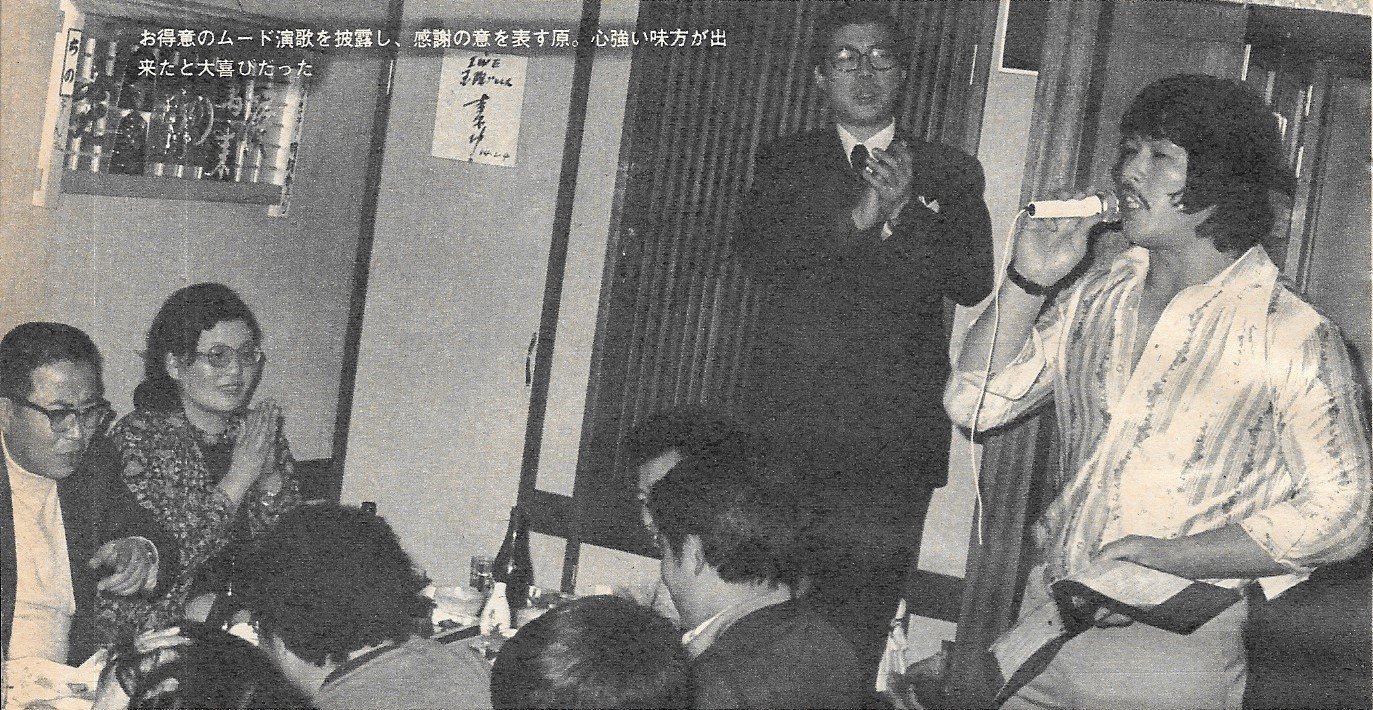
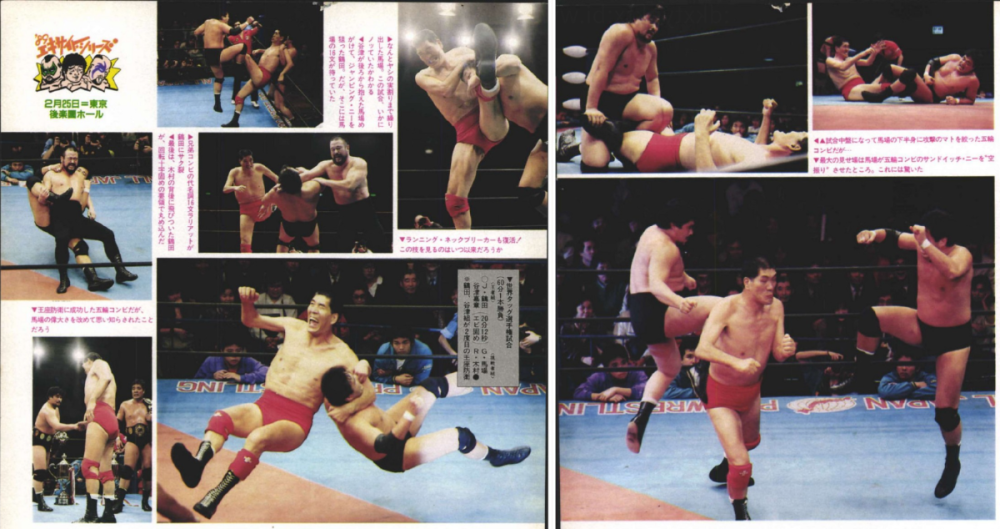
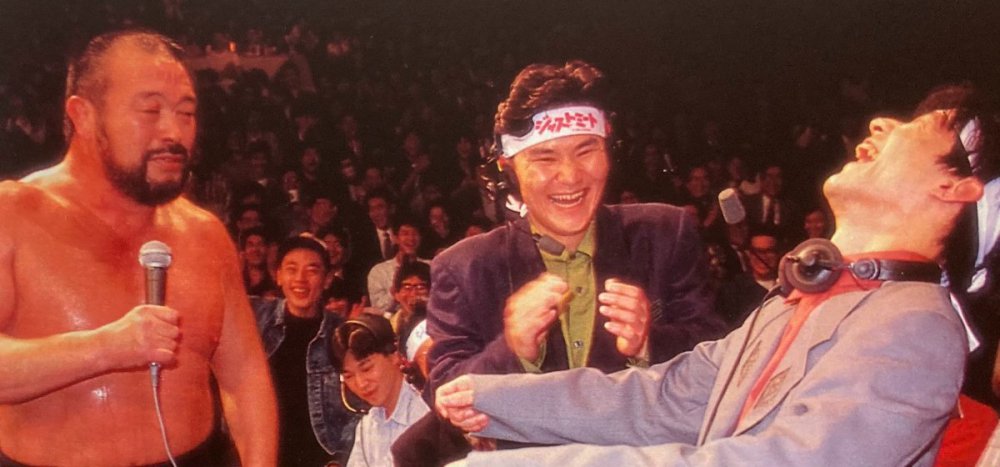
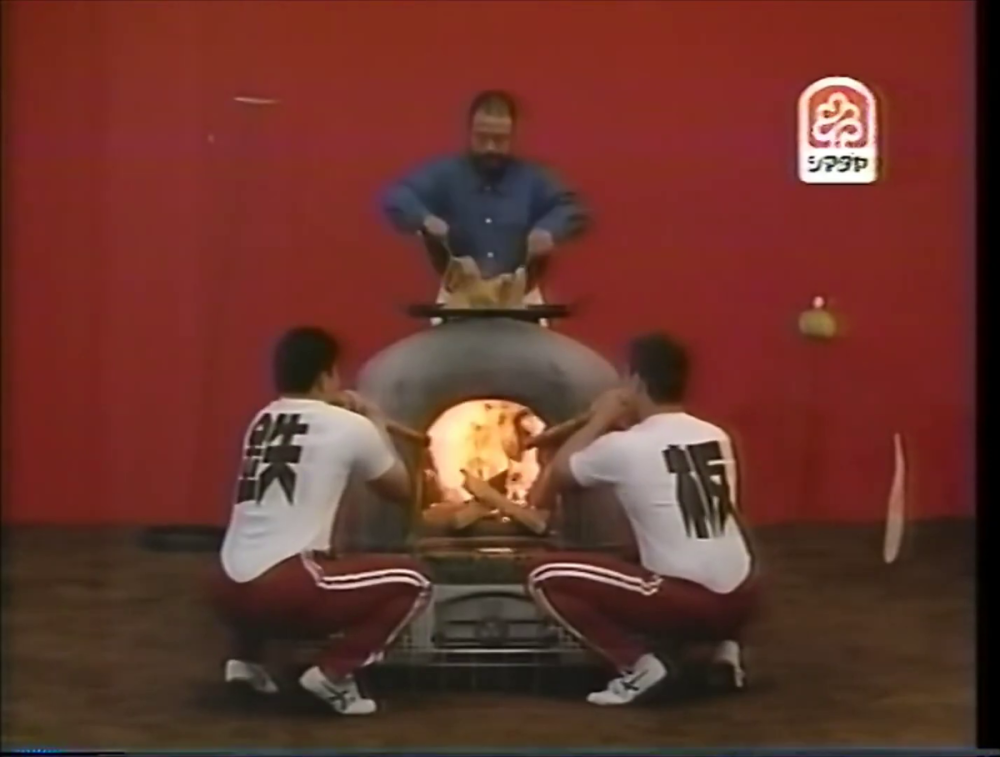
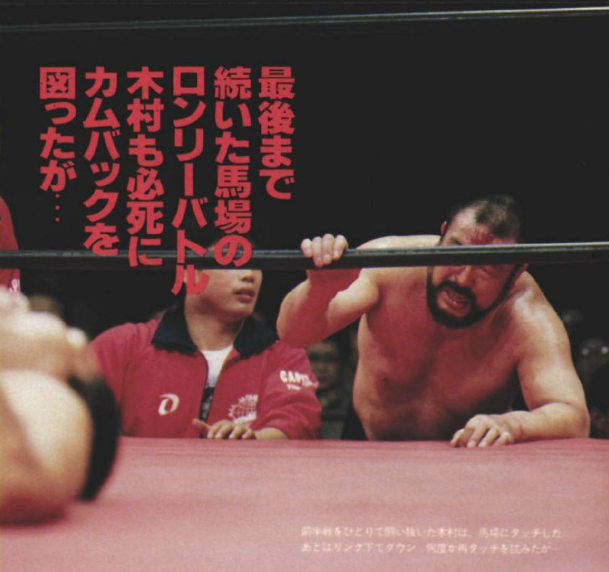
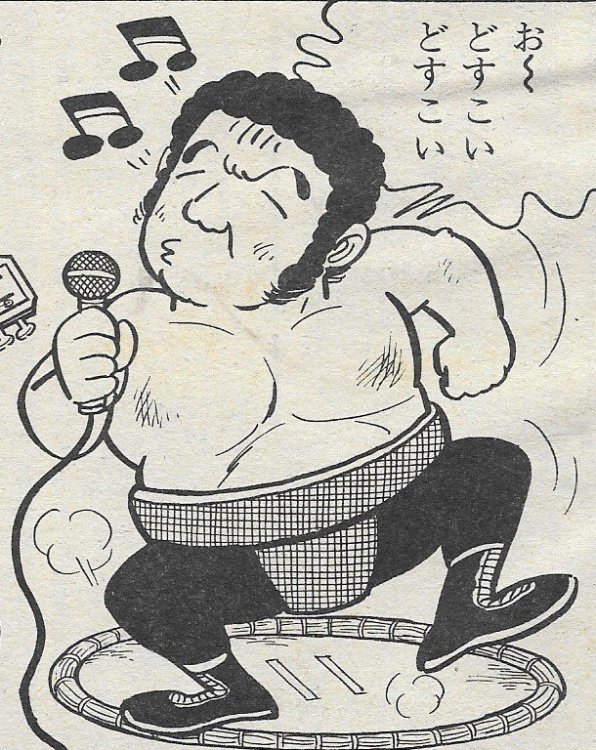
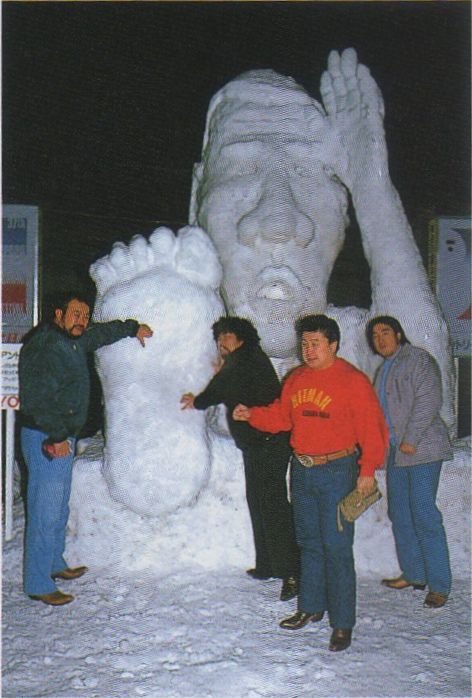
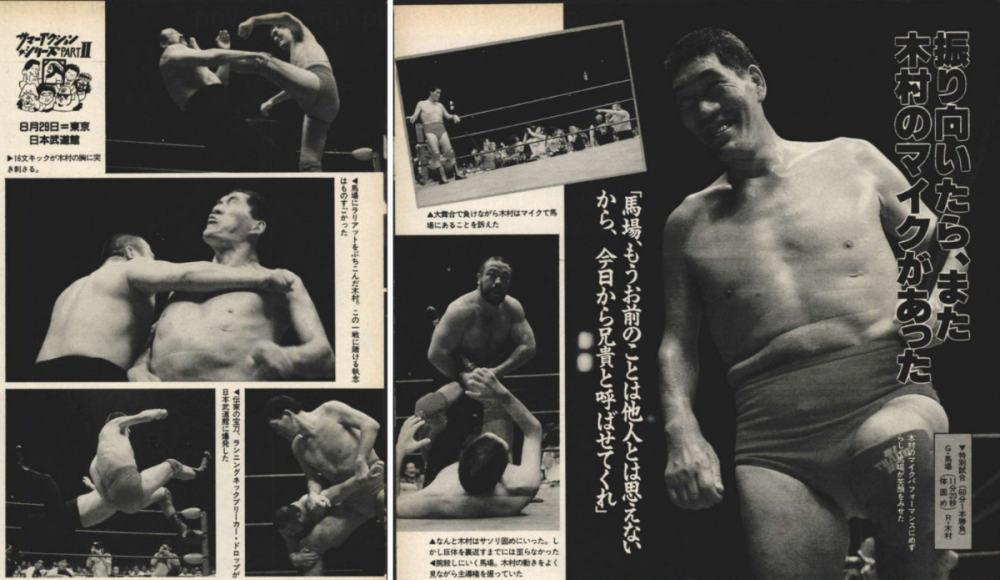
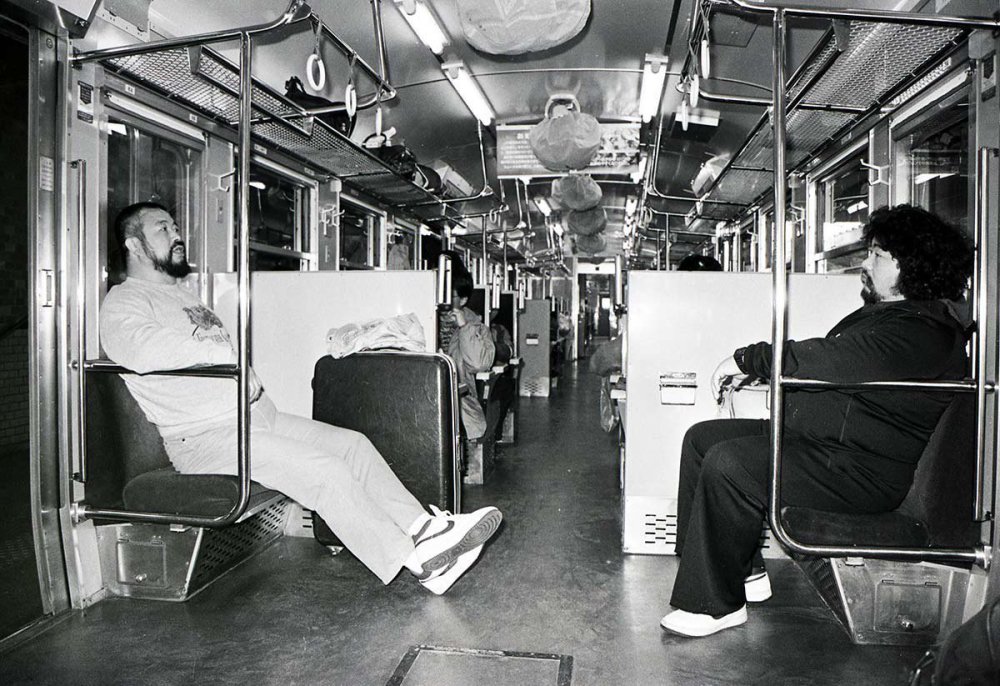
.jpg.fa77b5bf192445fd4b03419f817b1bbe.jpg)
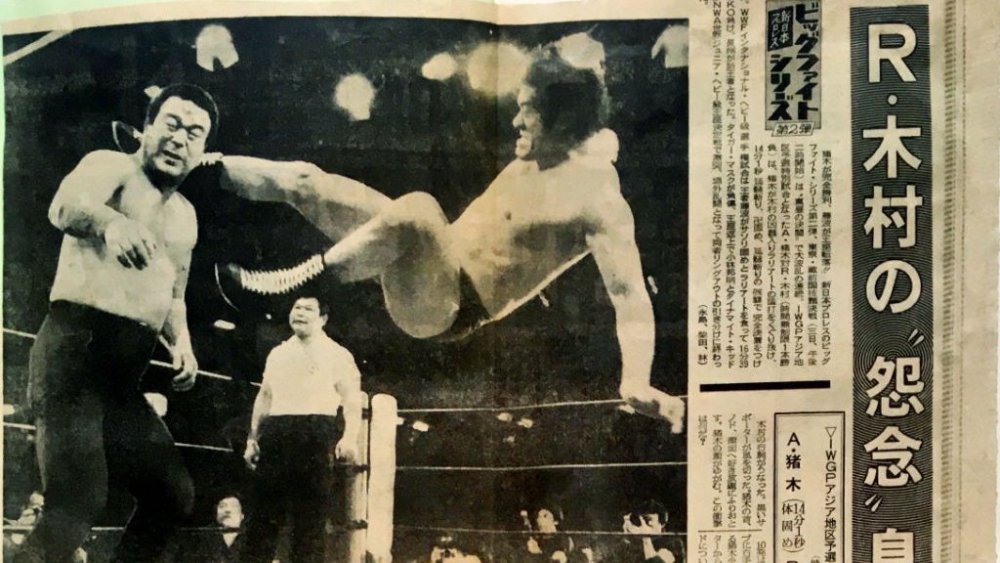
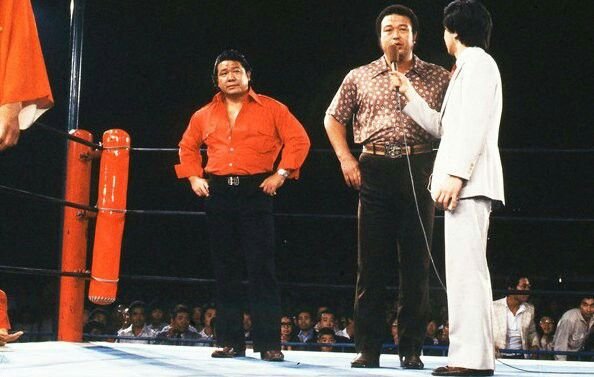
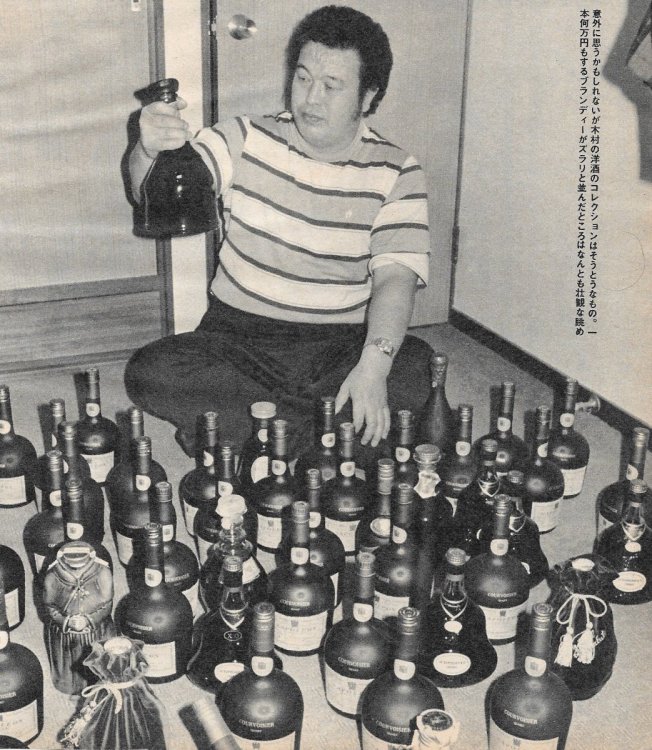

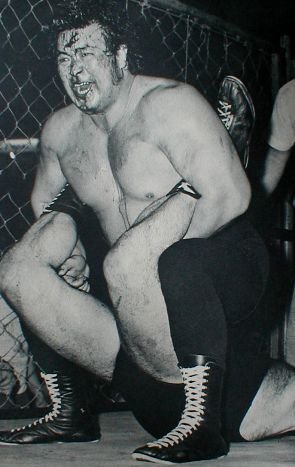
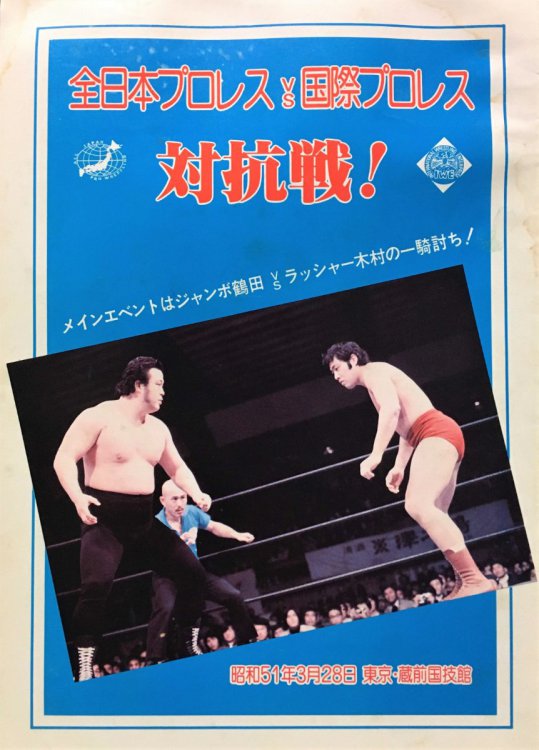
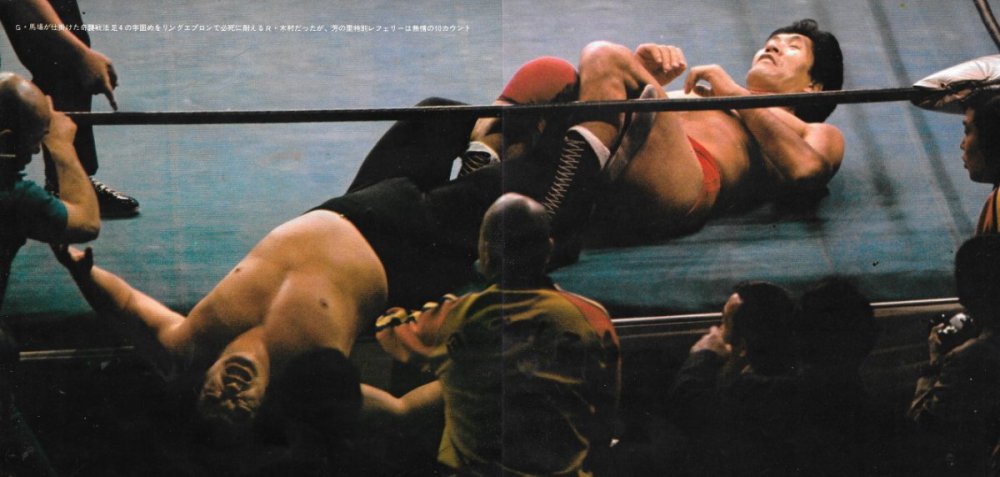
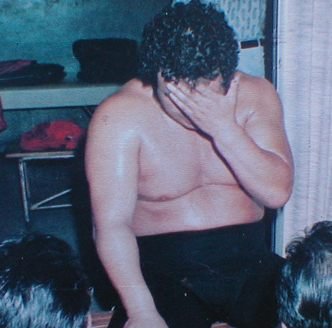
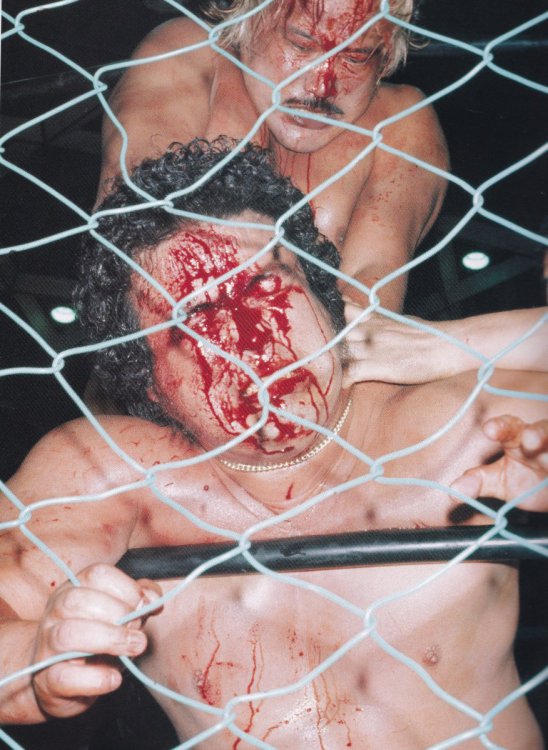
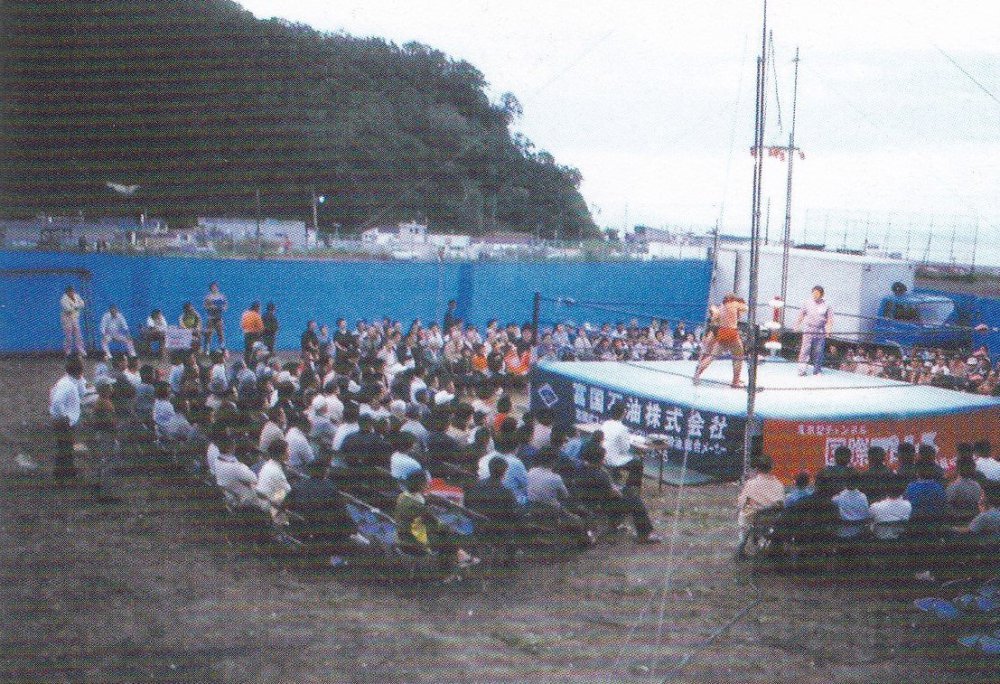
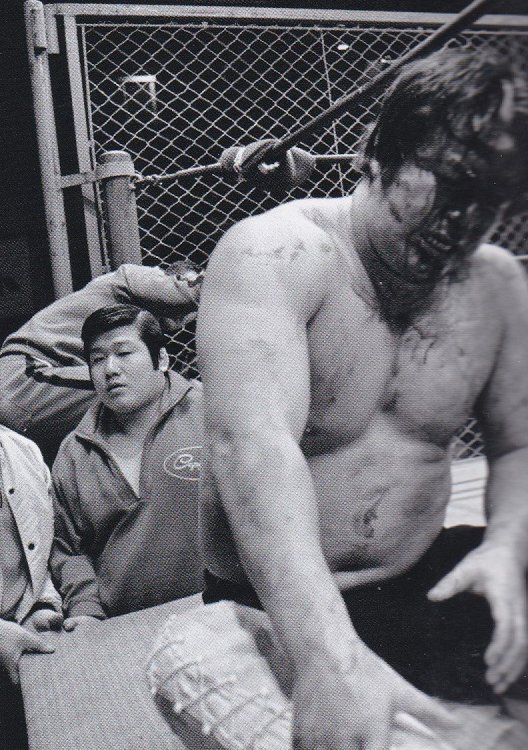
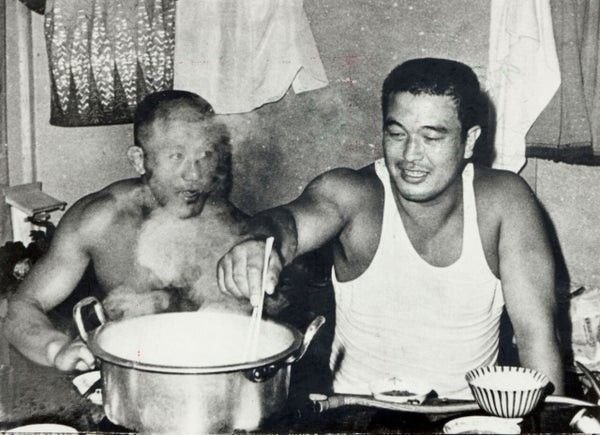
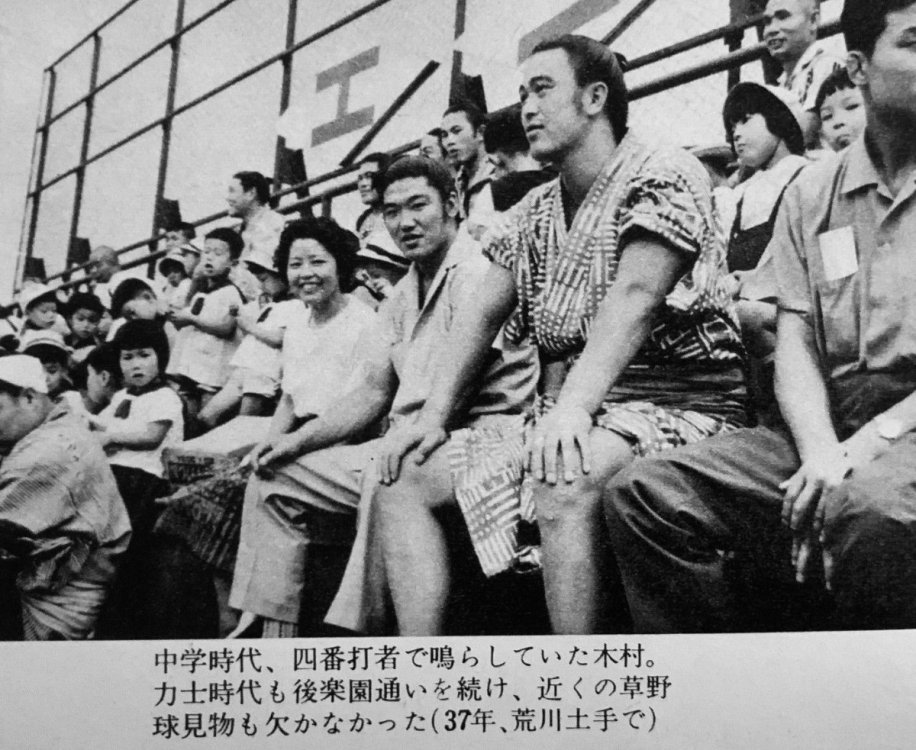
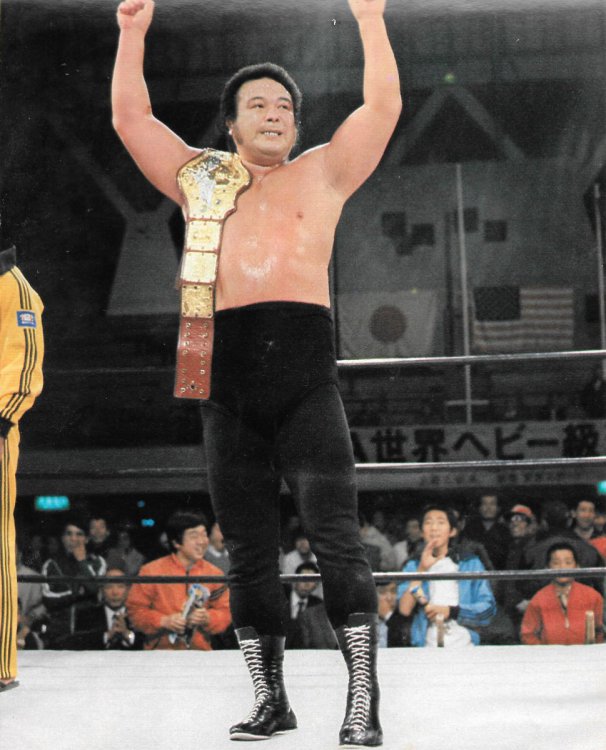
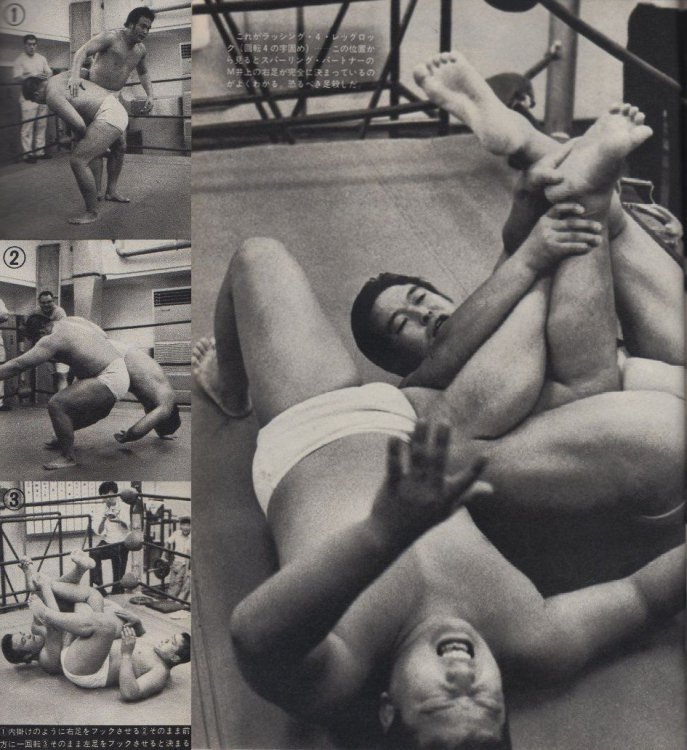
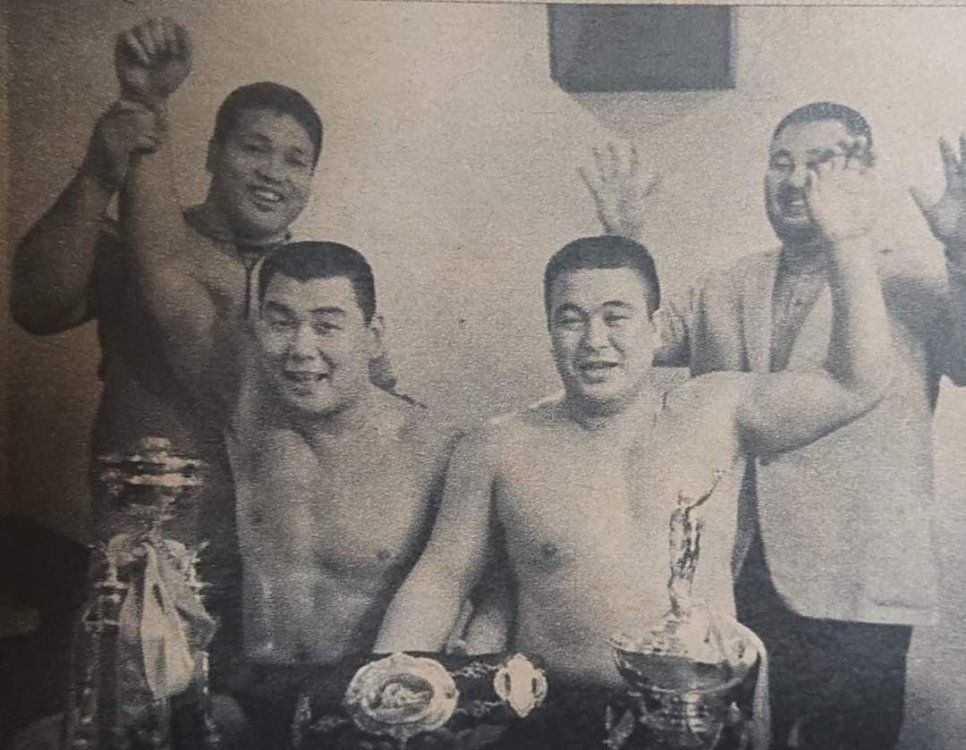
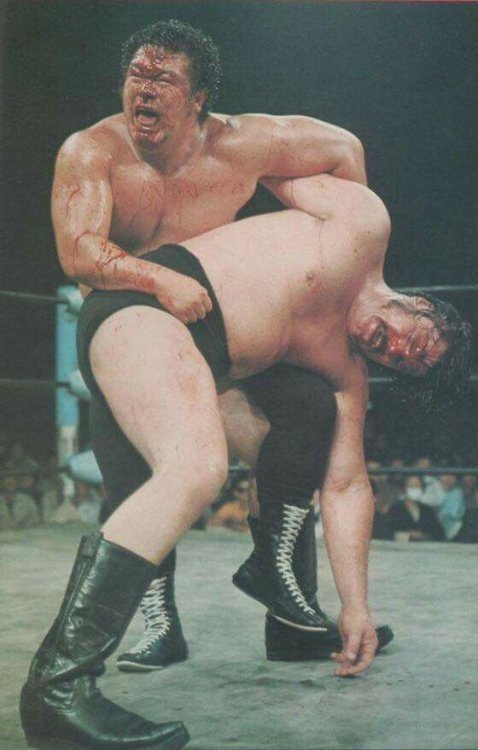
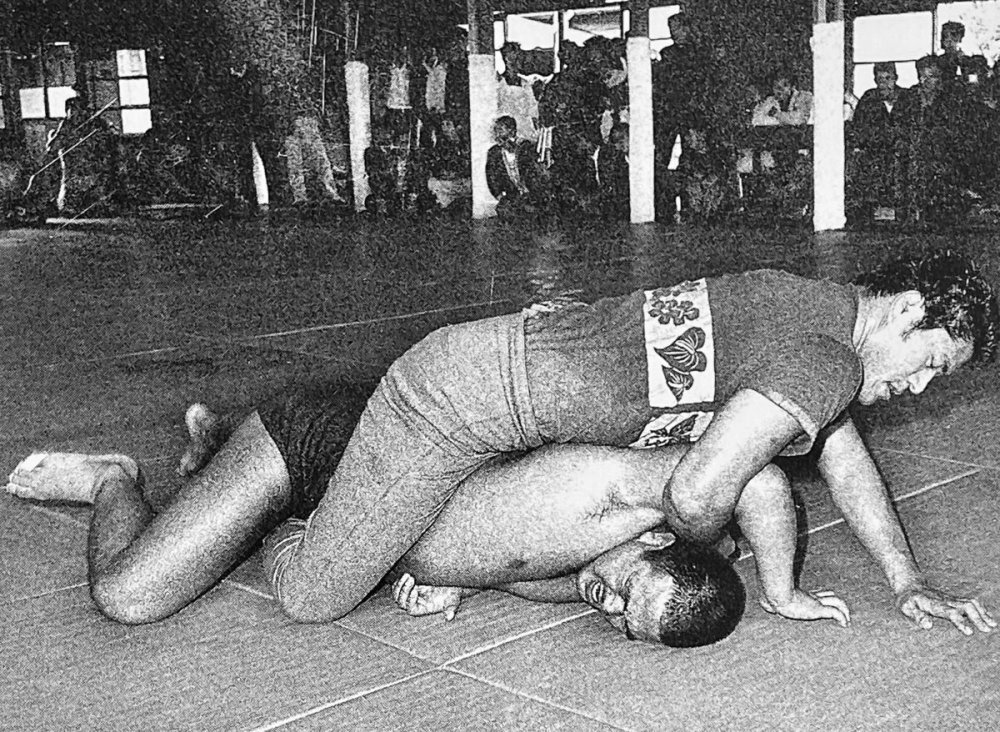
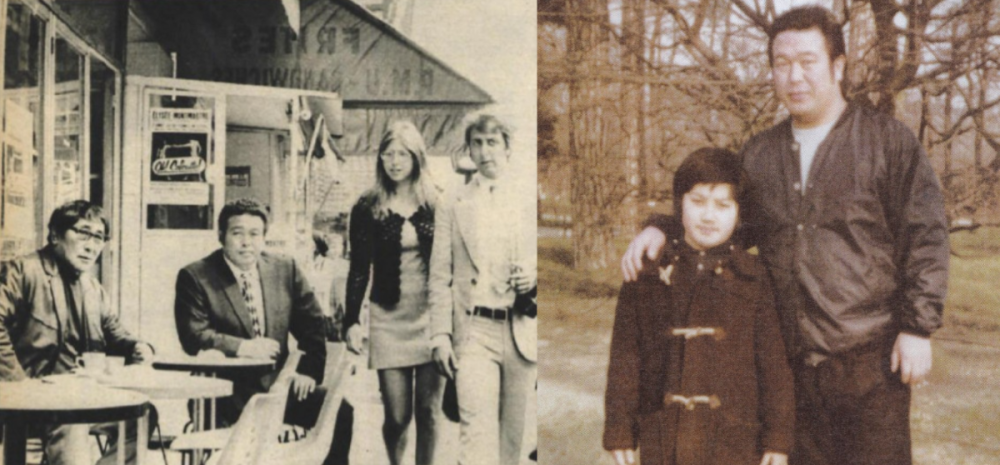
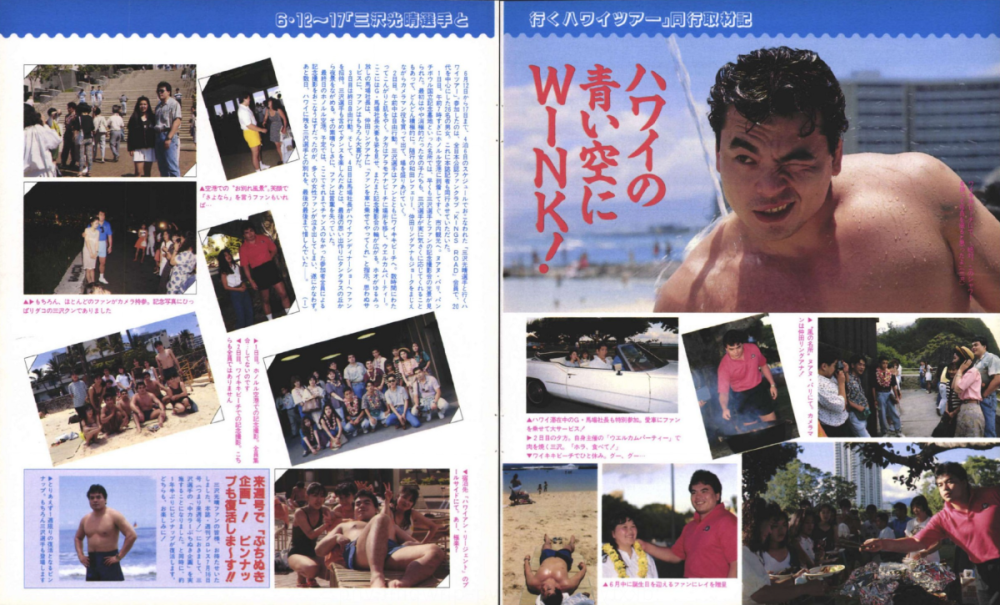
.thumb.png.7236959efe18c0351ddd28f77b47d61c.png)

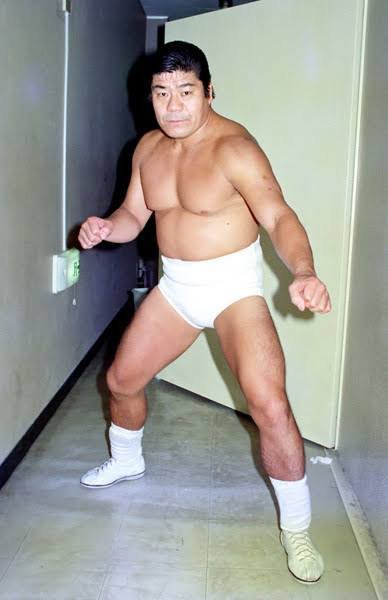
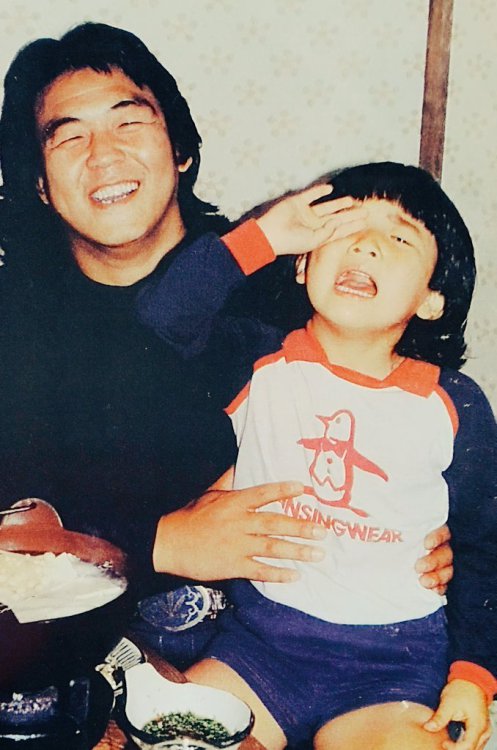
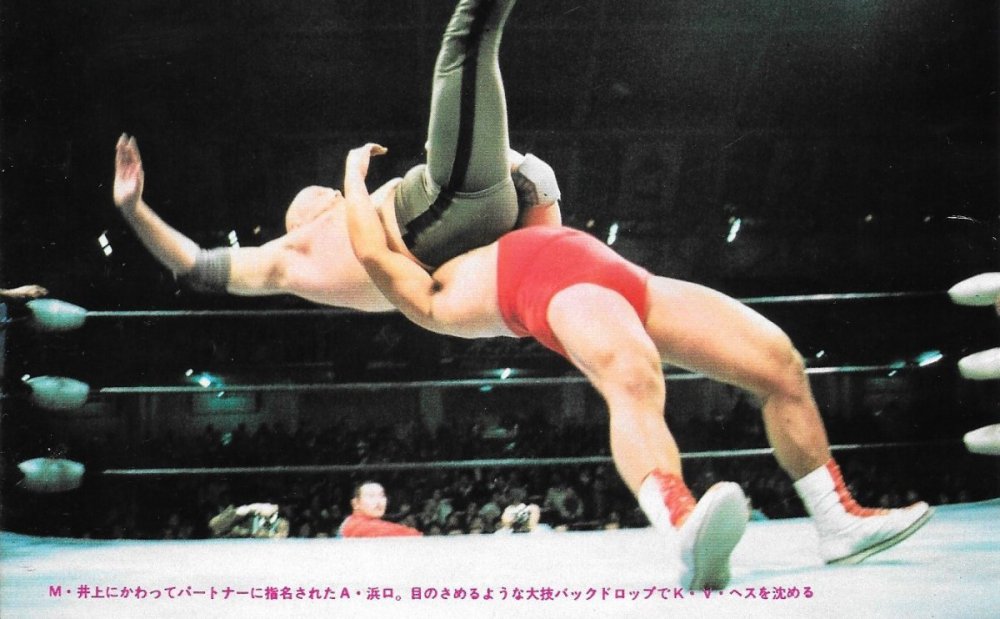
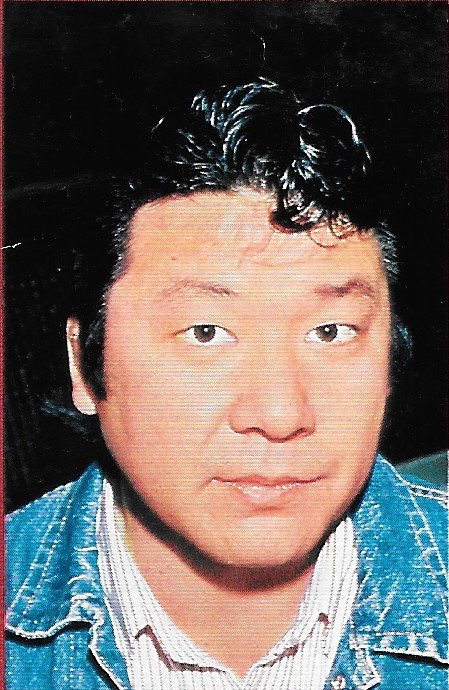
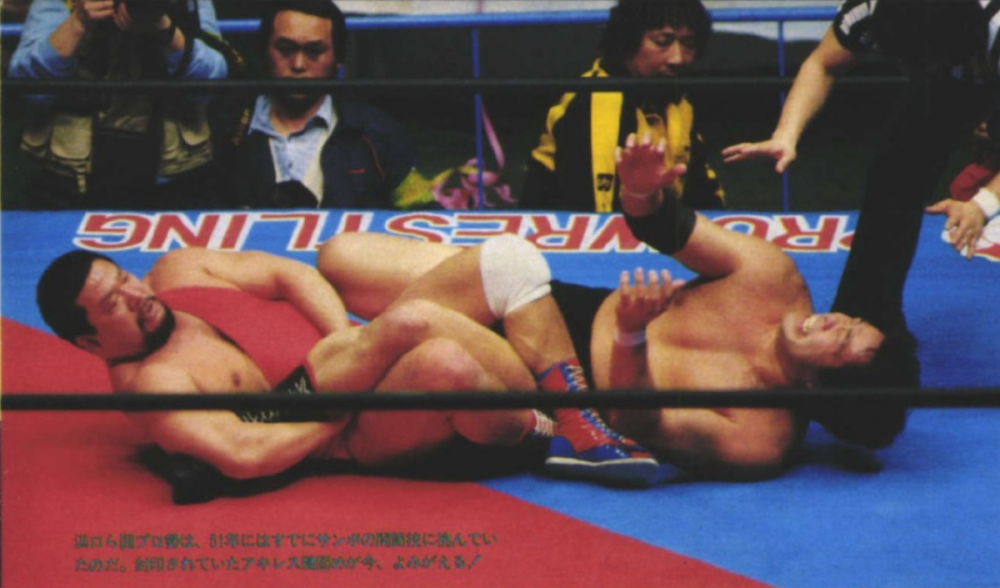
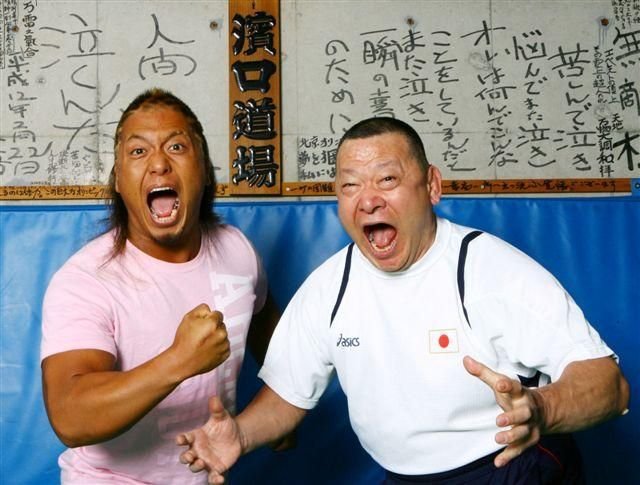
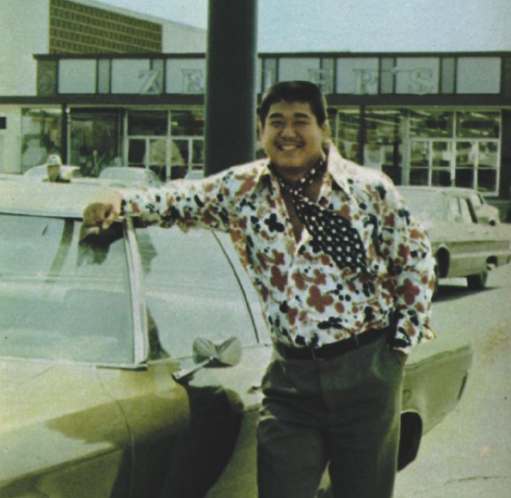
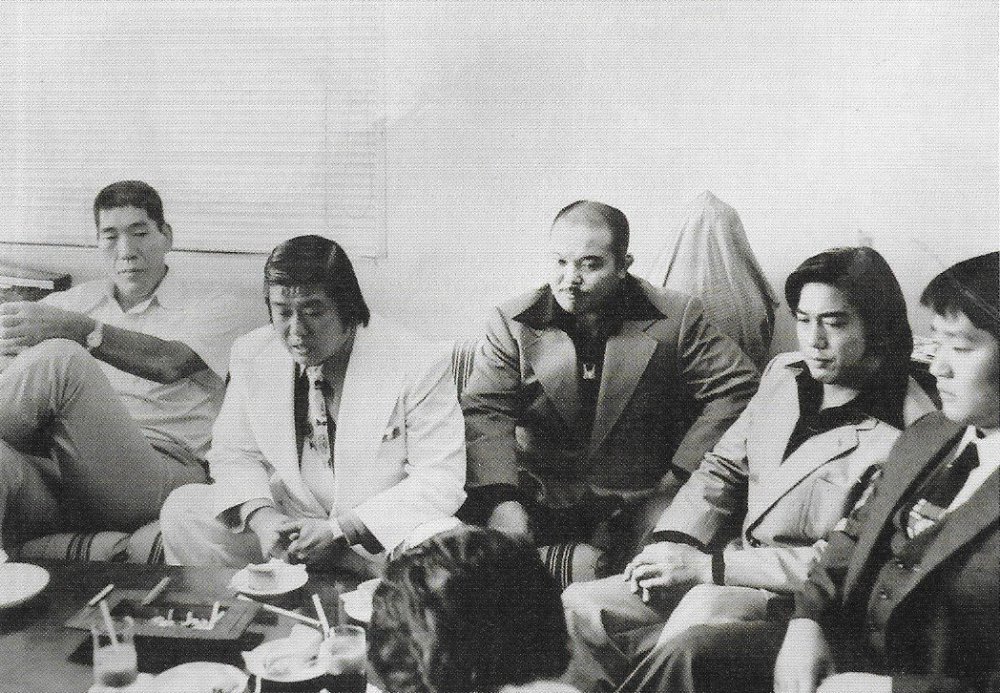
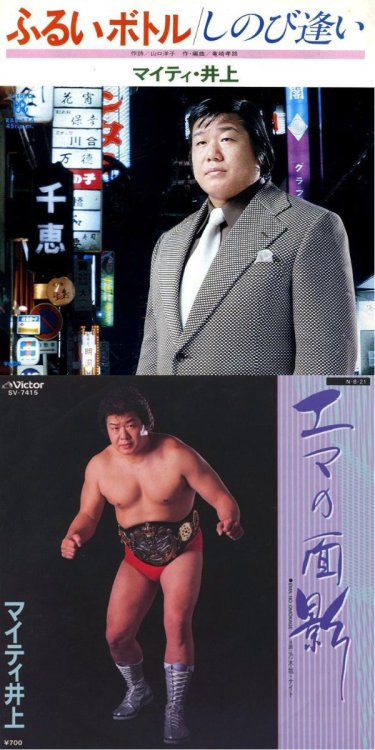
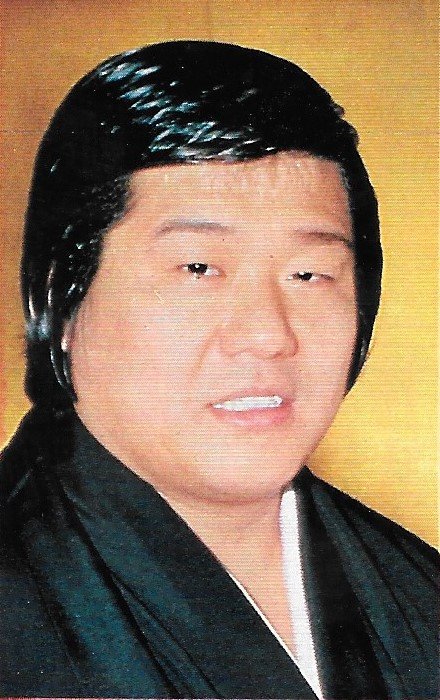
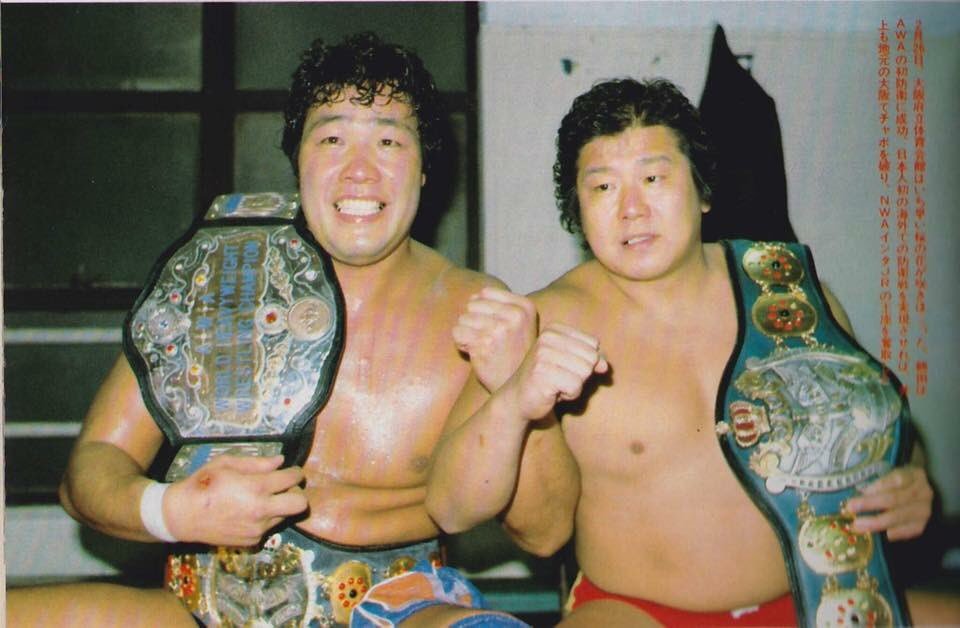
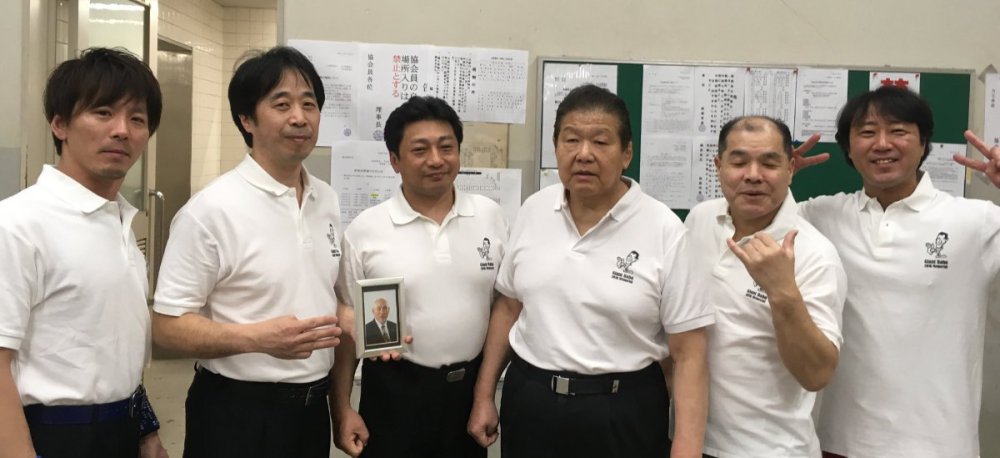
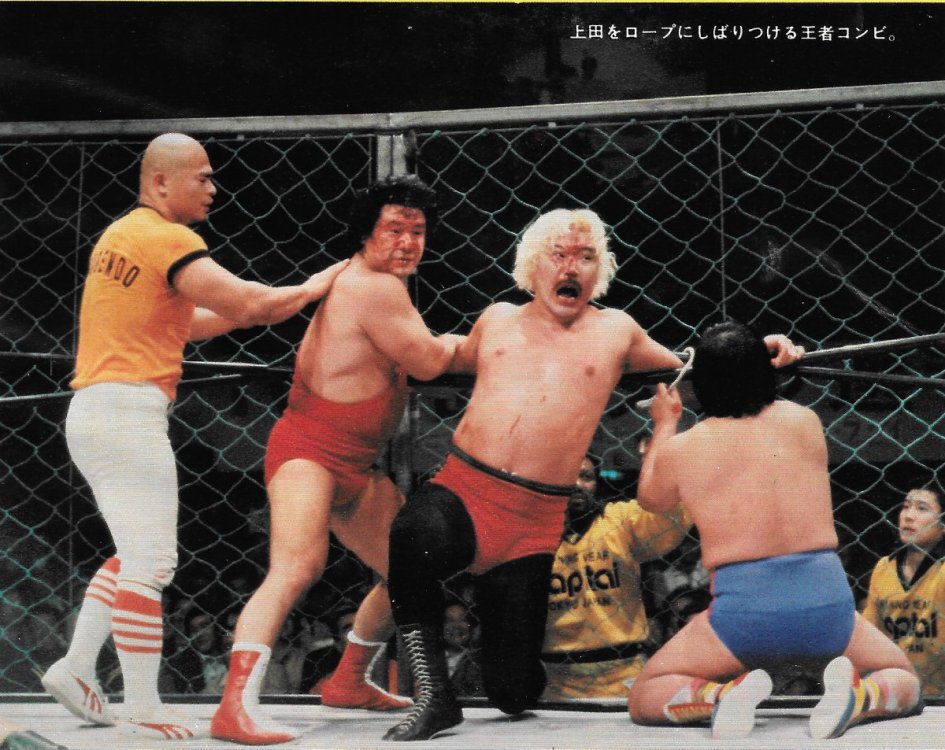
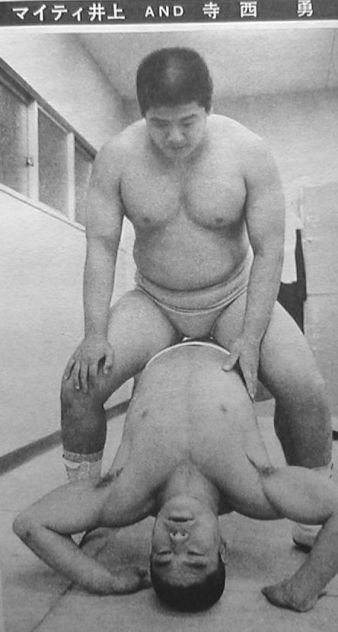
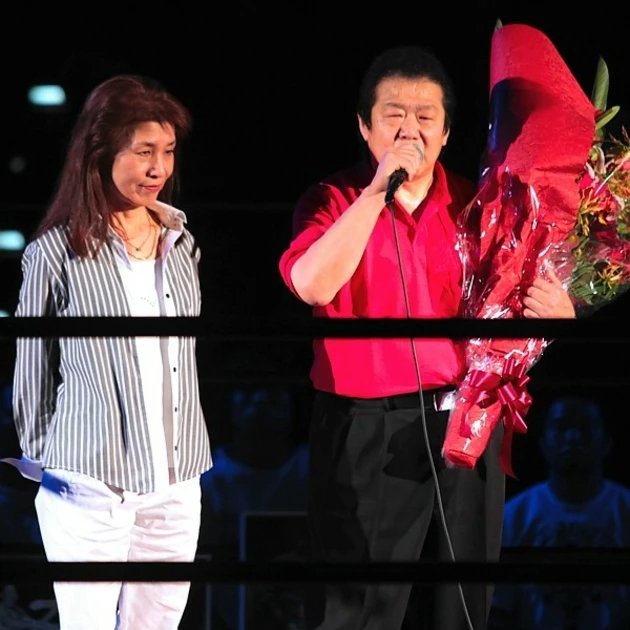
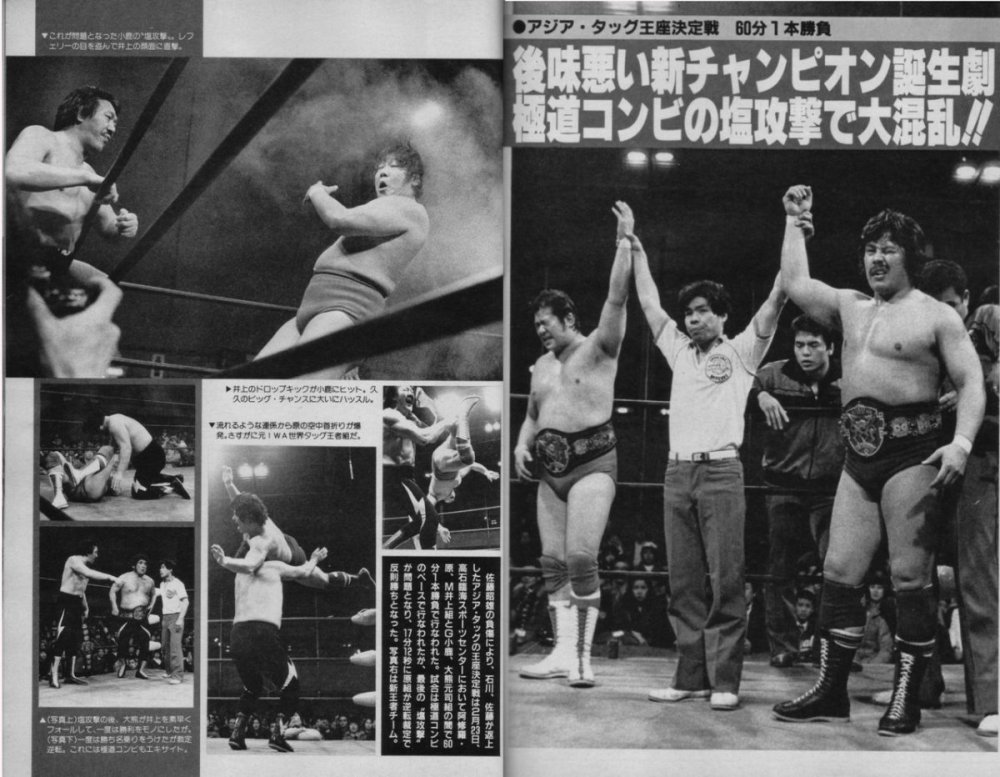
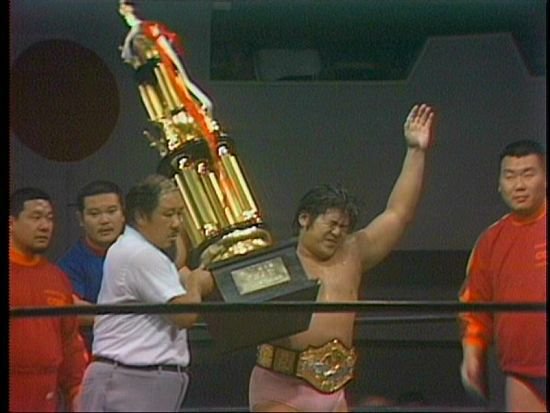
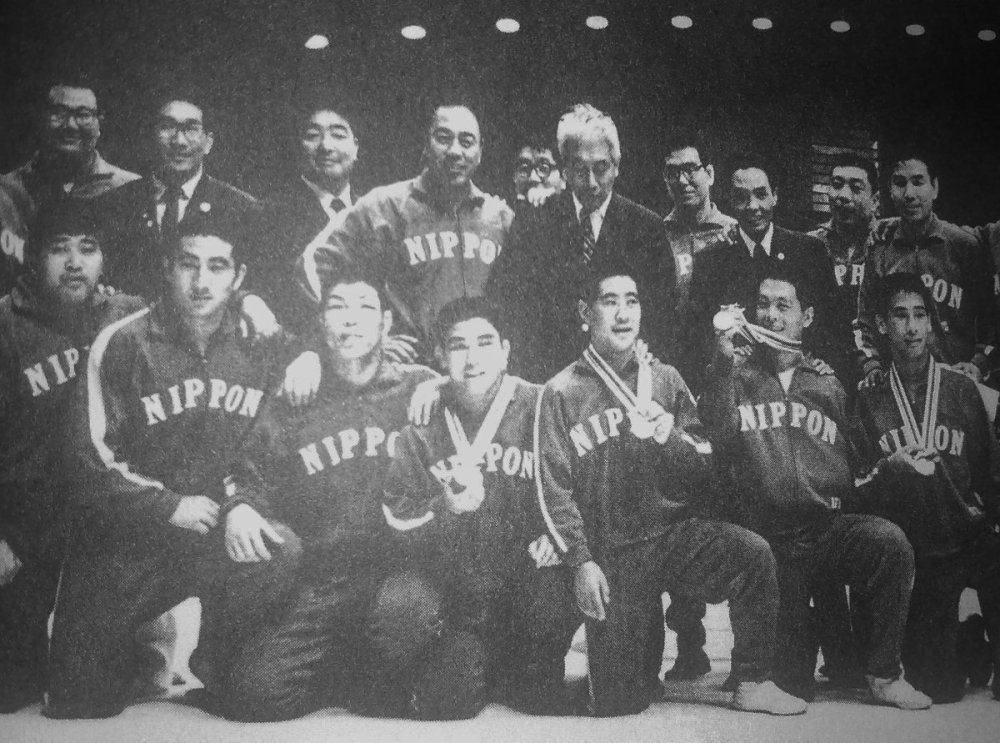
.thumb.jpg.0f962e38c972cfd4745082b9451857ef.jpg)
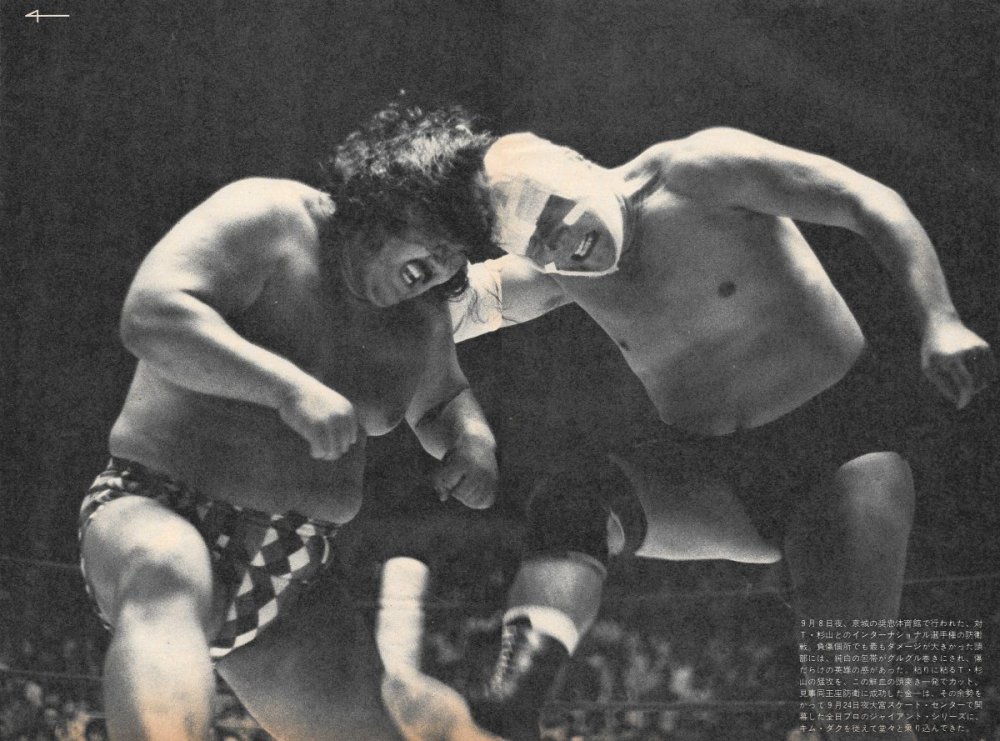
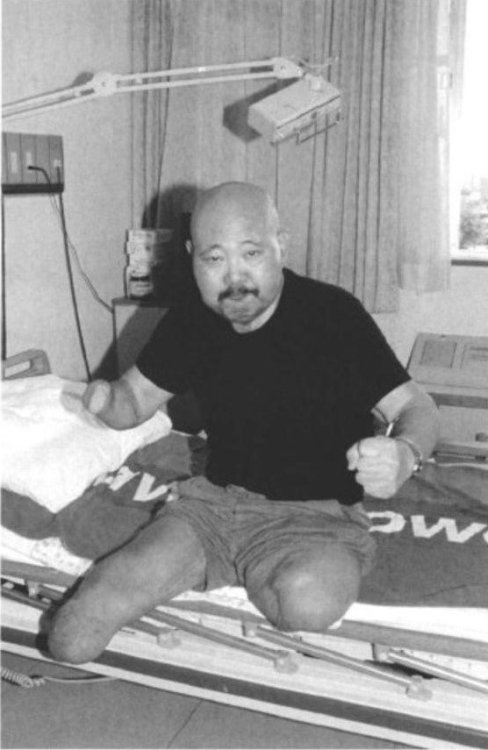
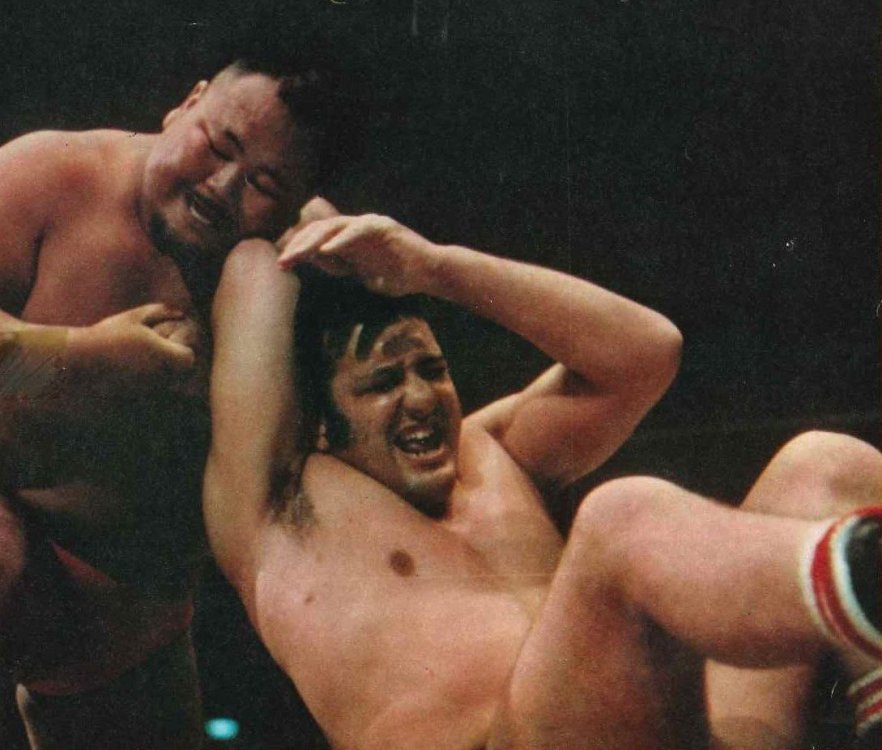

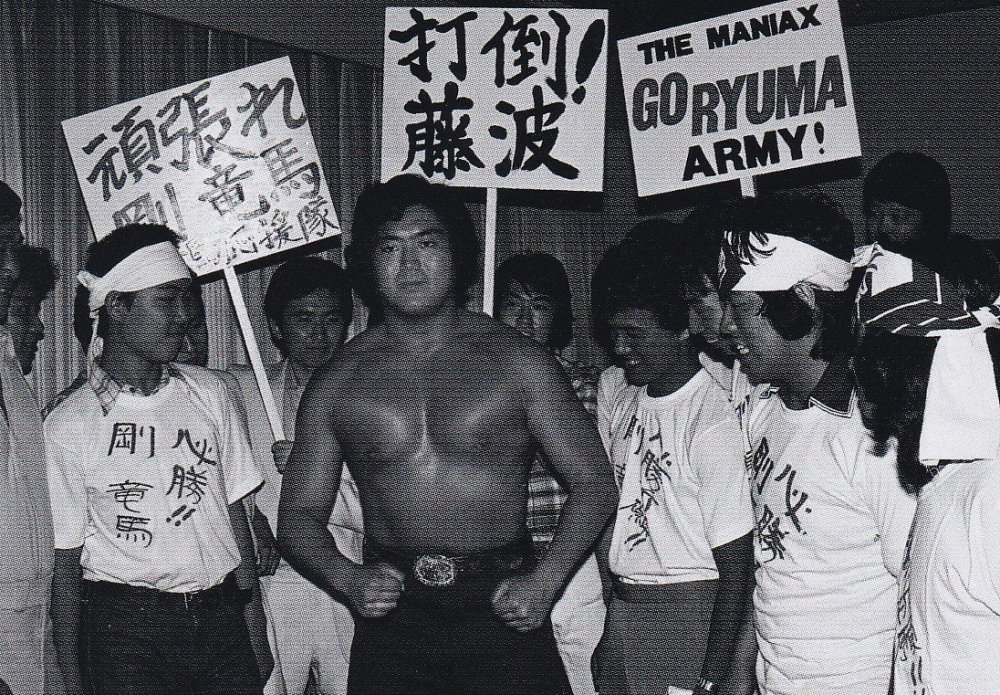
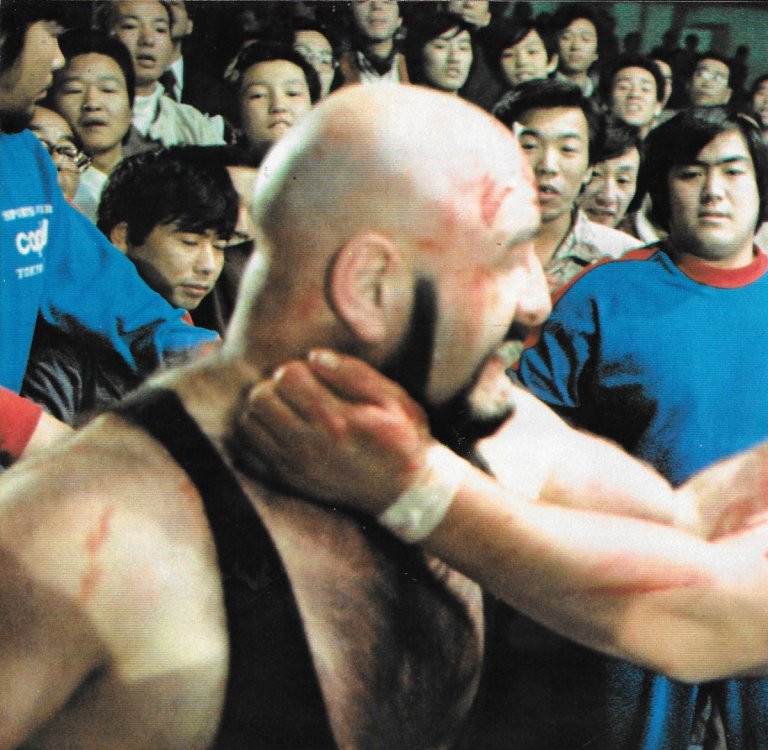
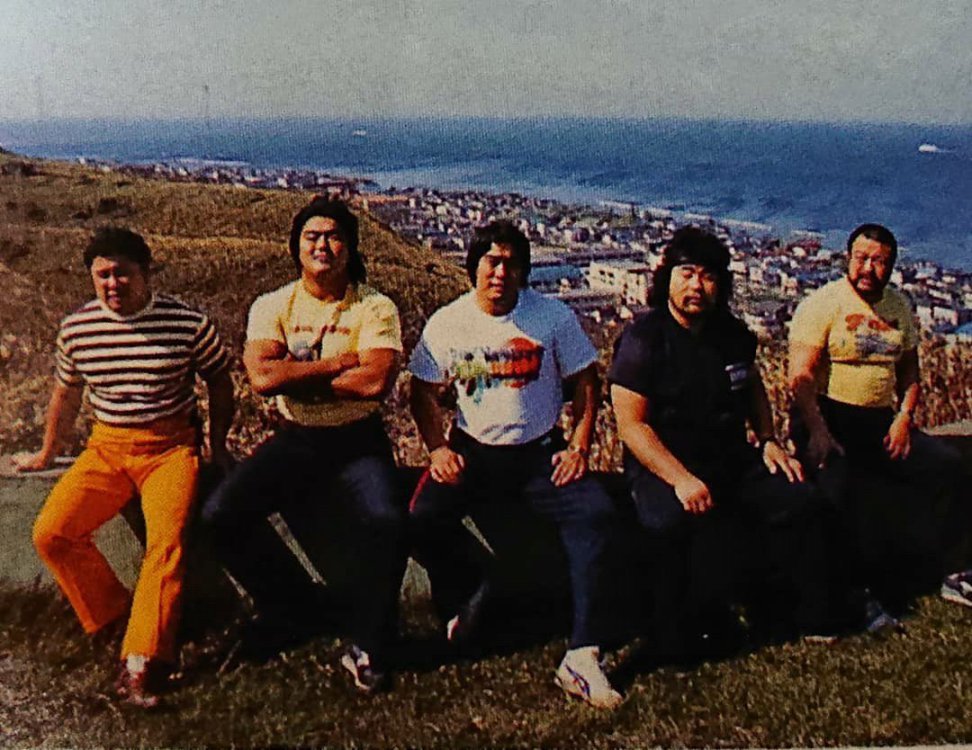
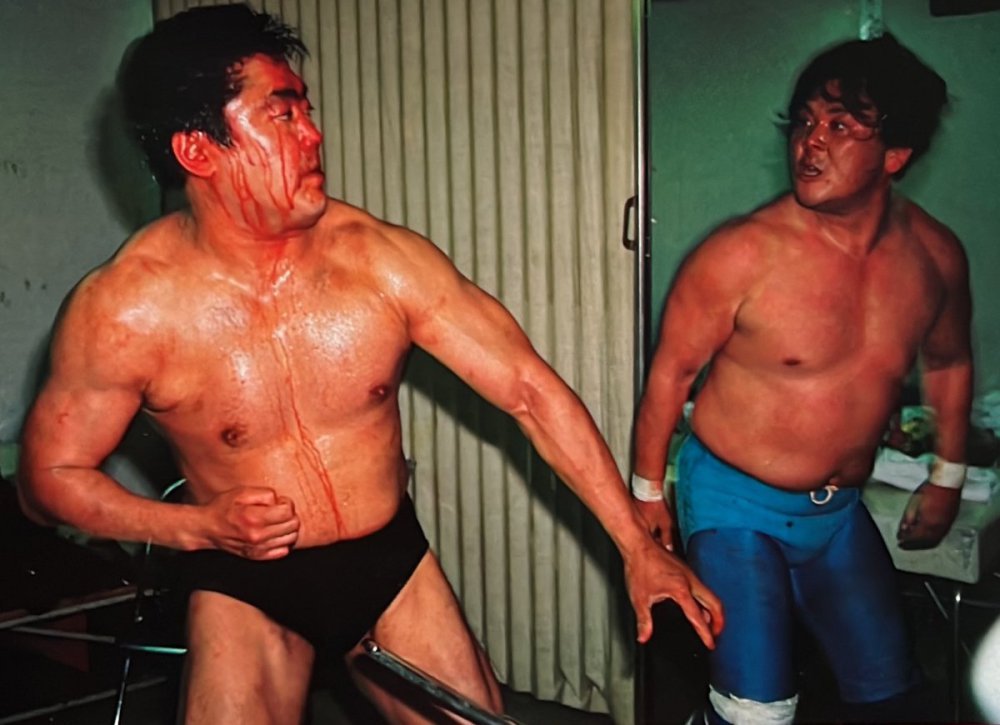
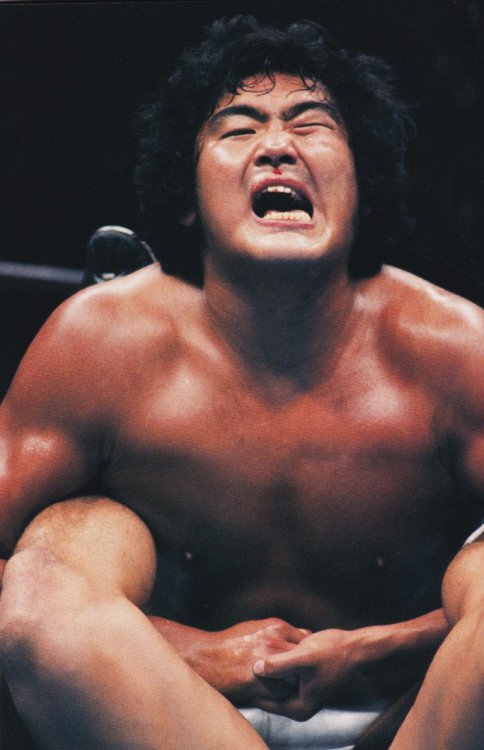
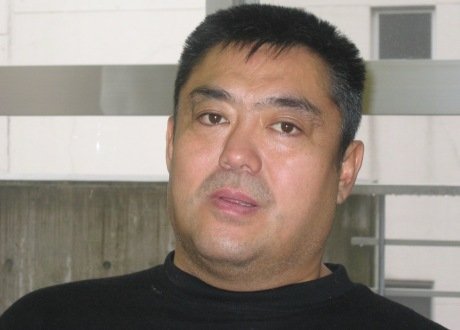

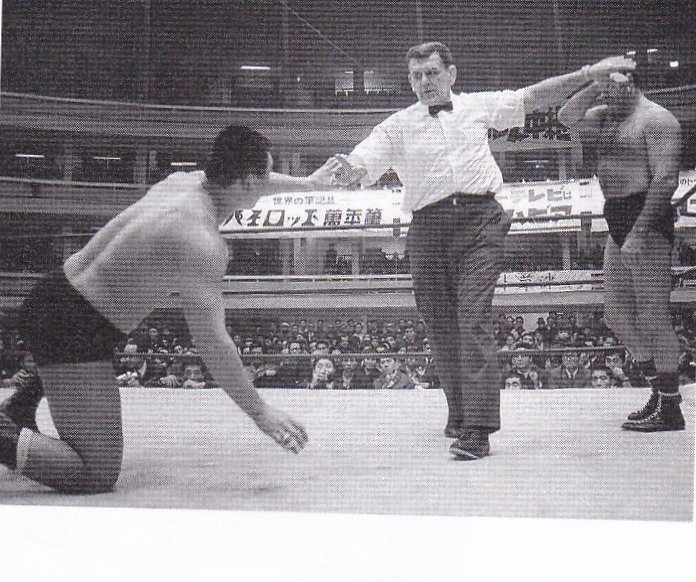

.thumb.jpg.c76b3ae3d54b4a4dc7494215c10c75d4.jpg)
